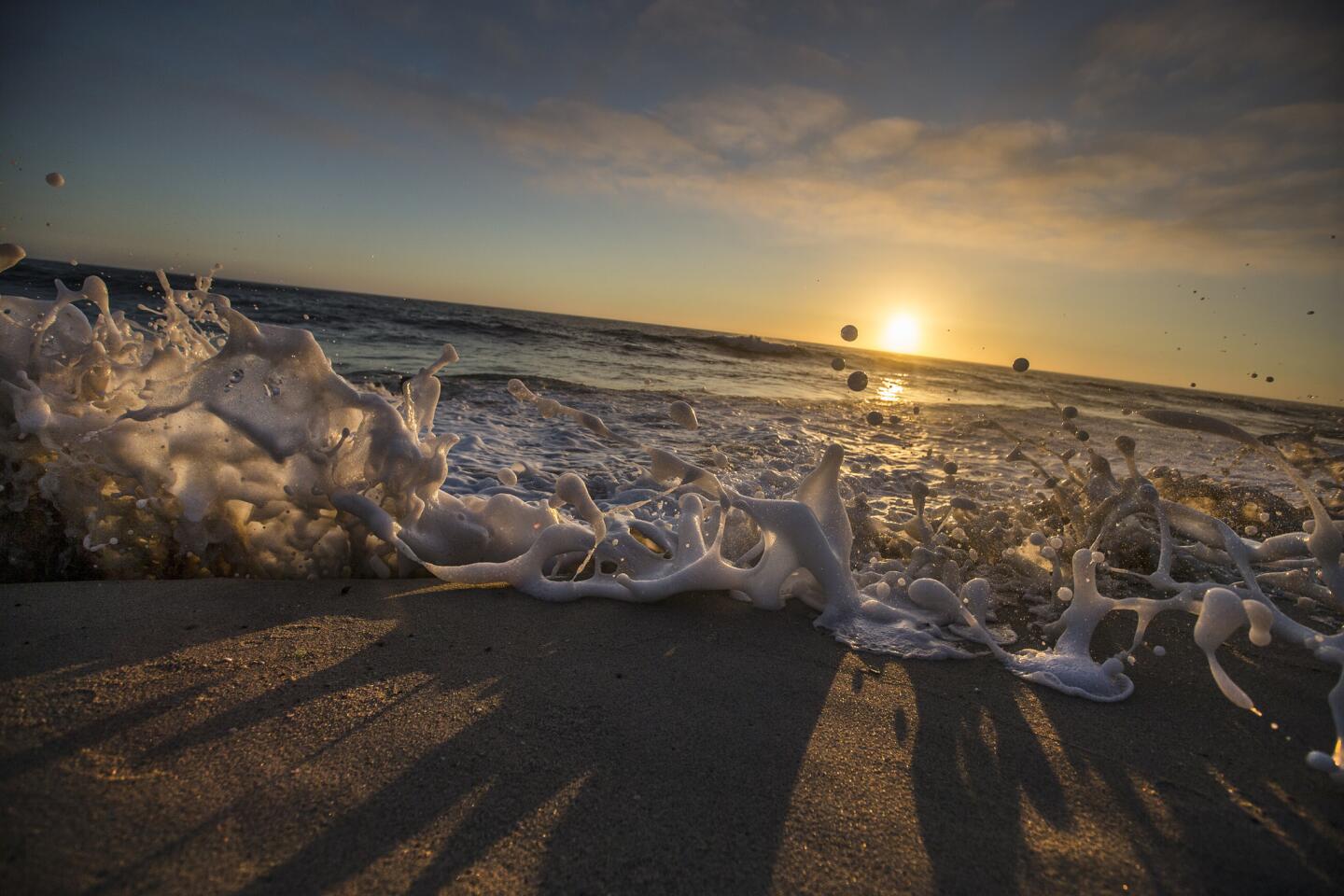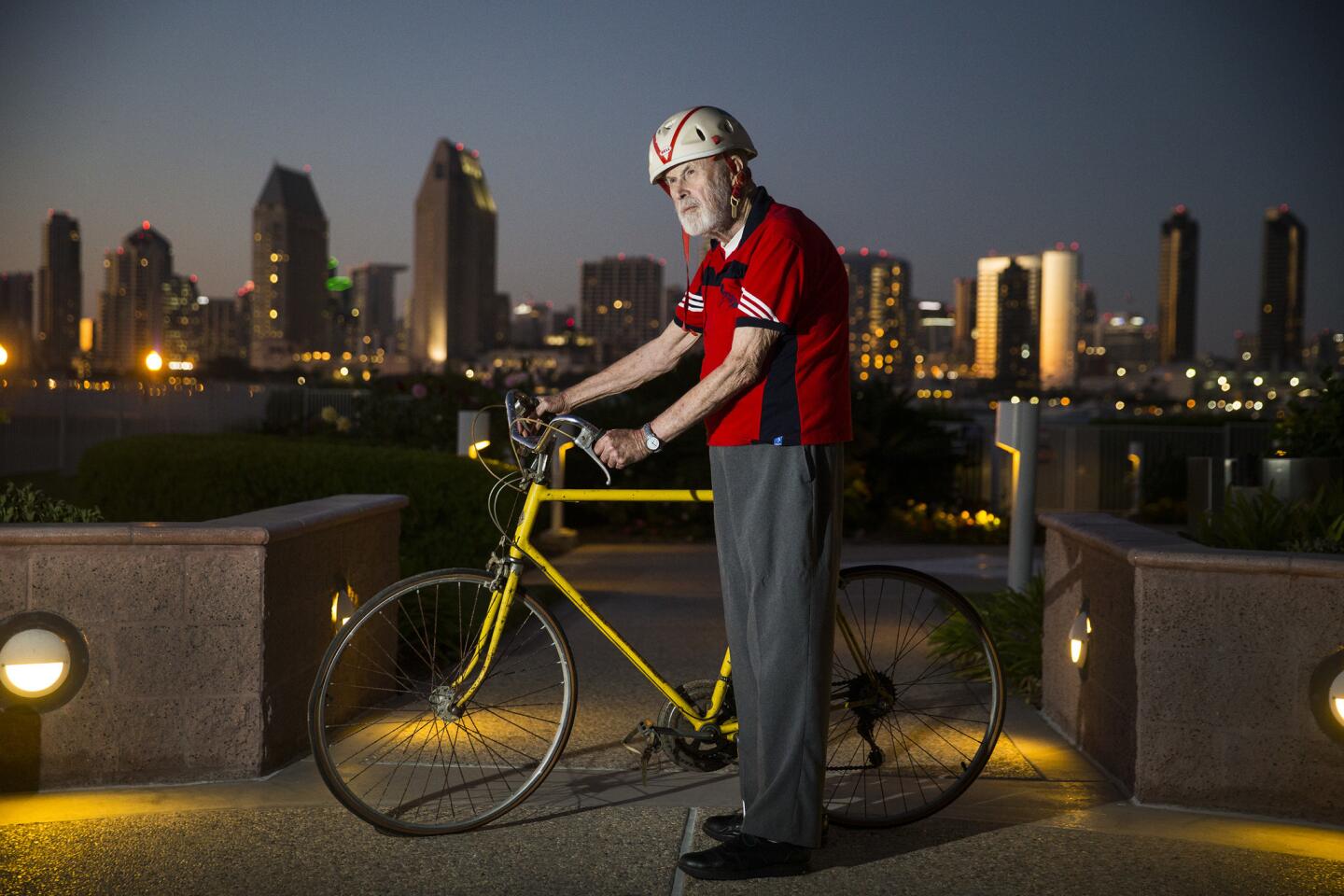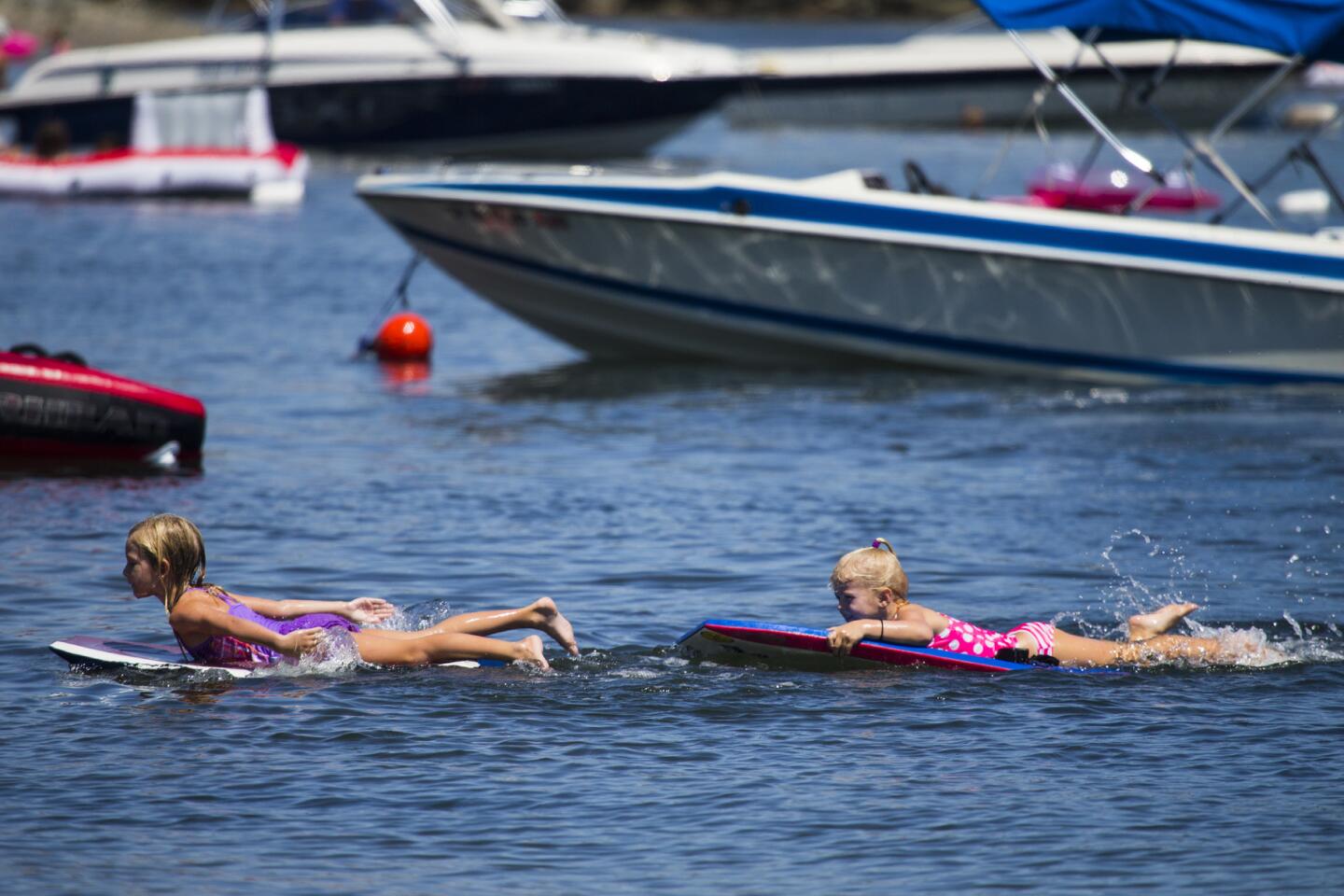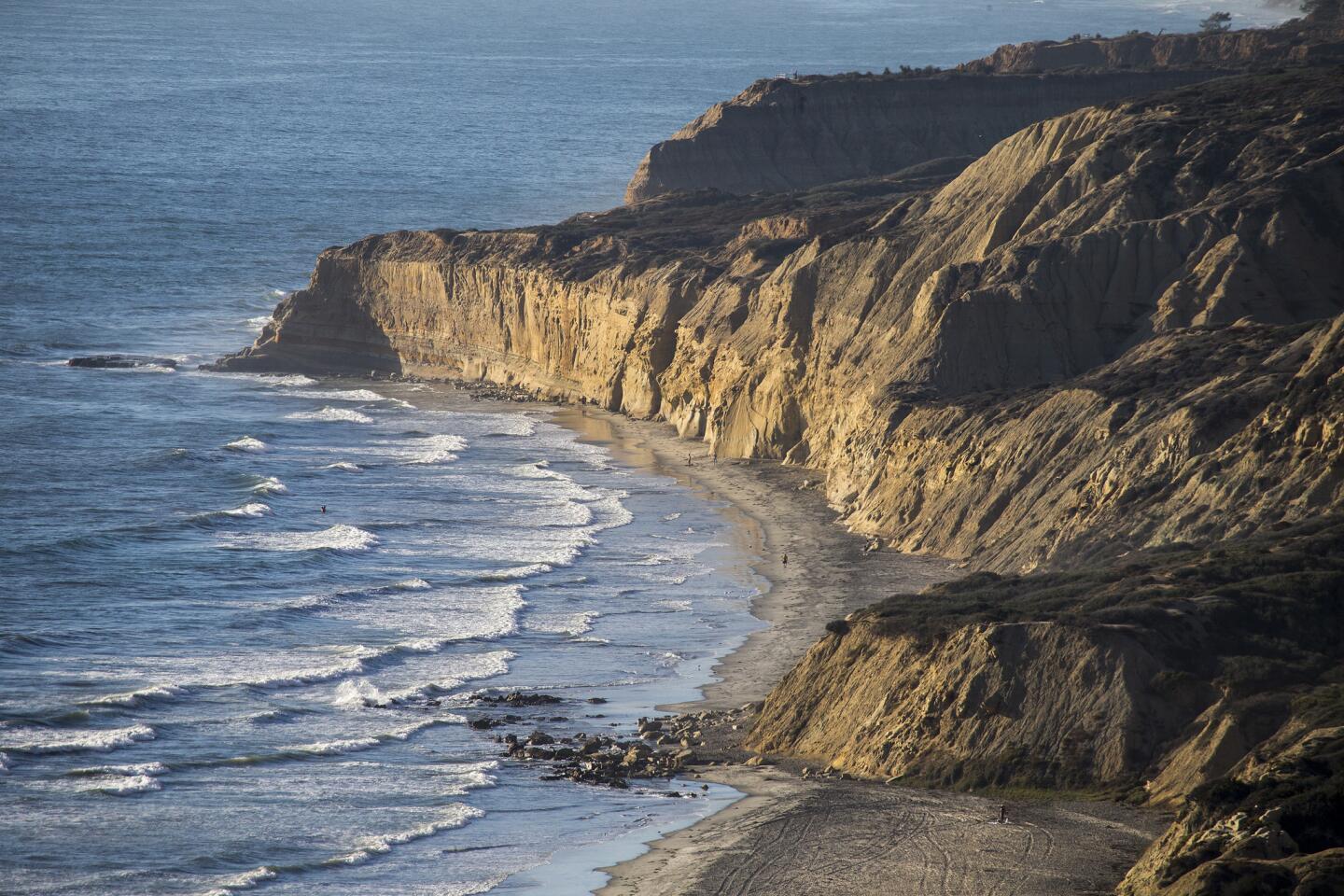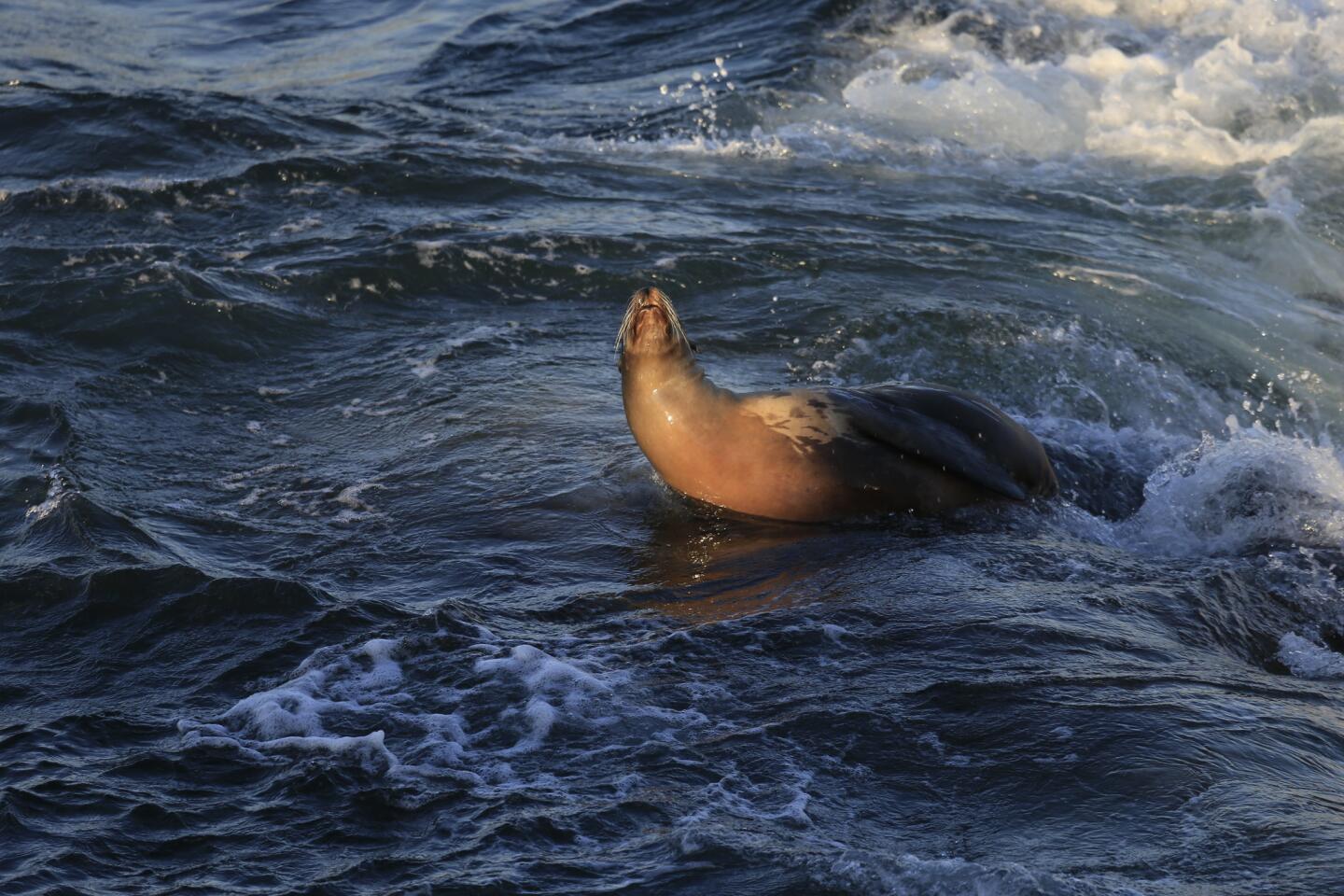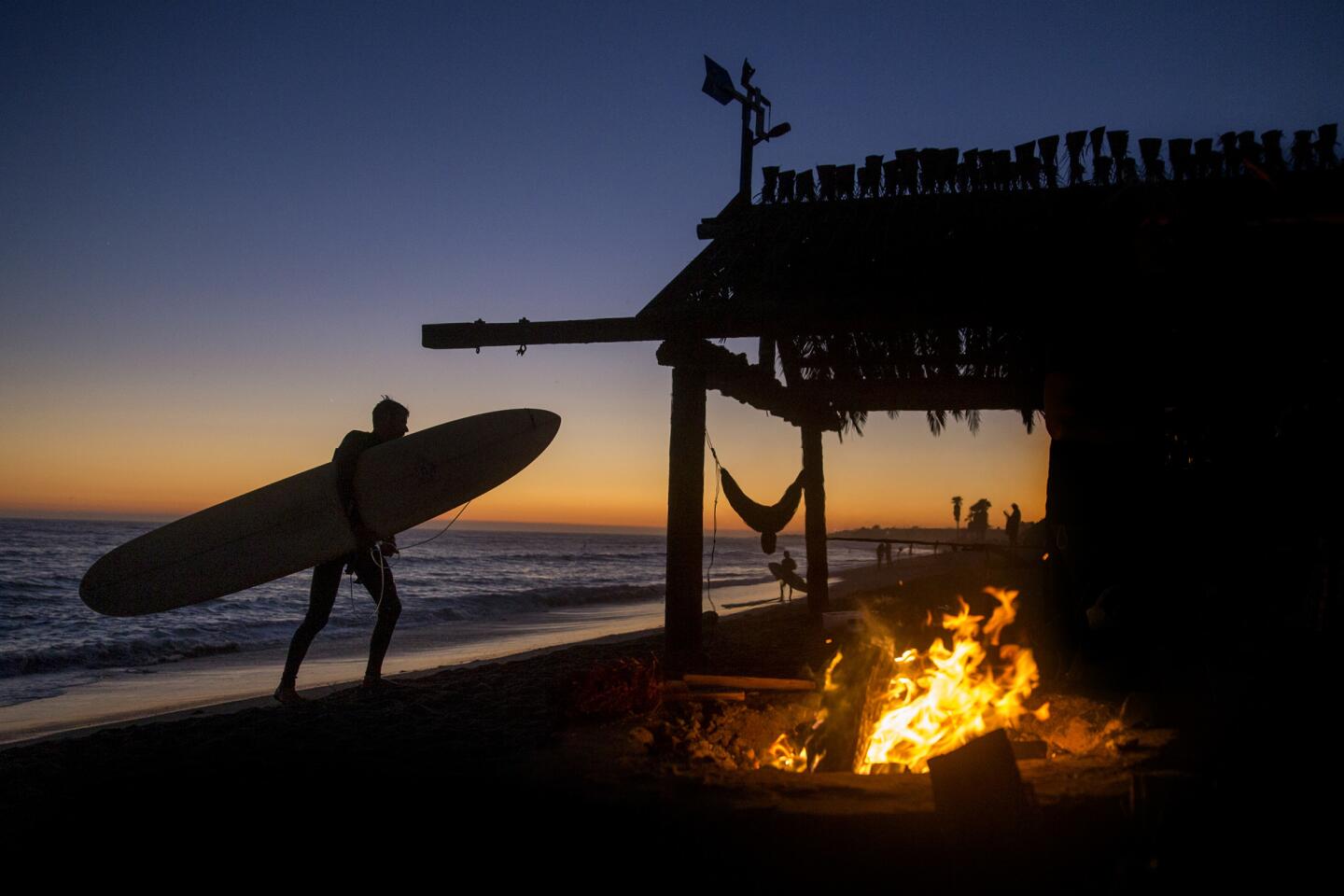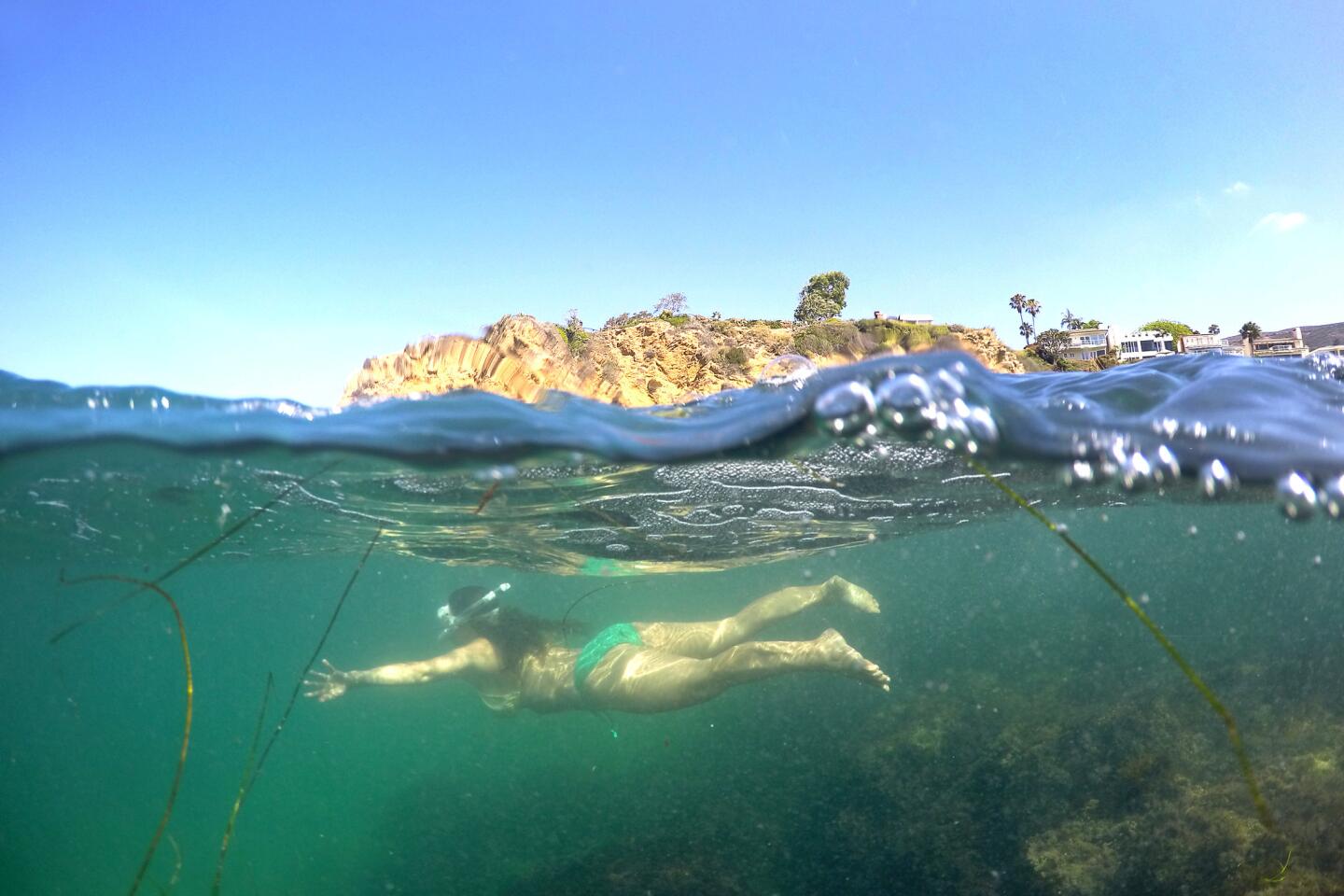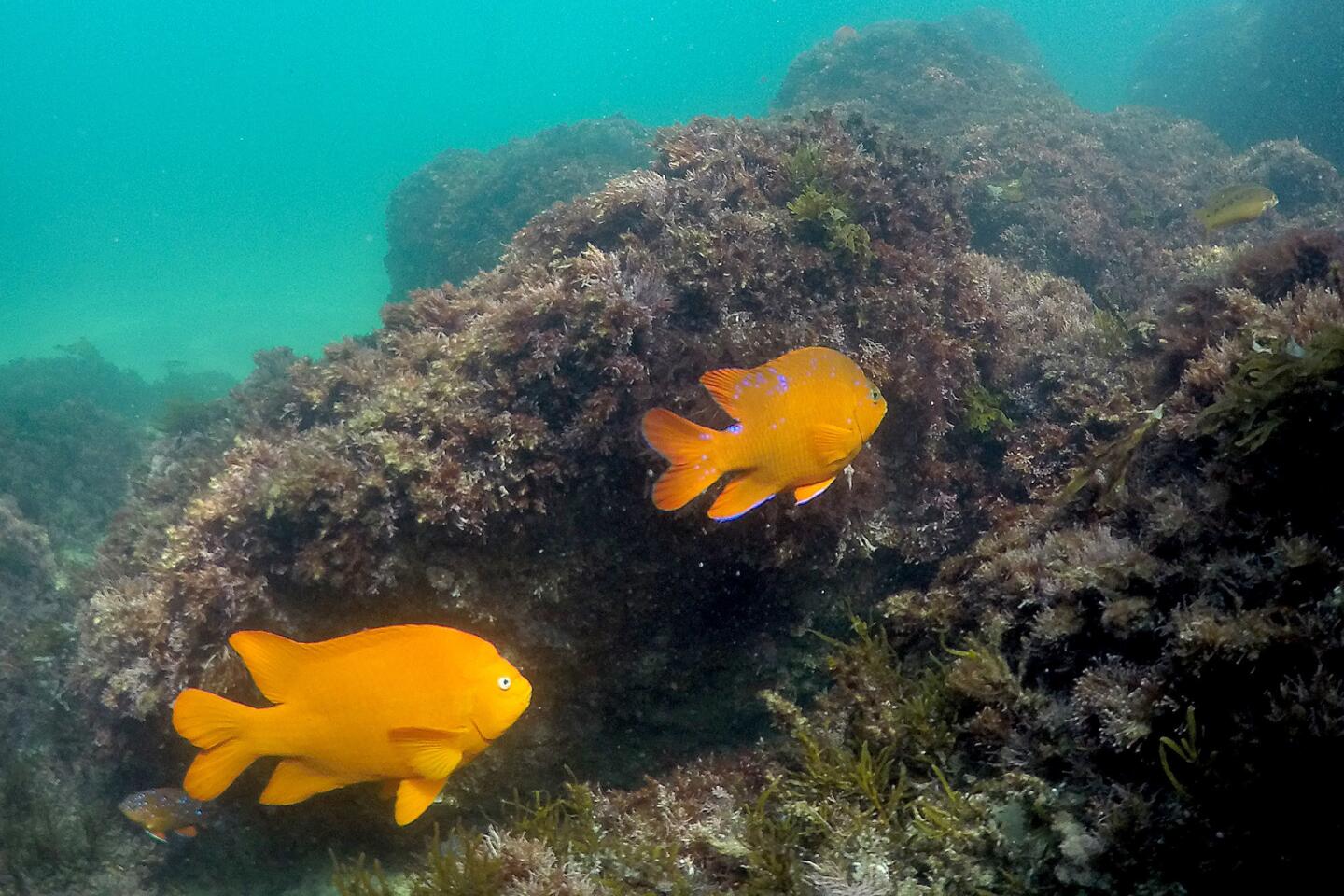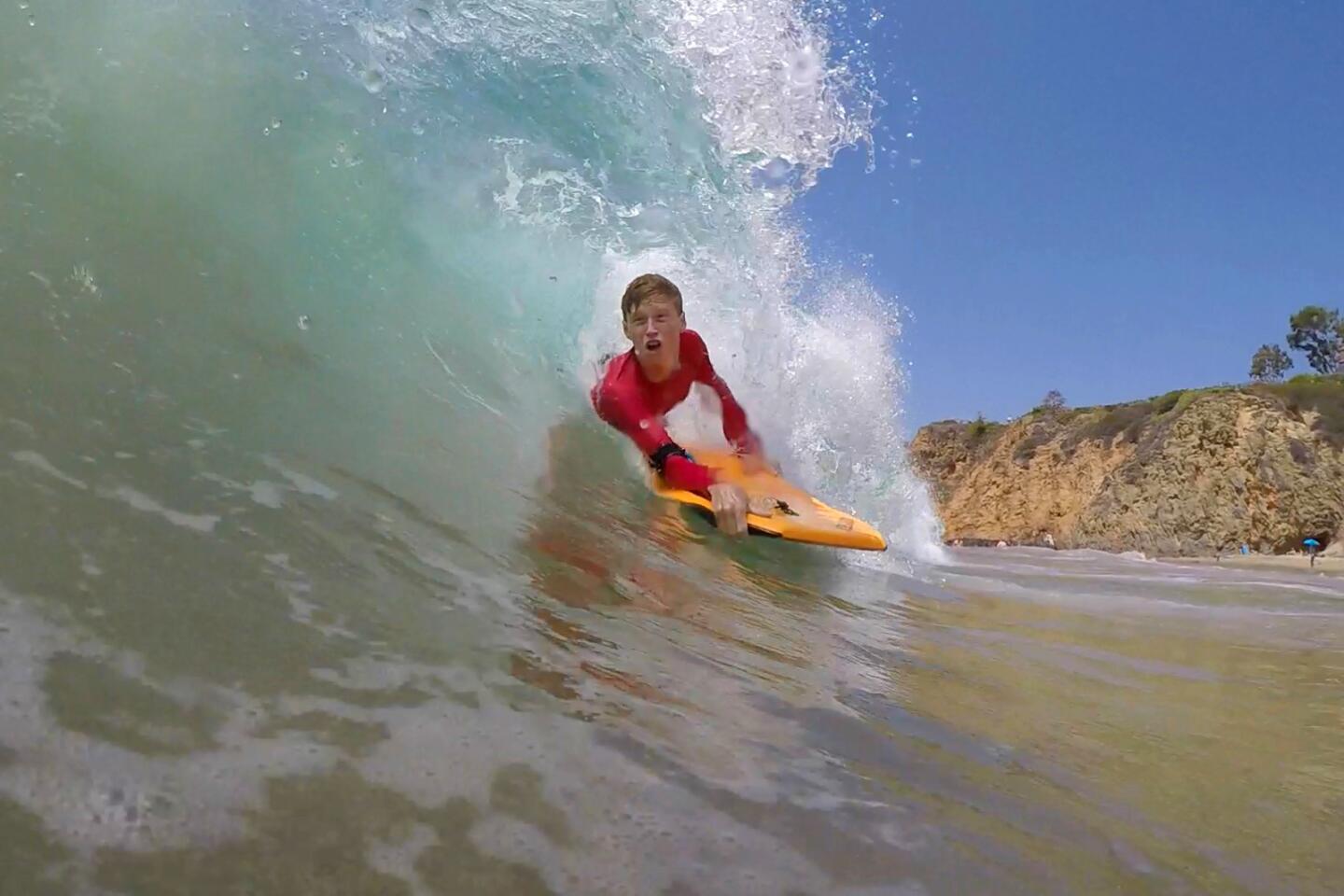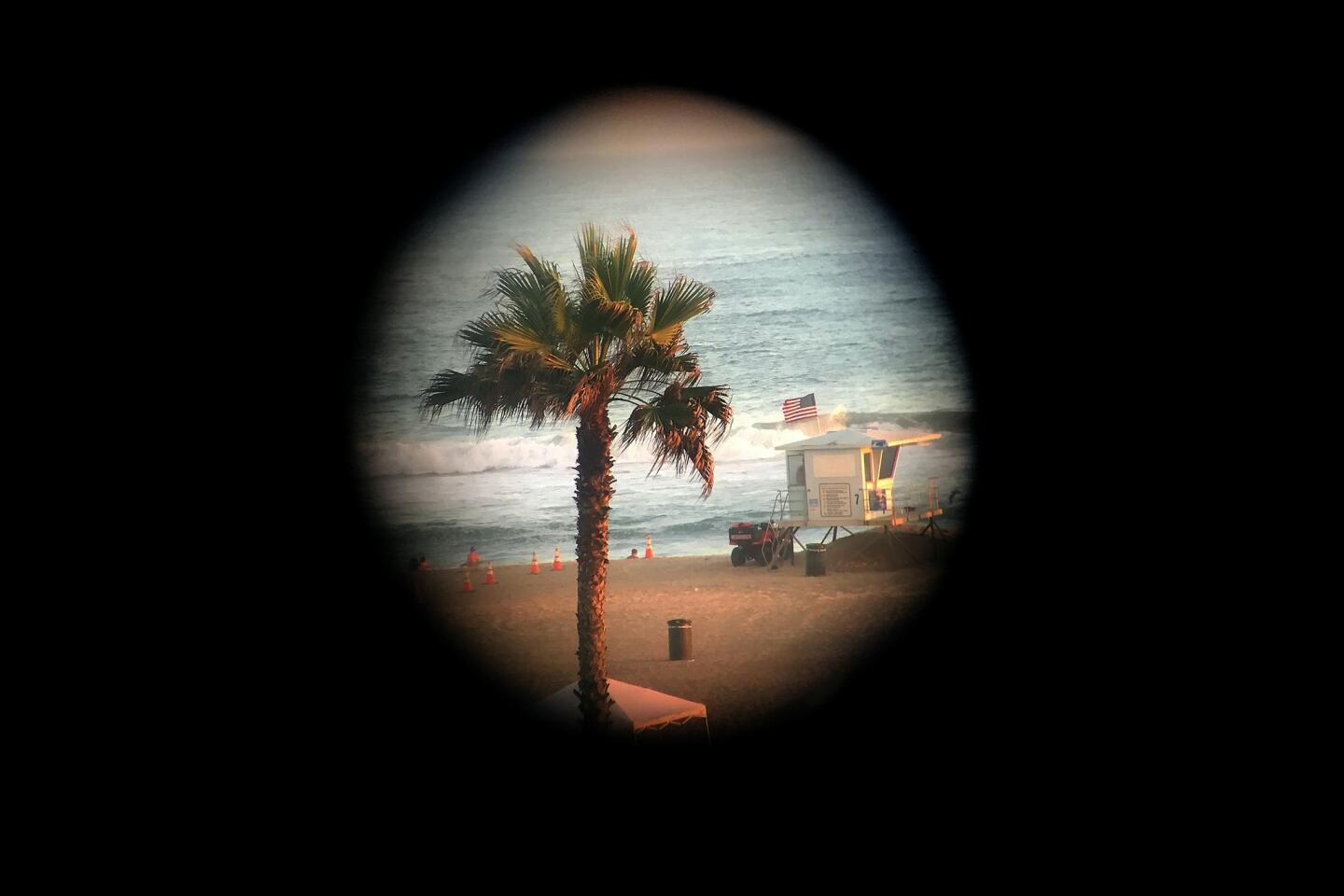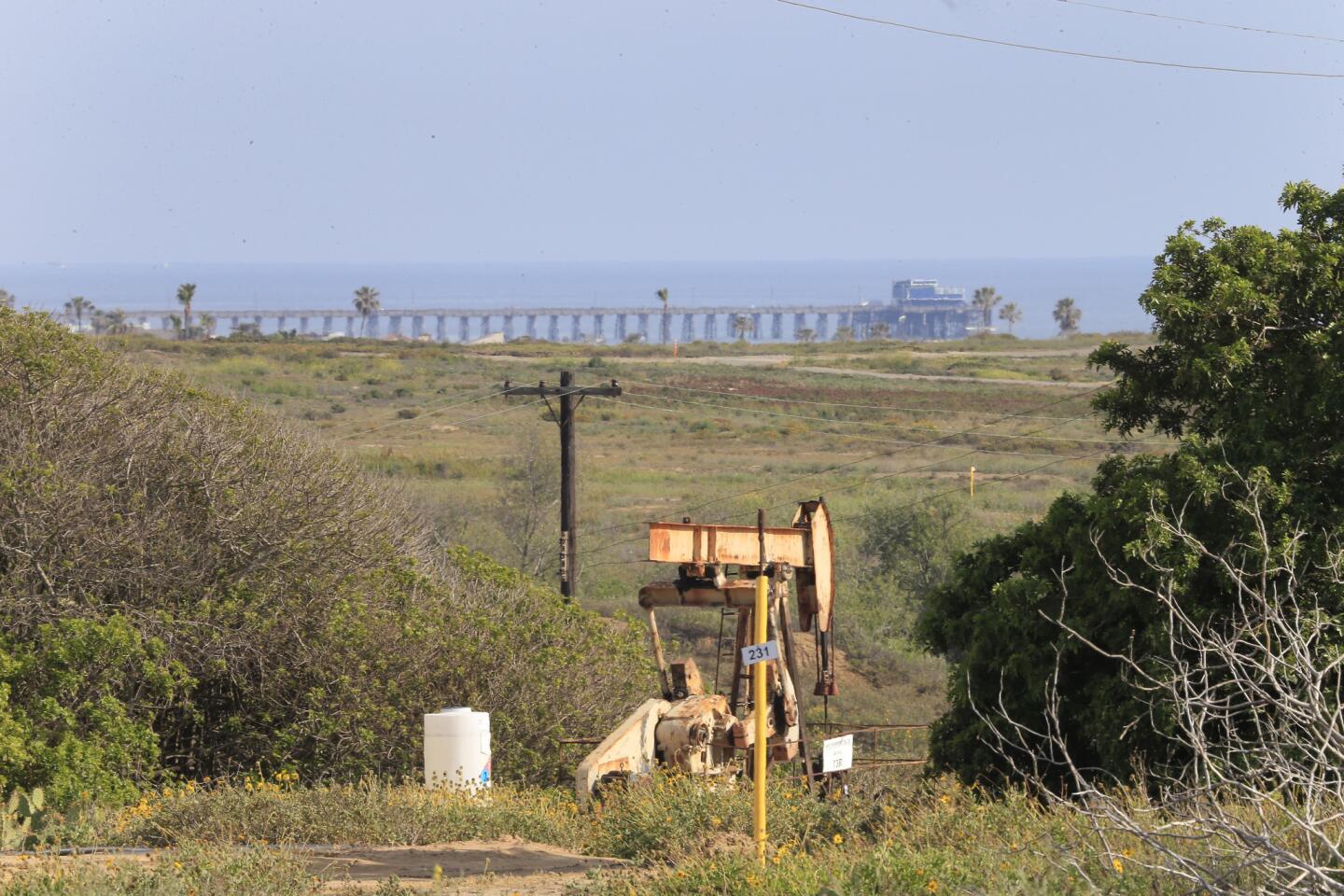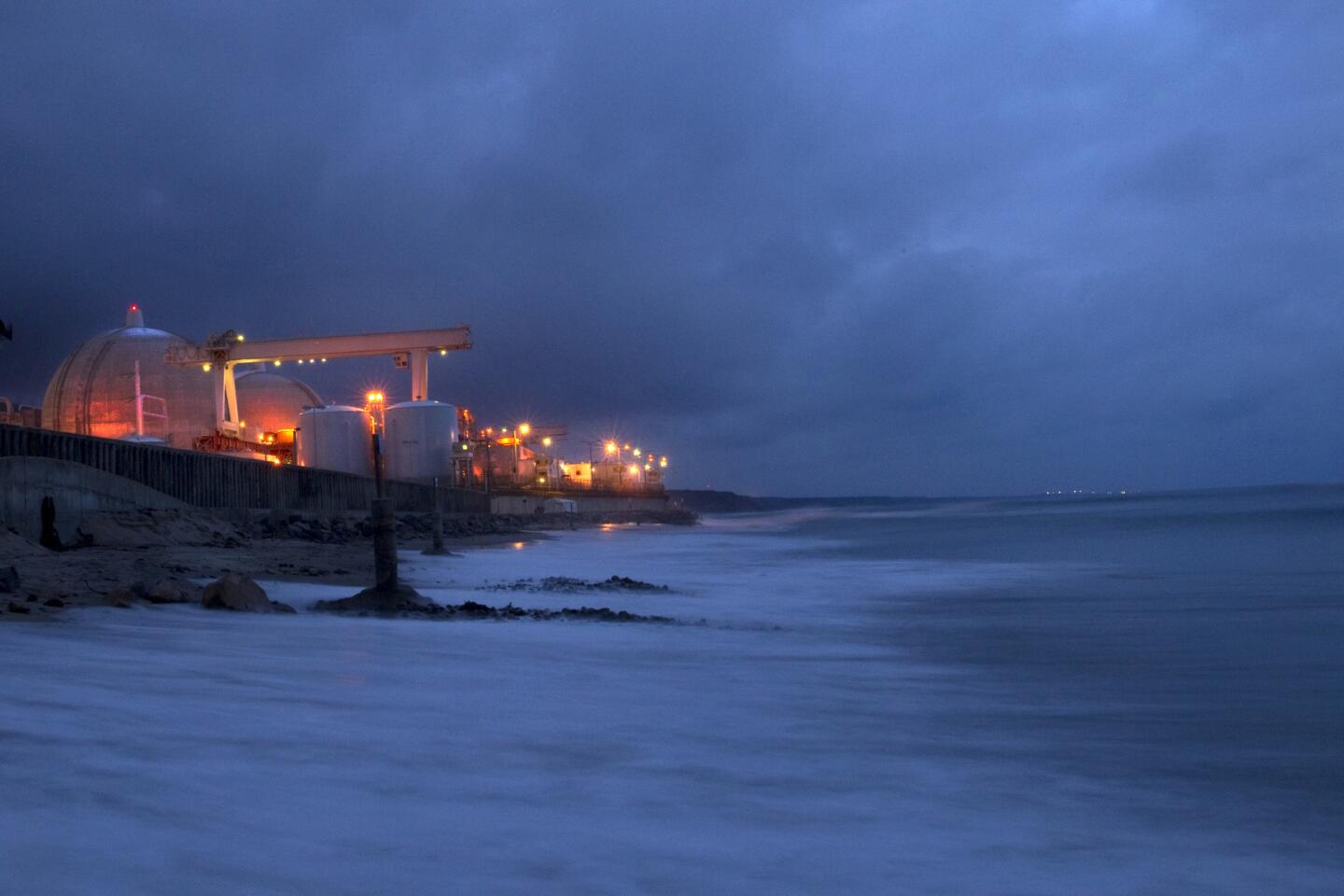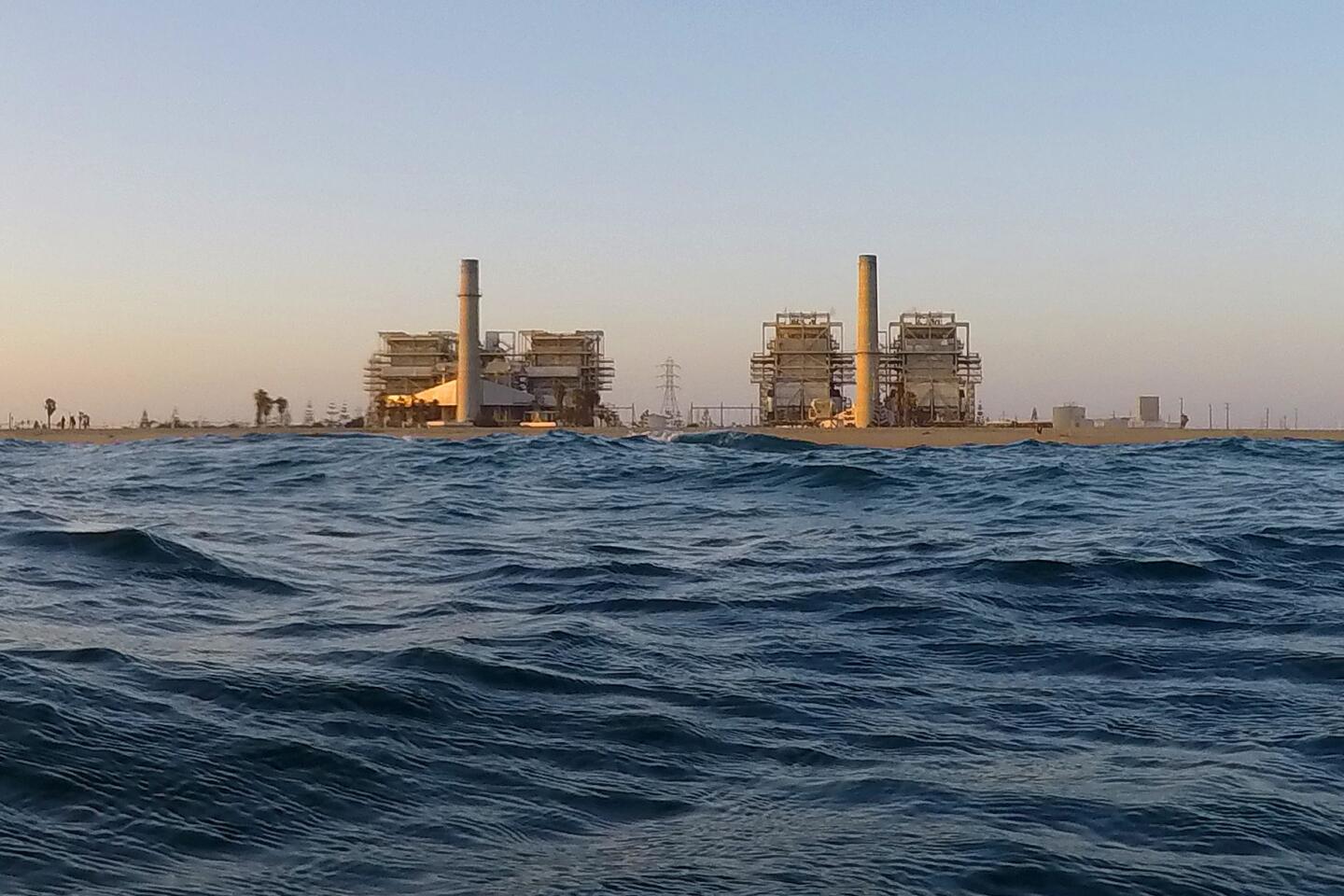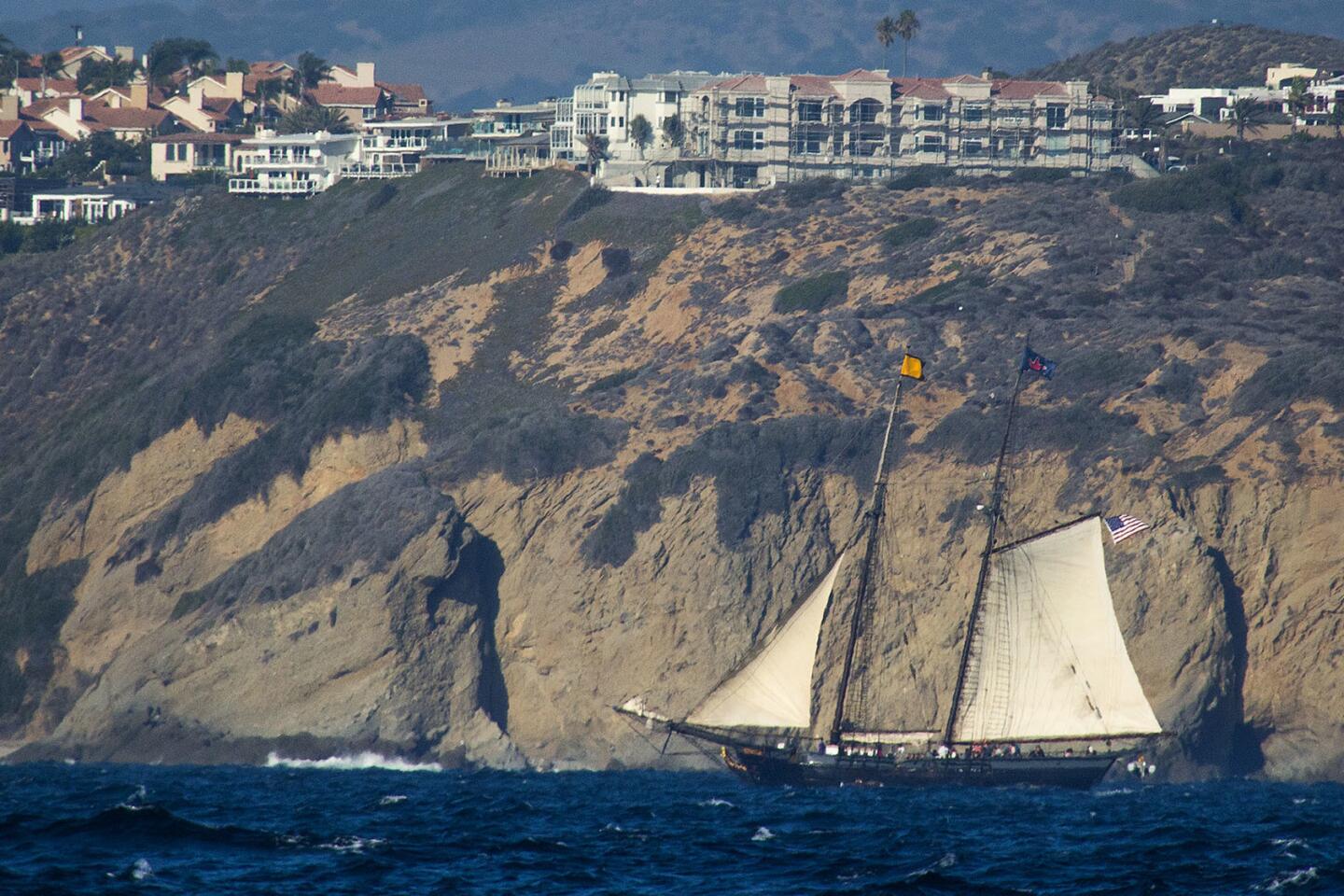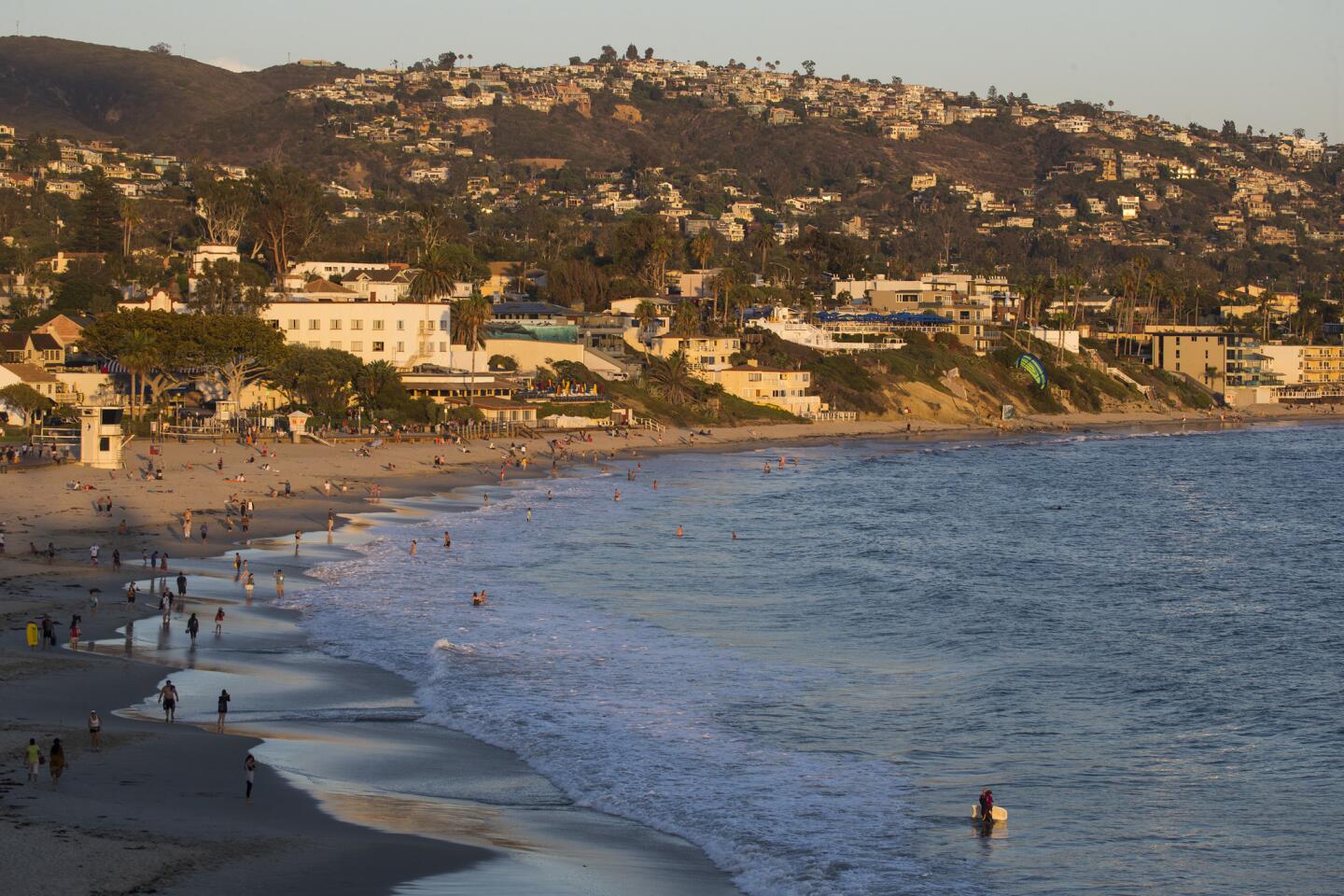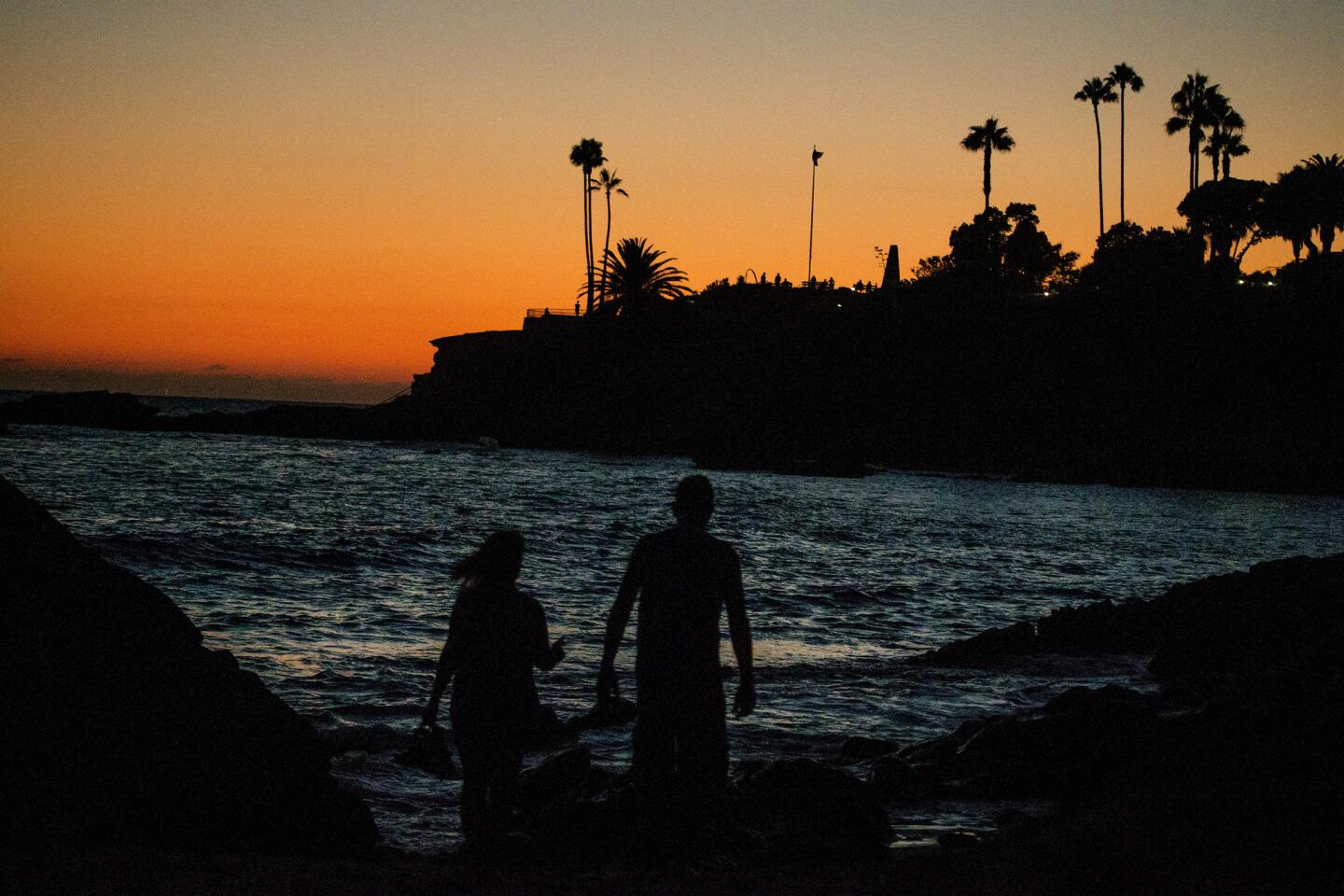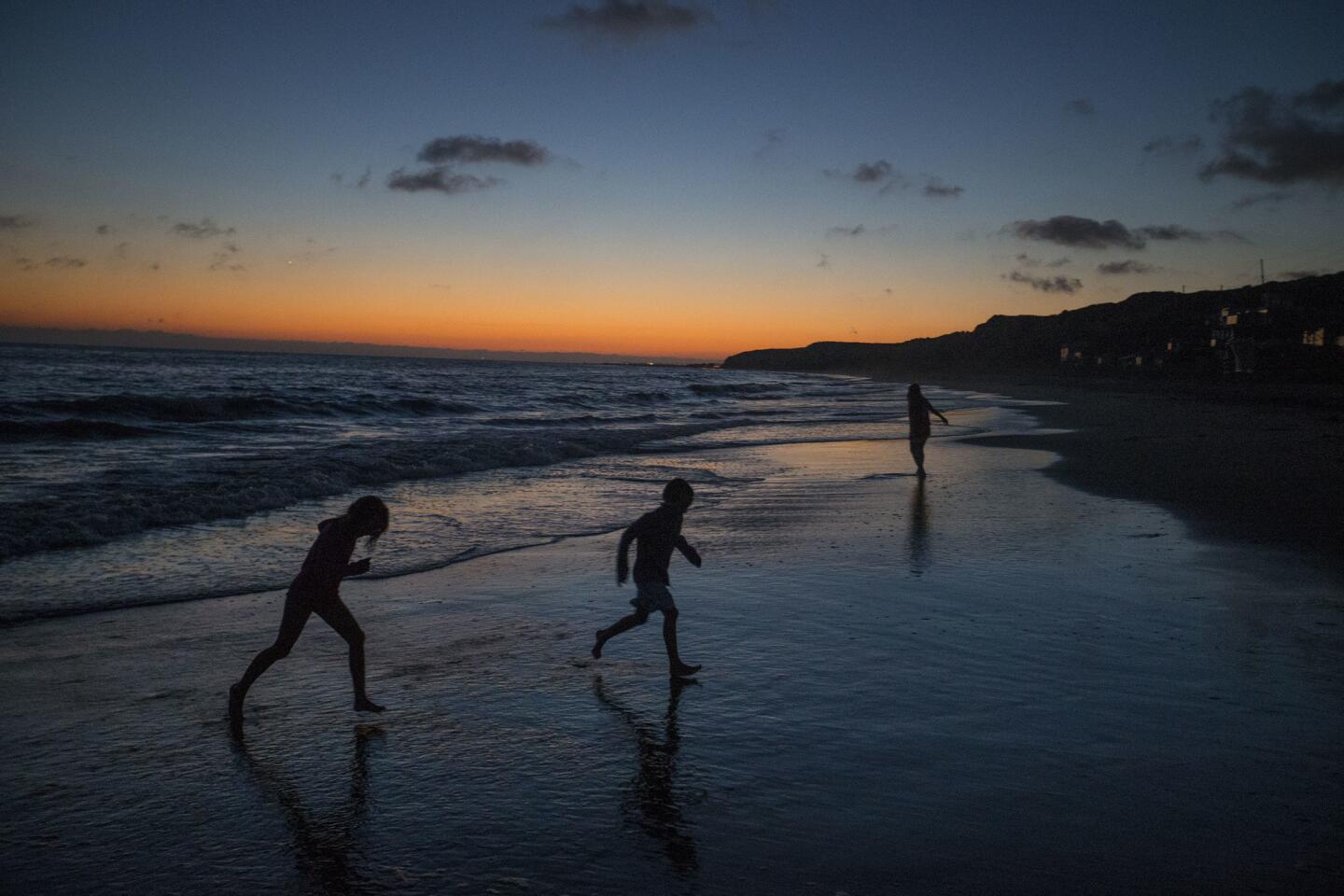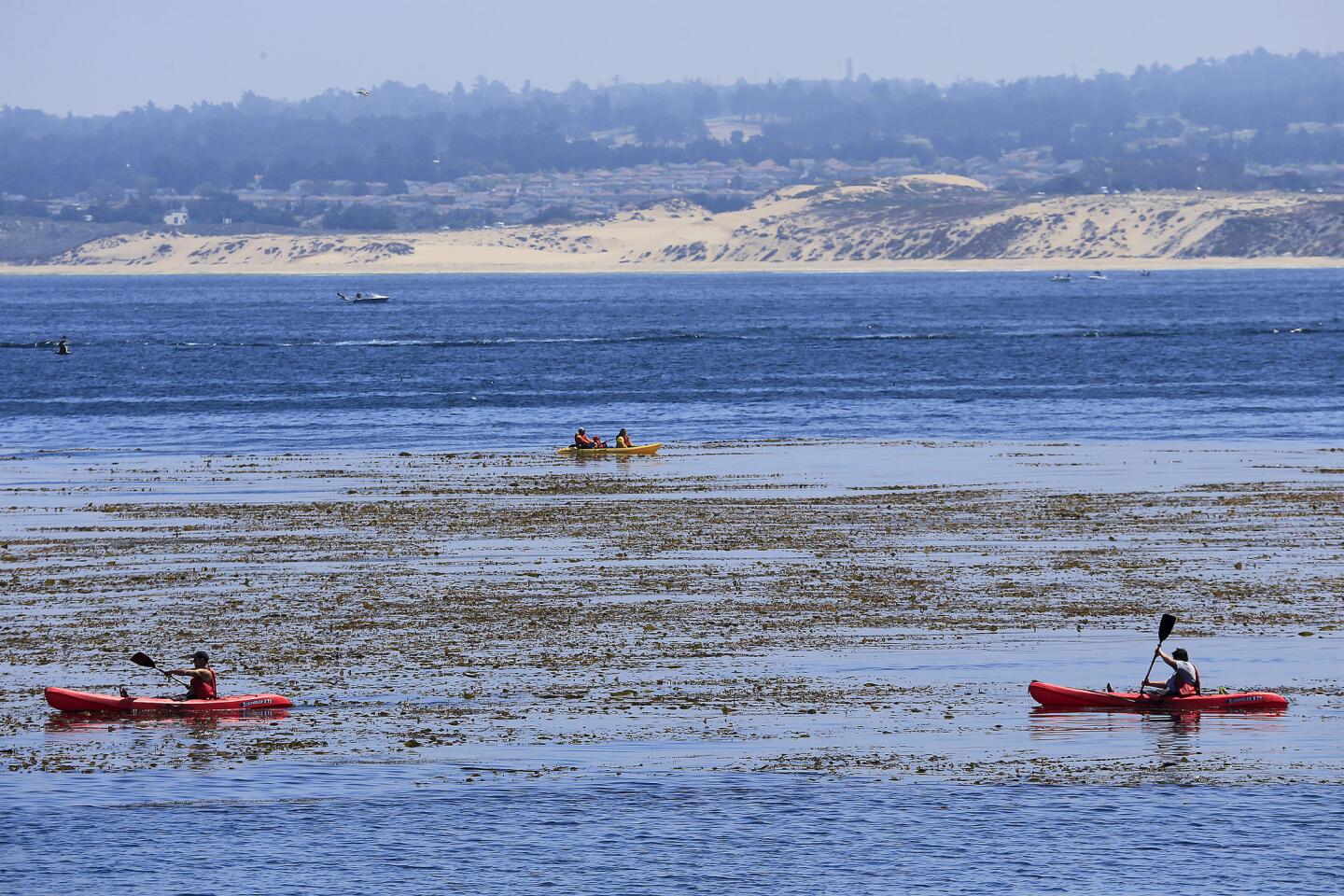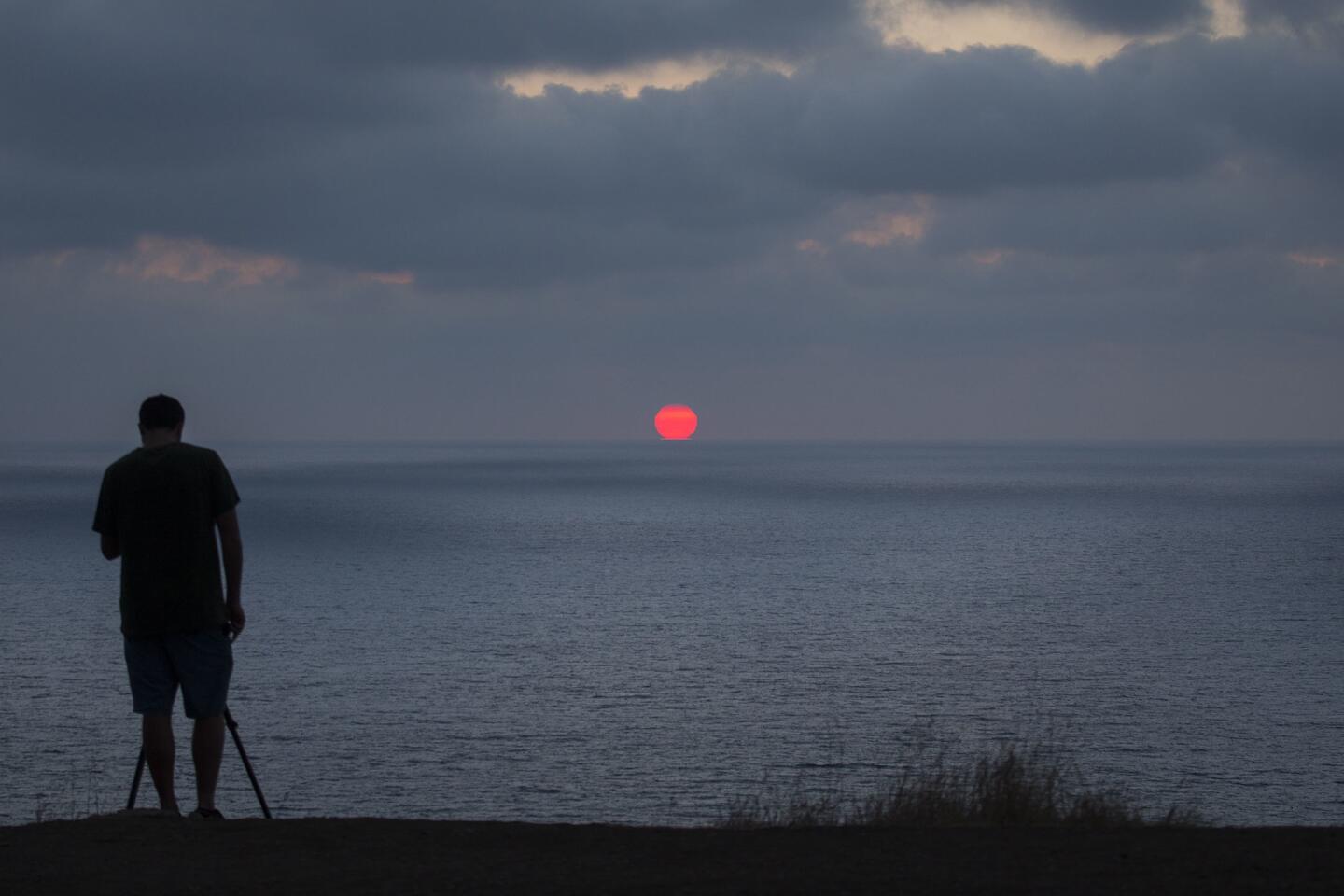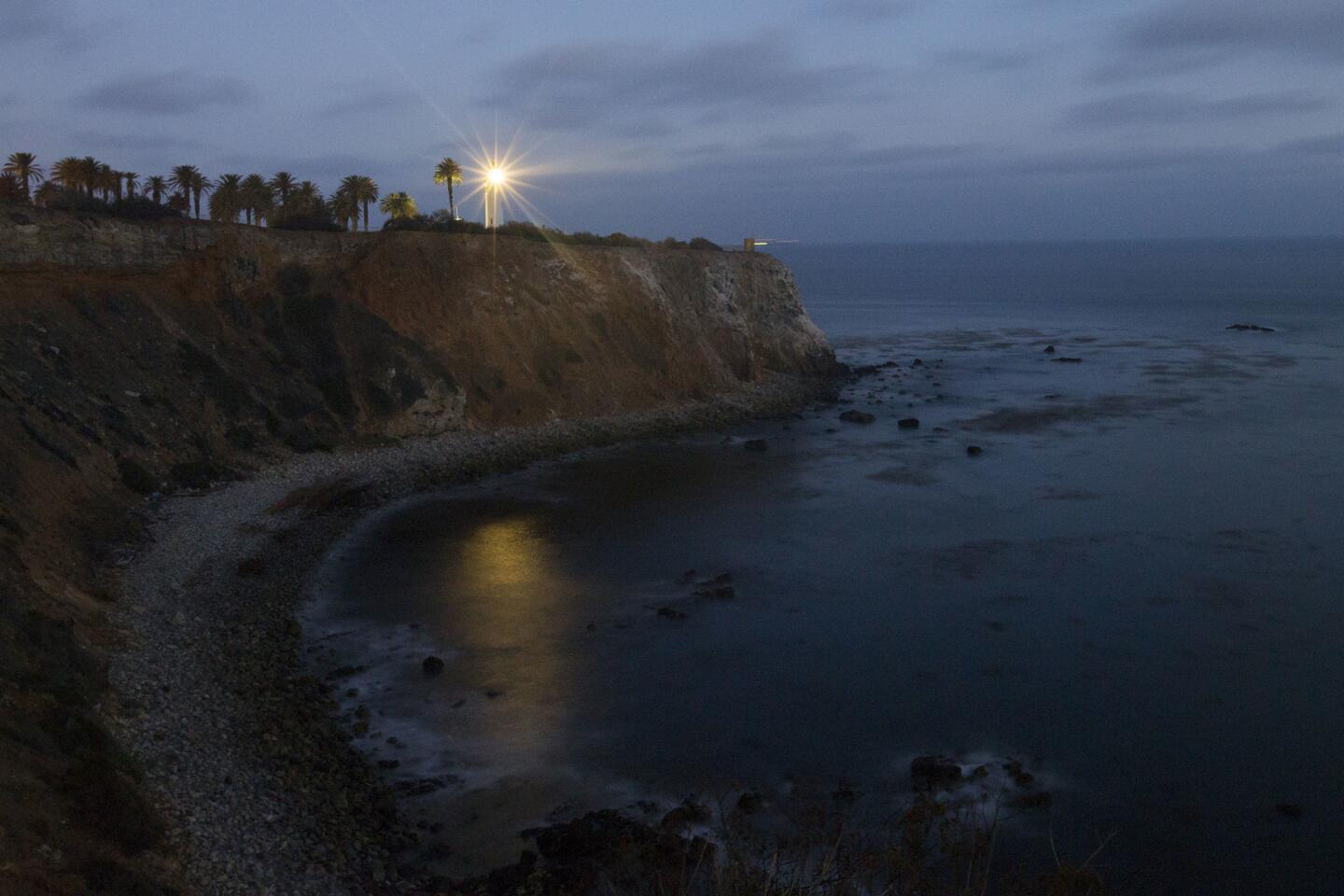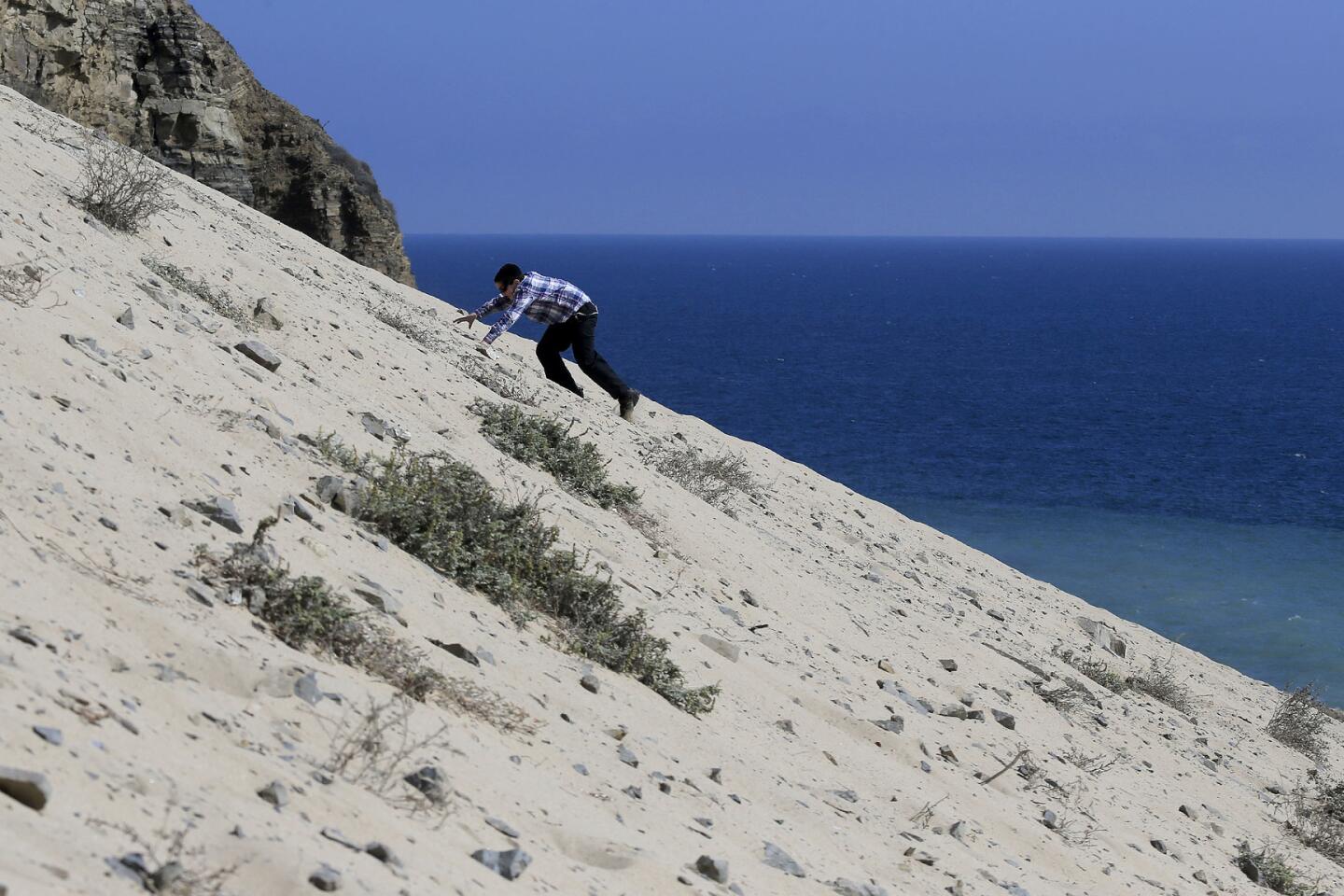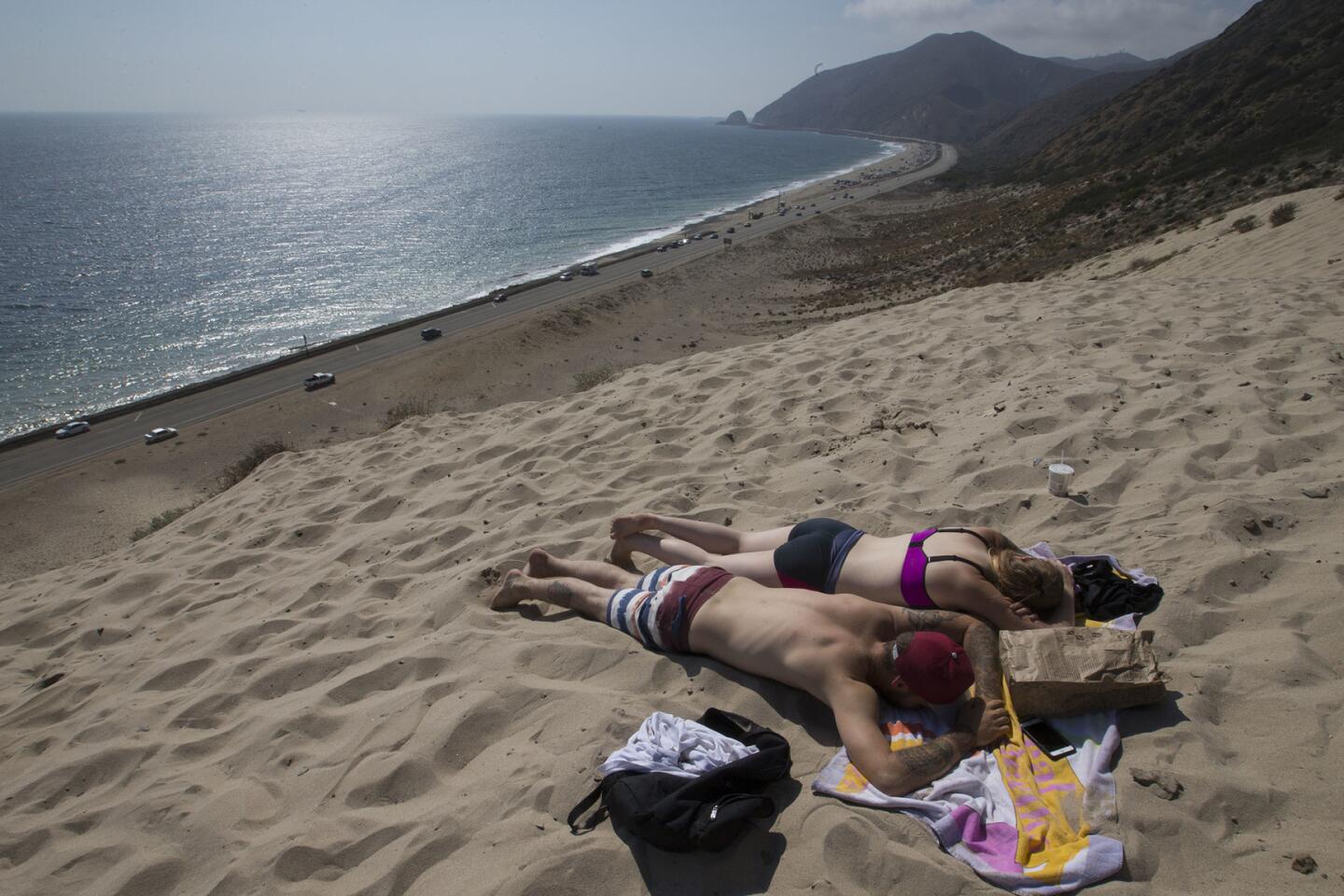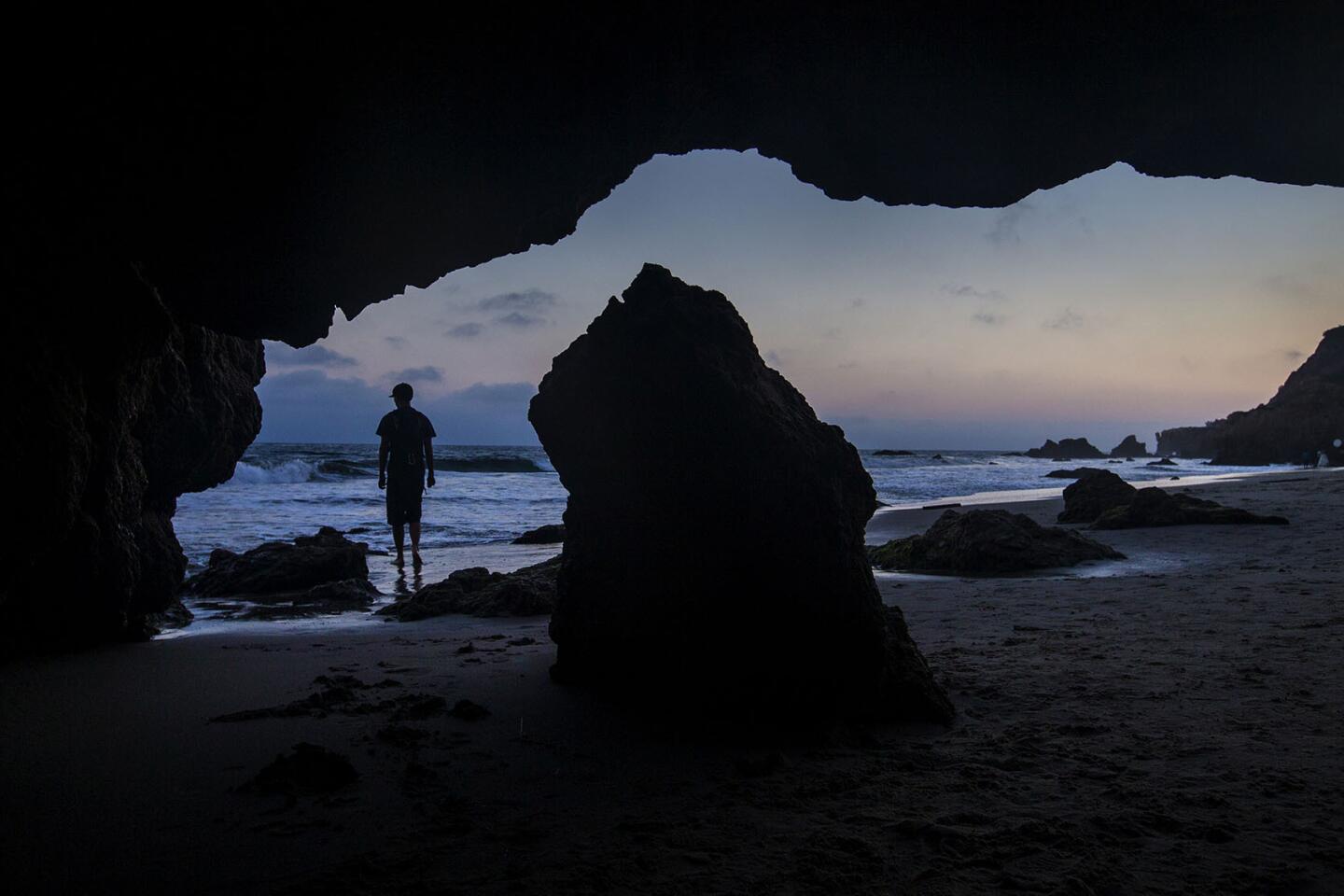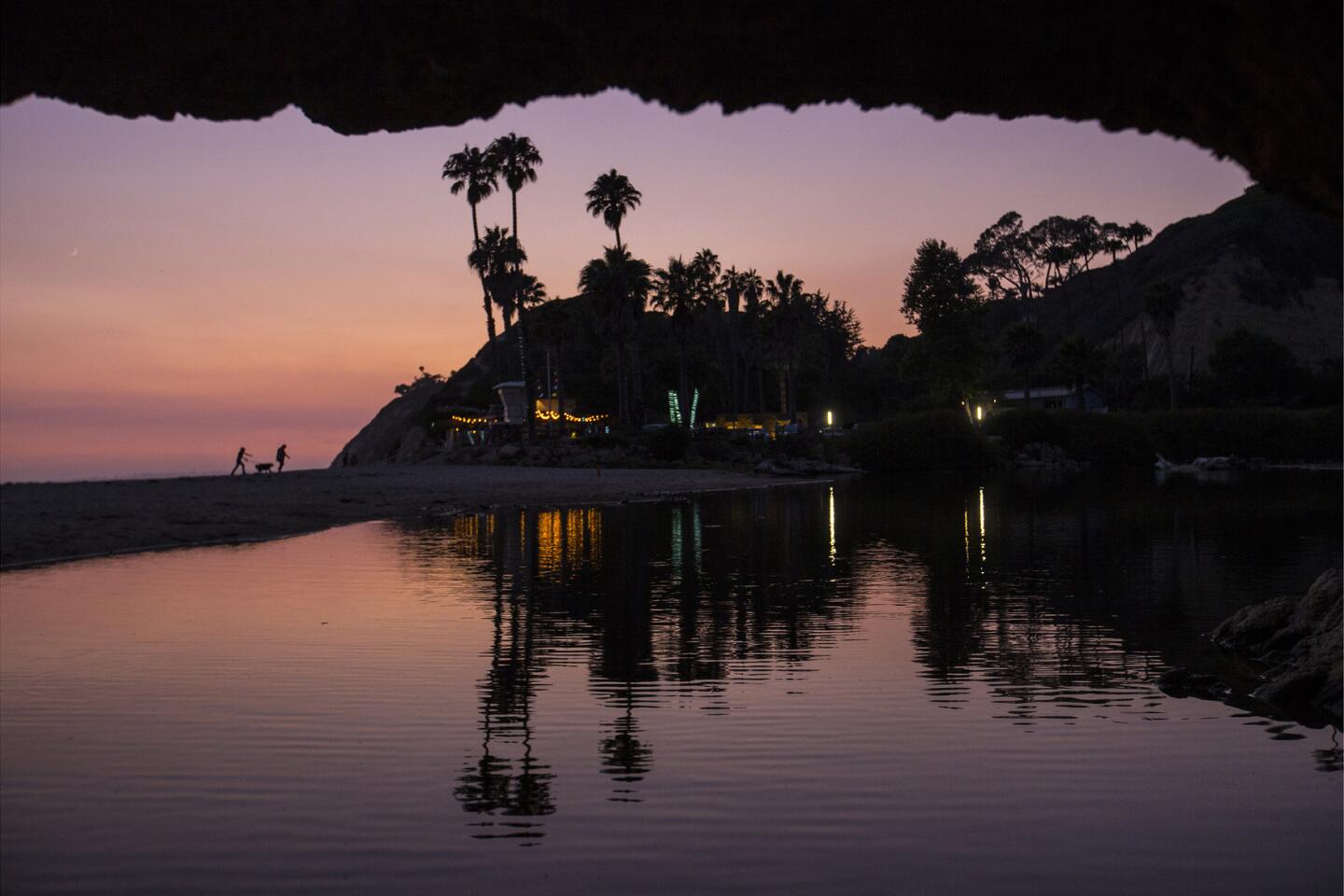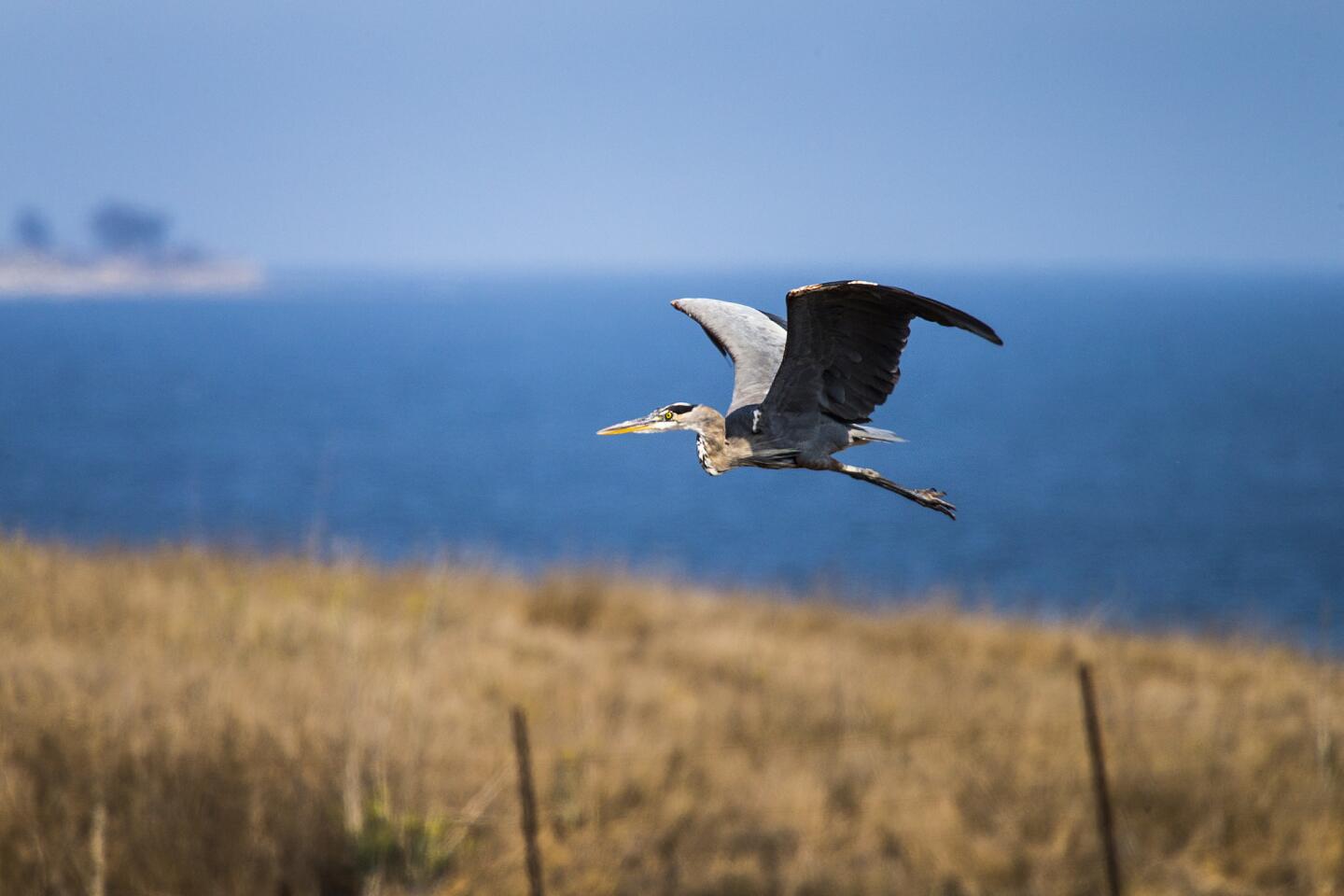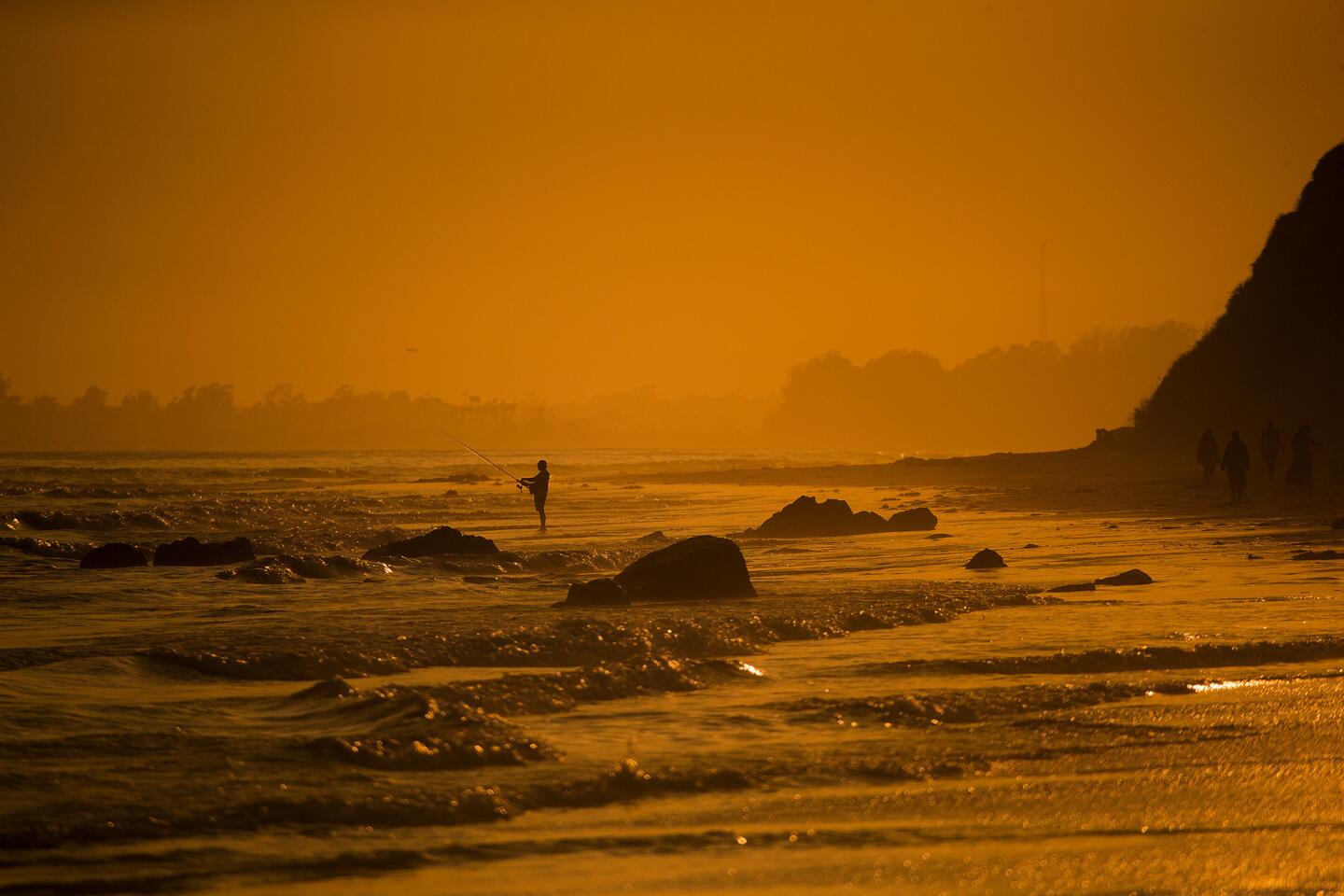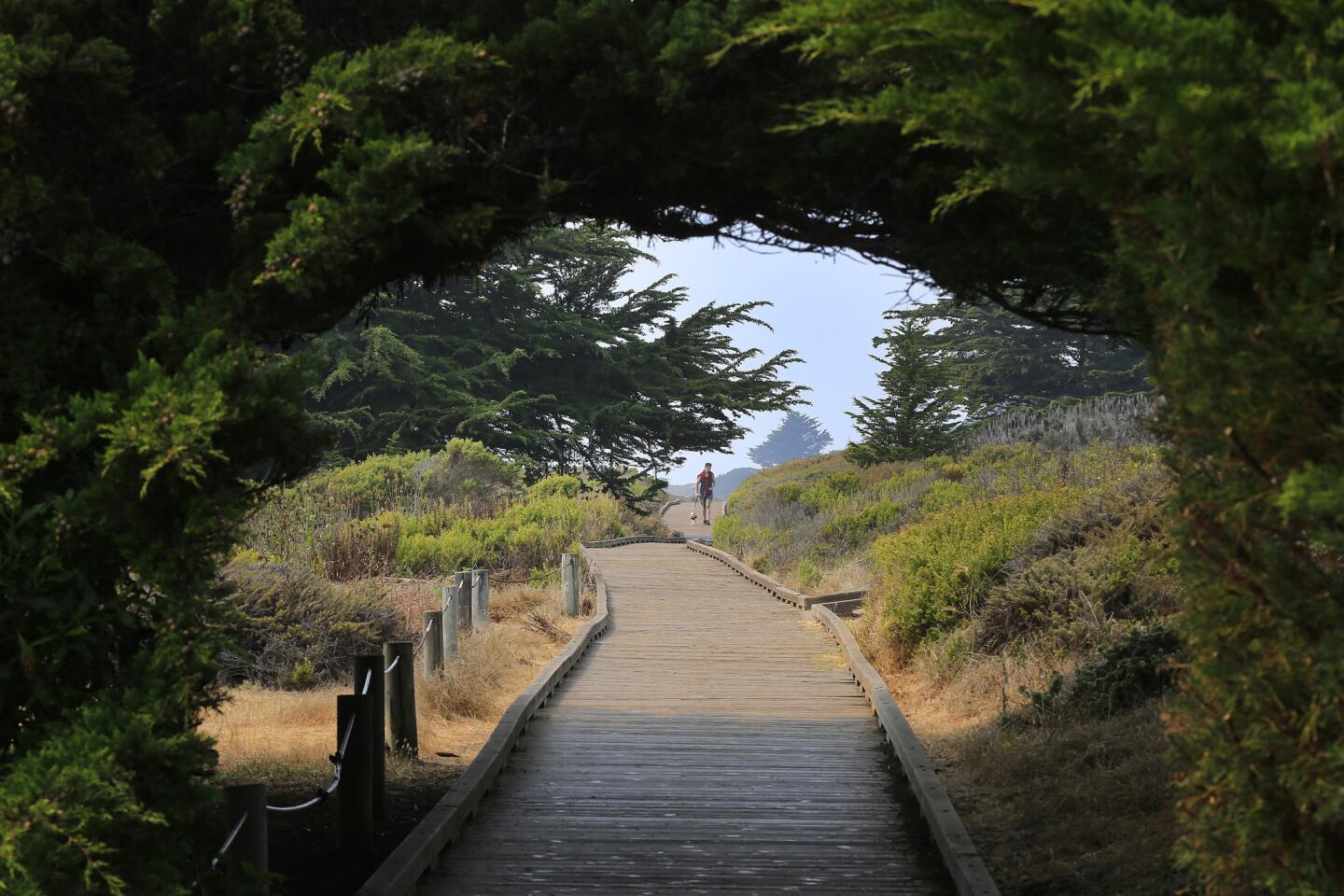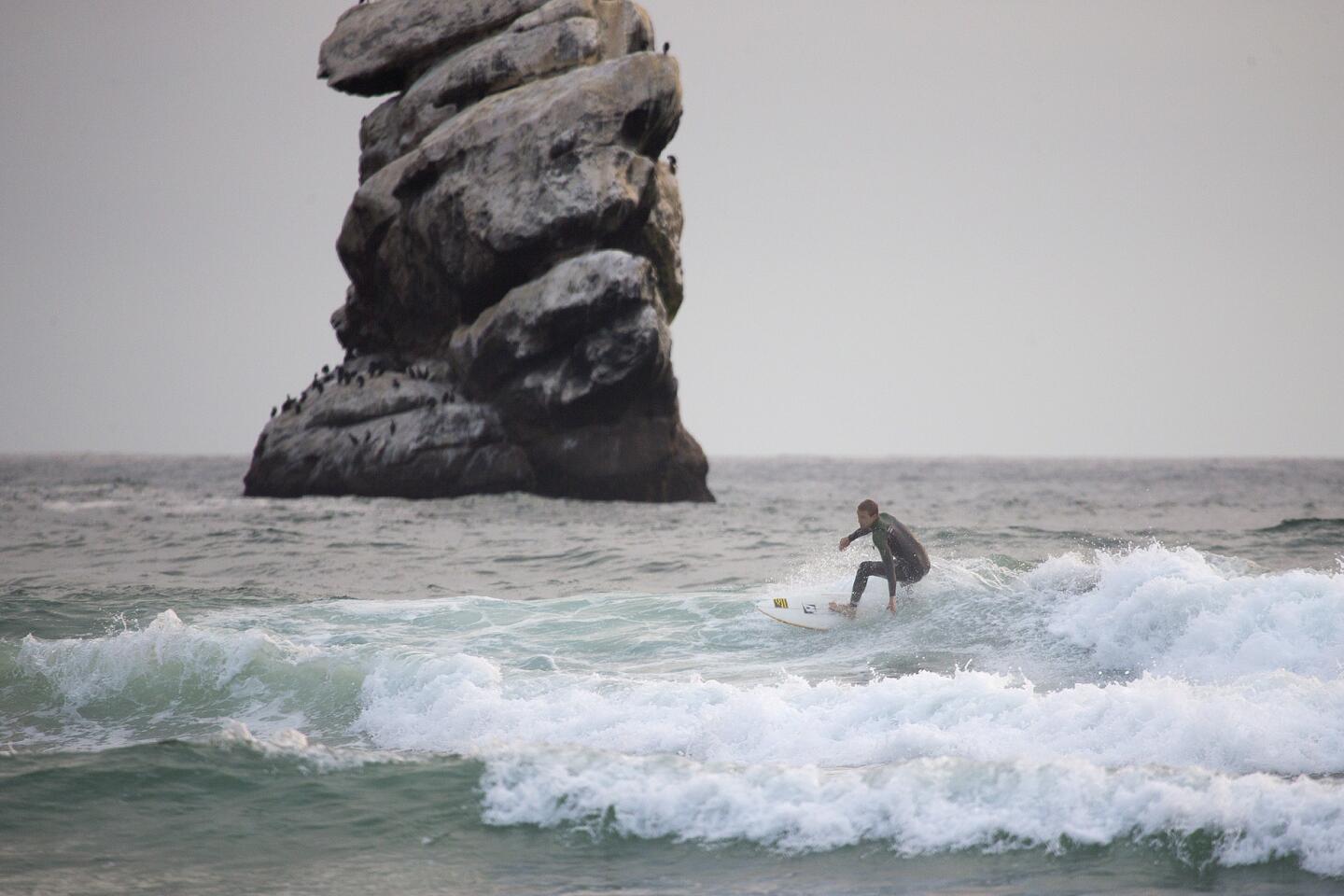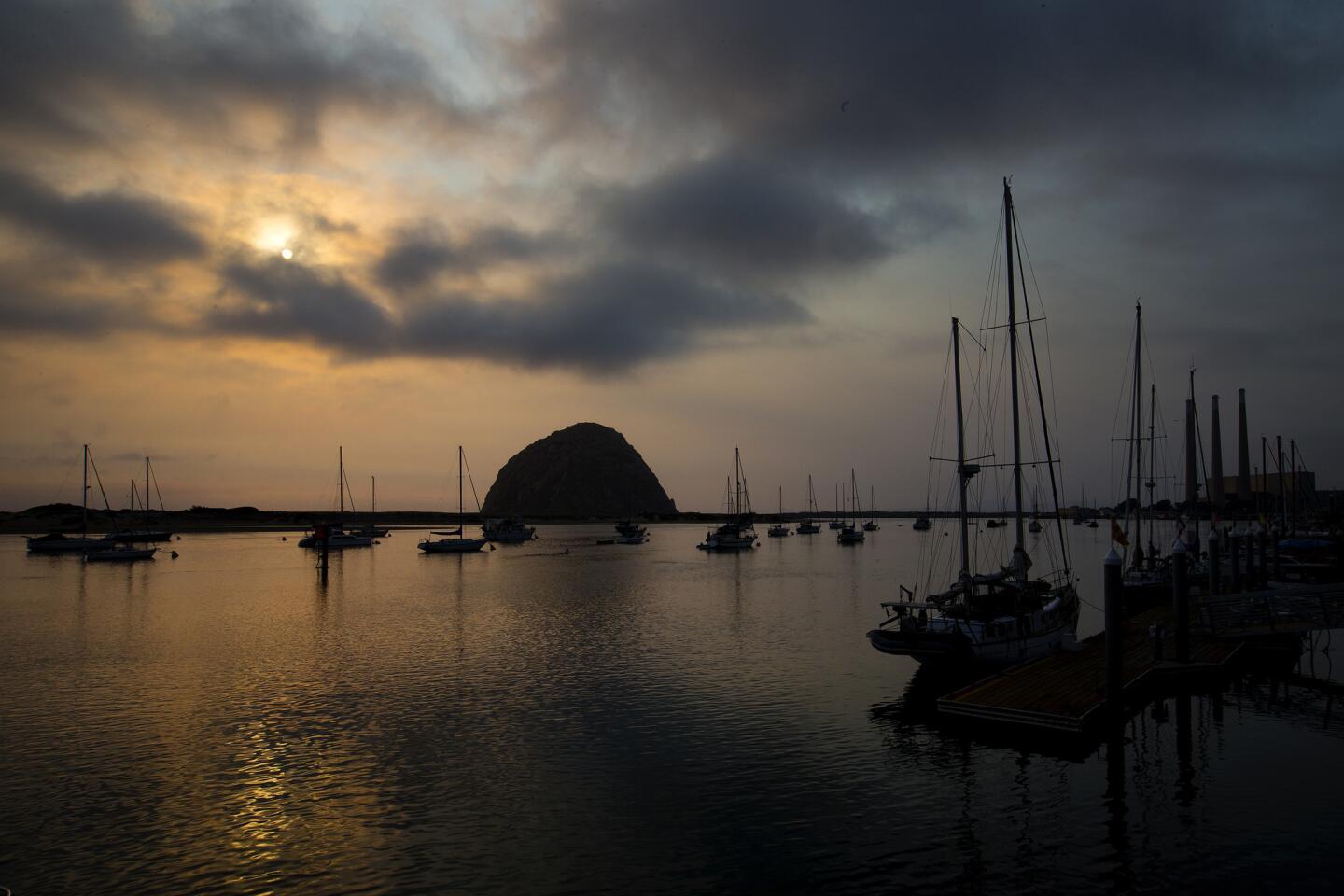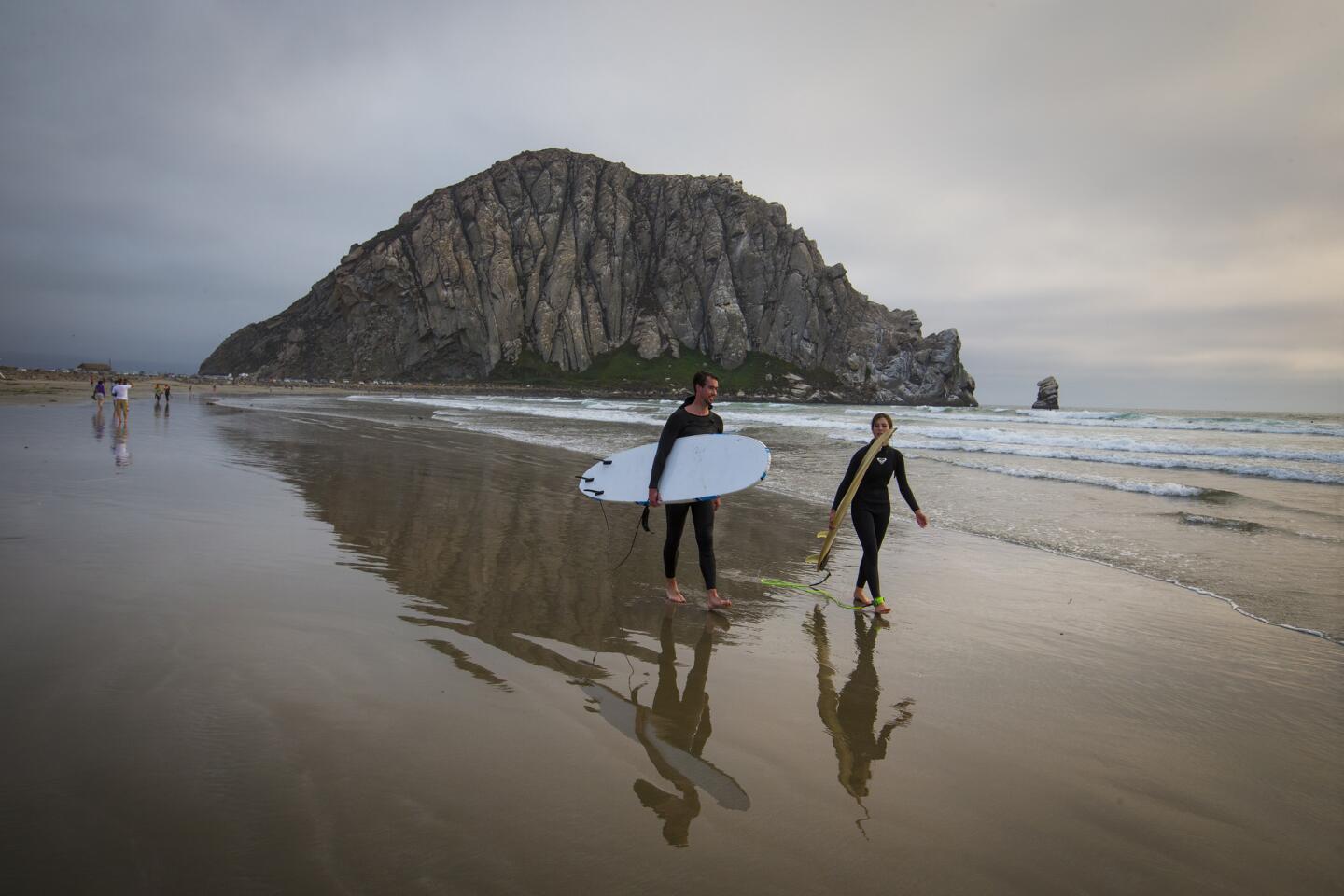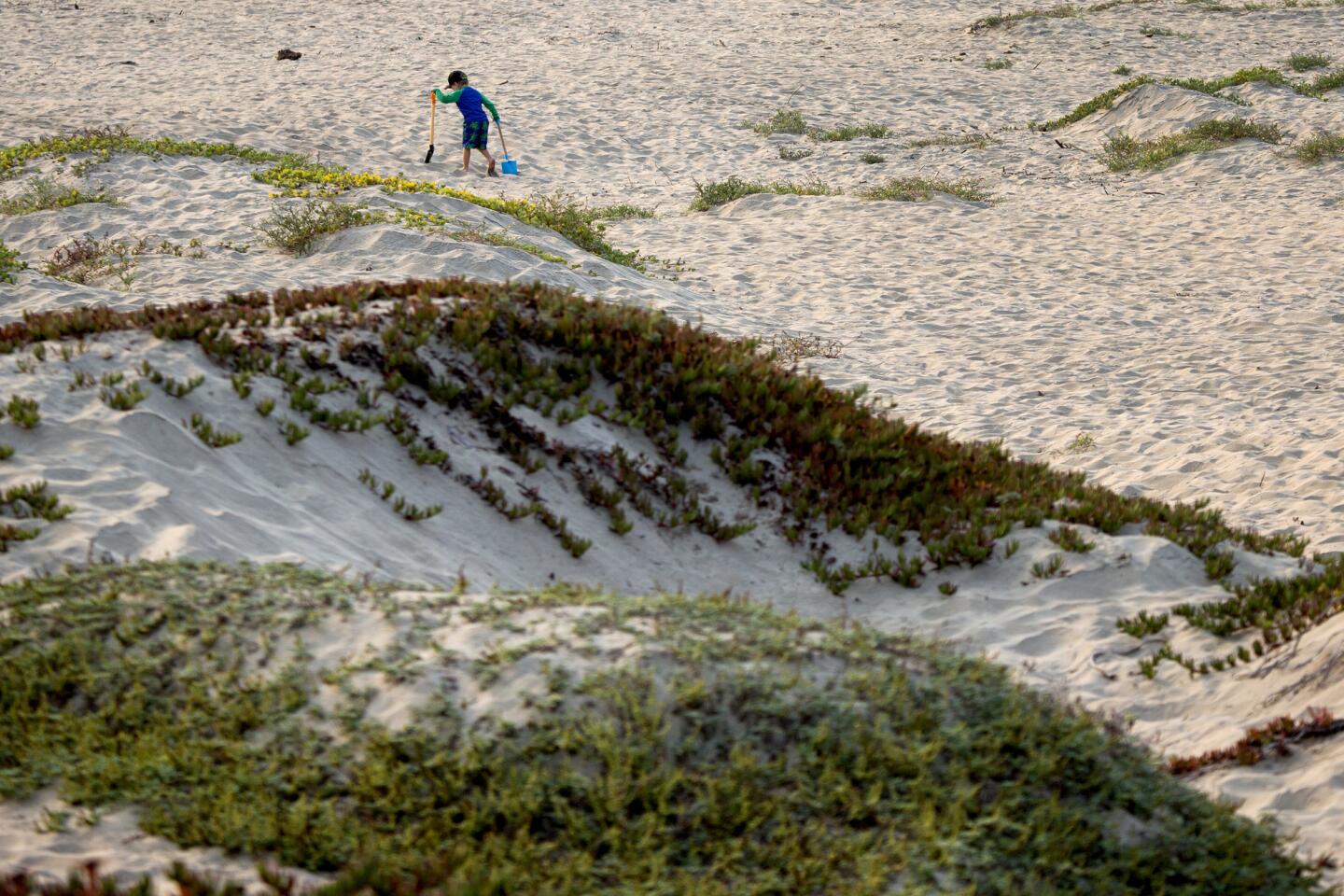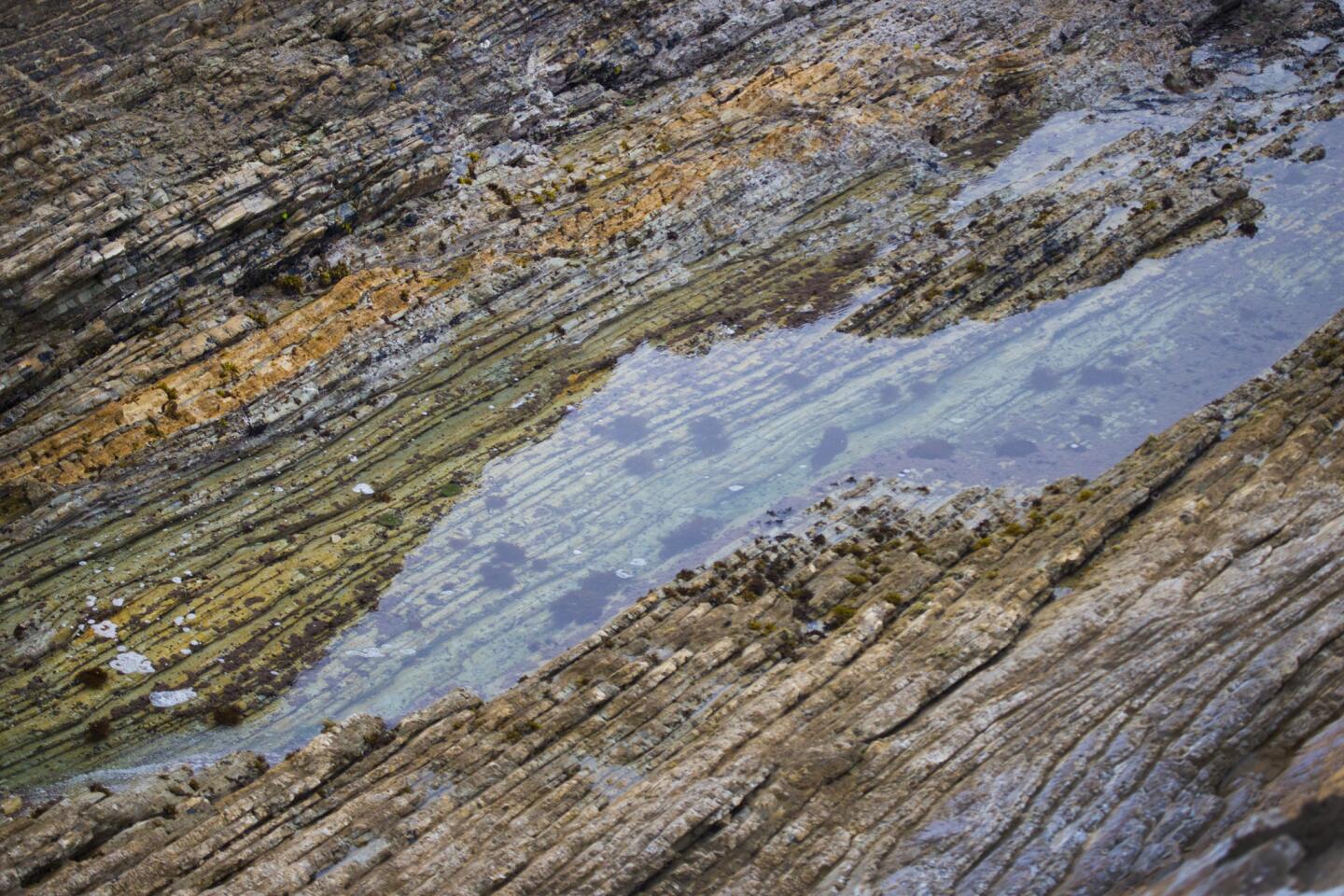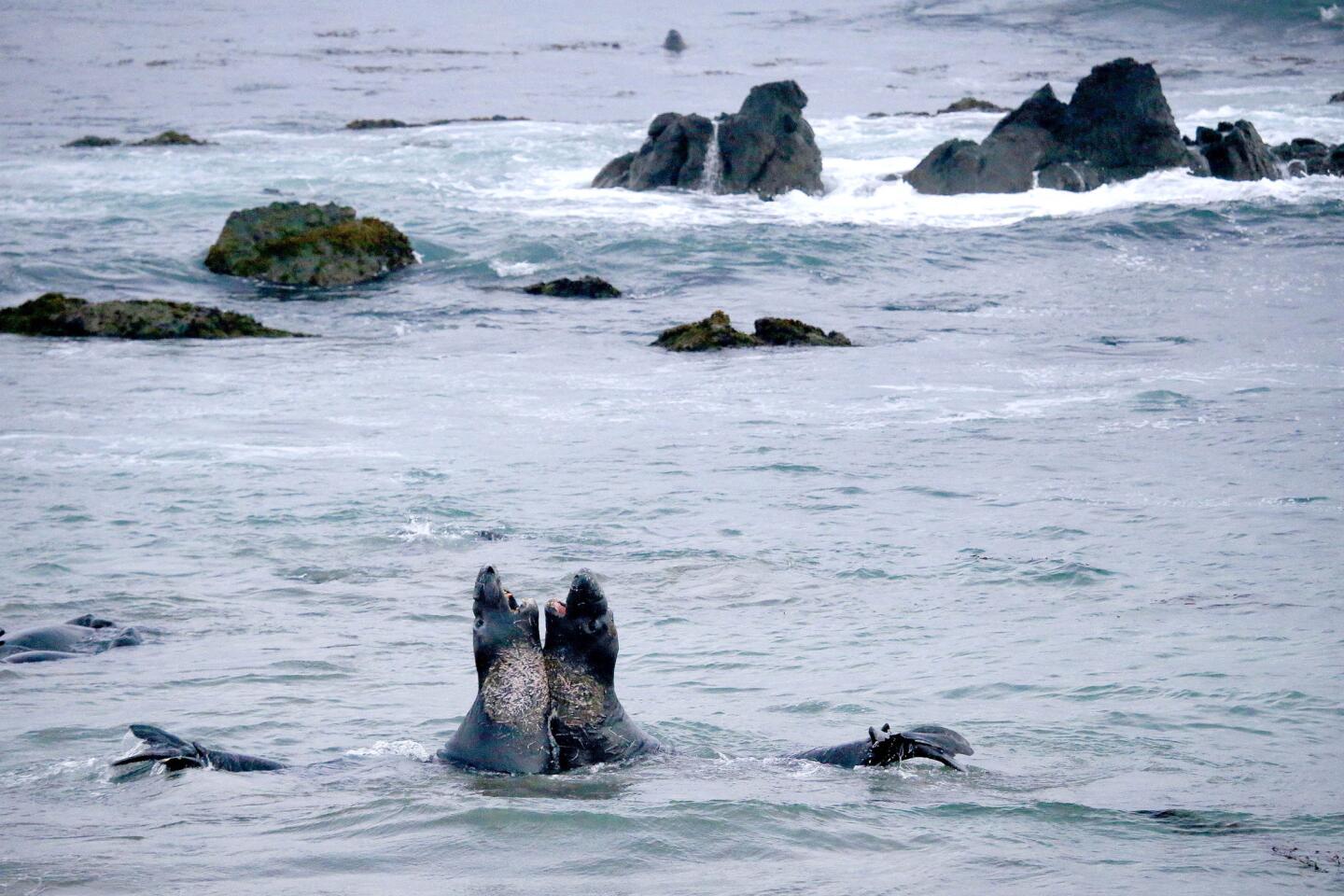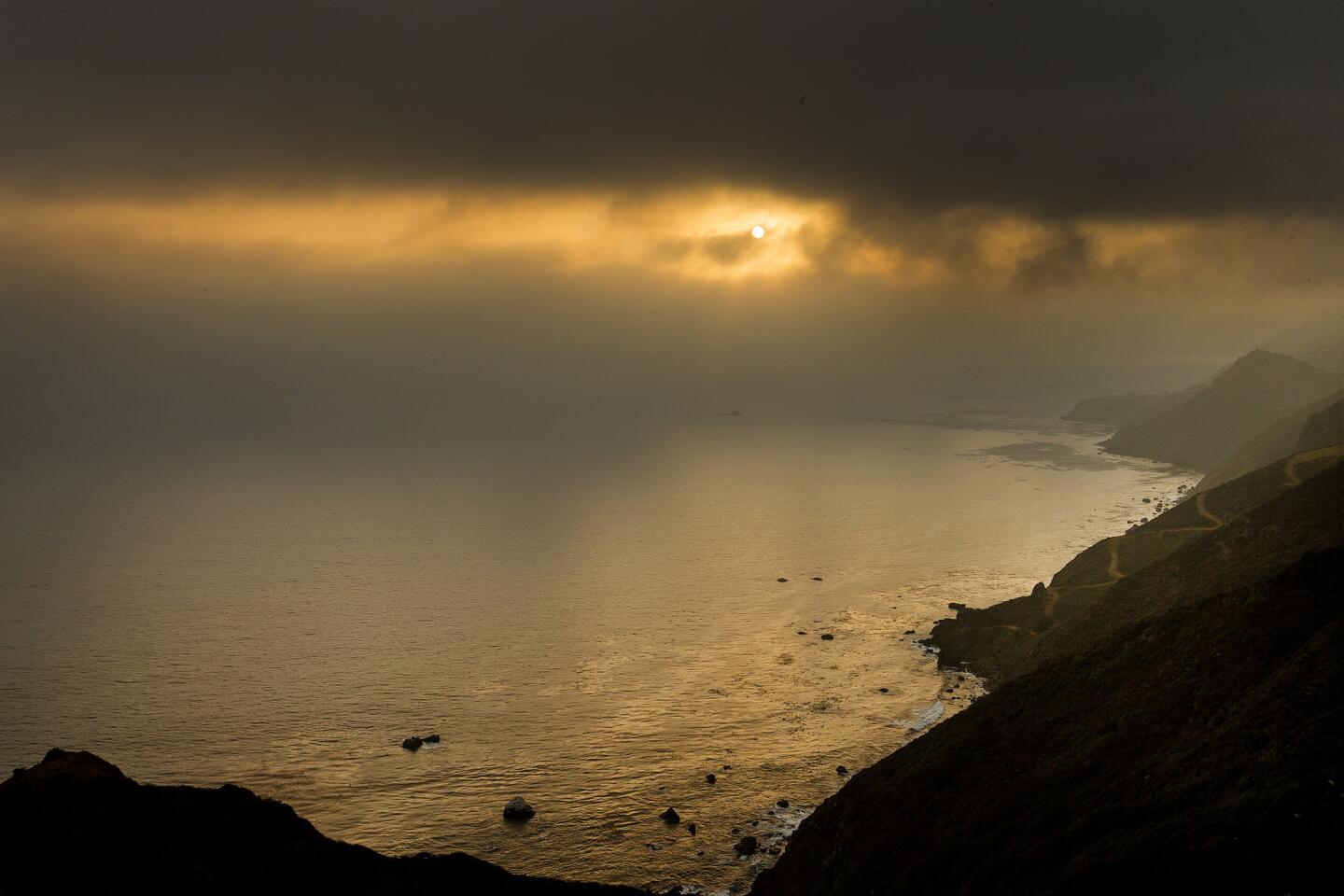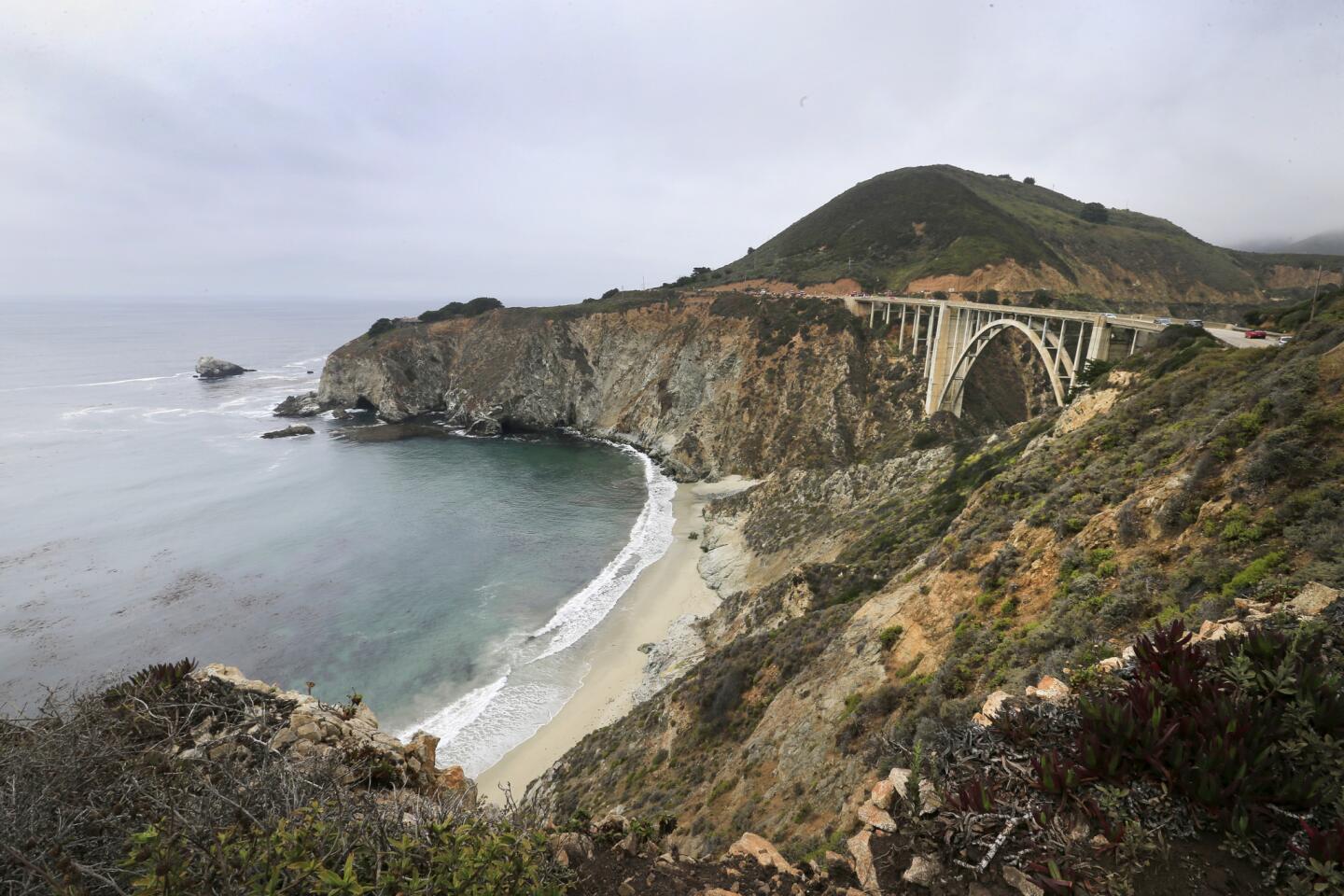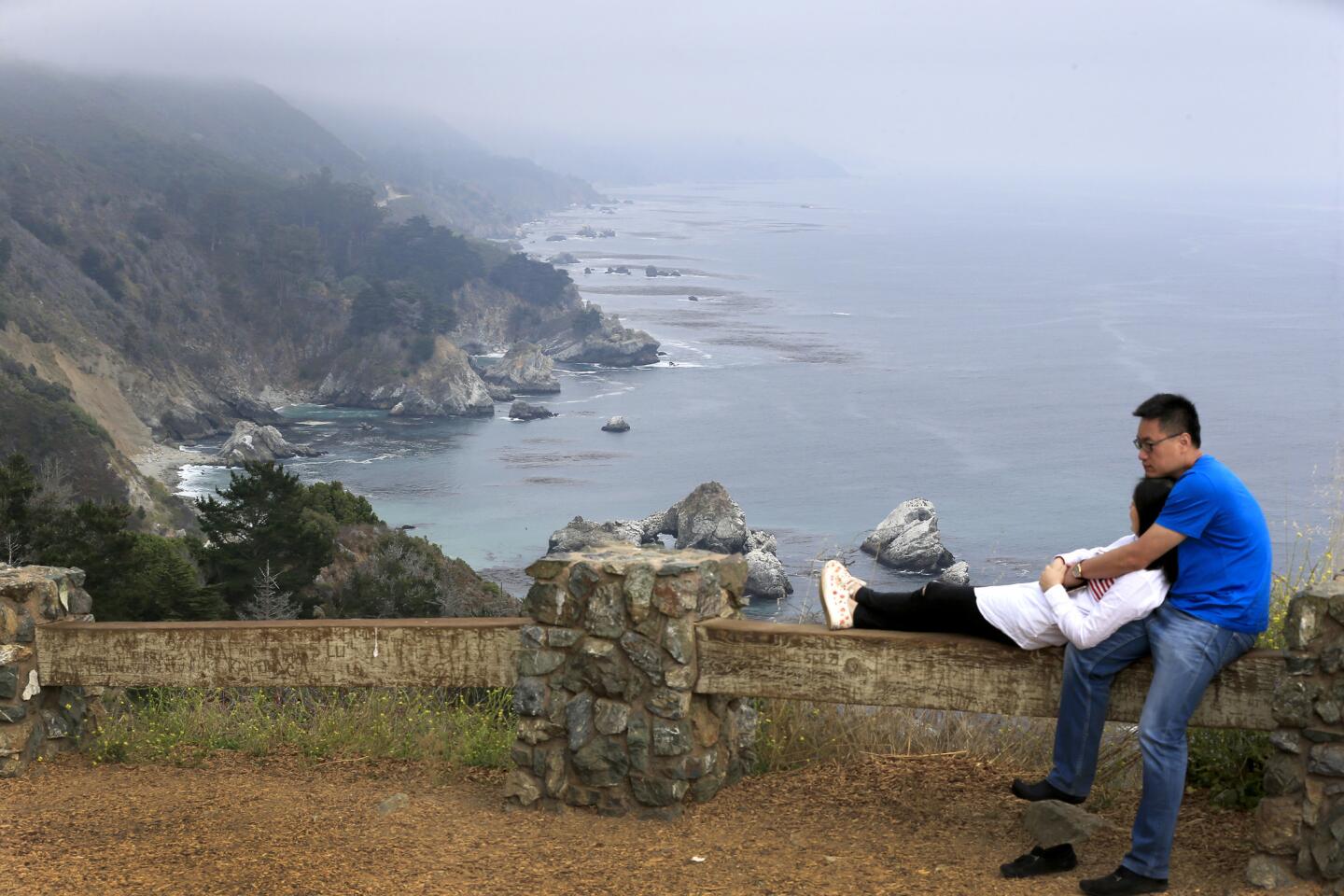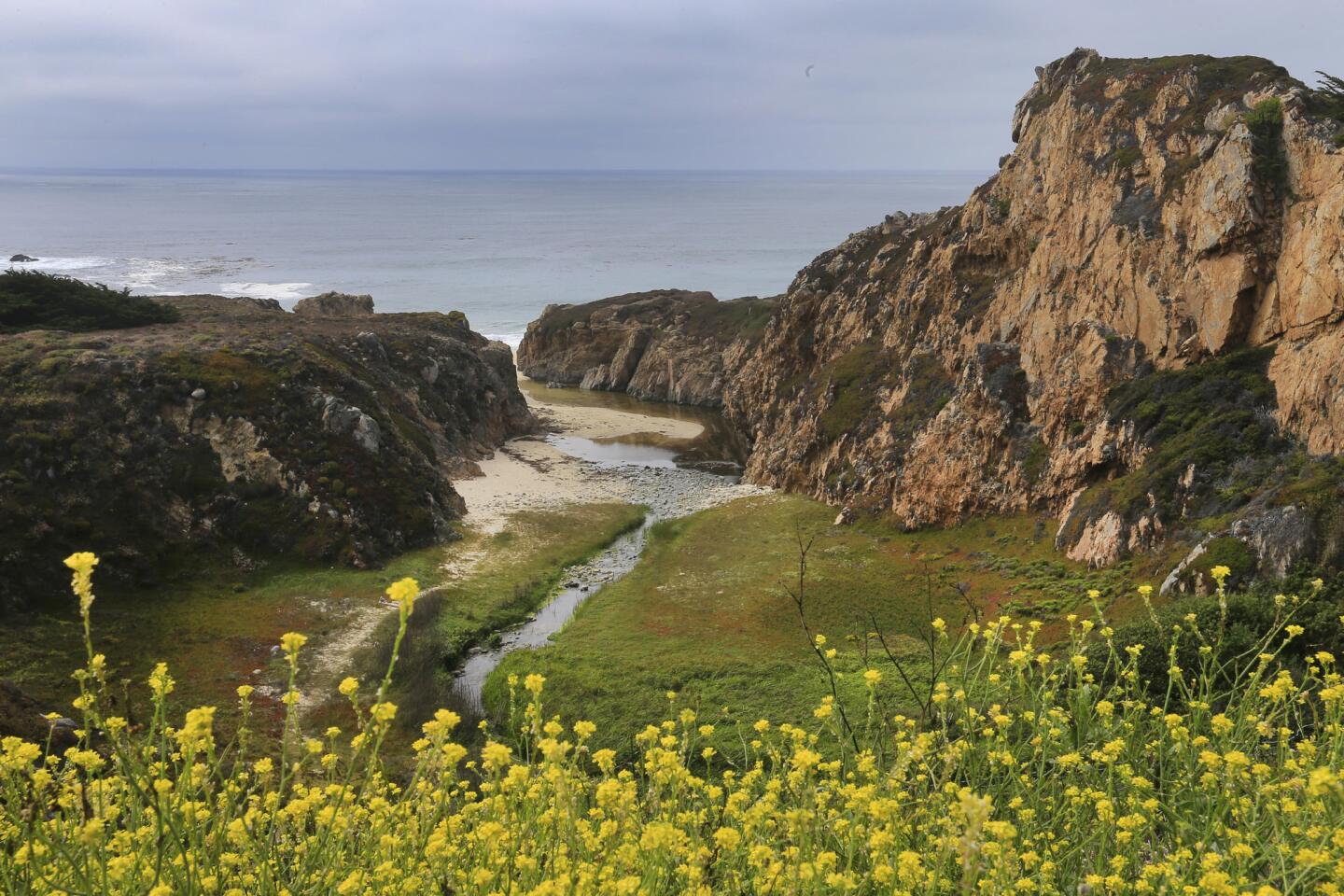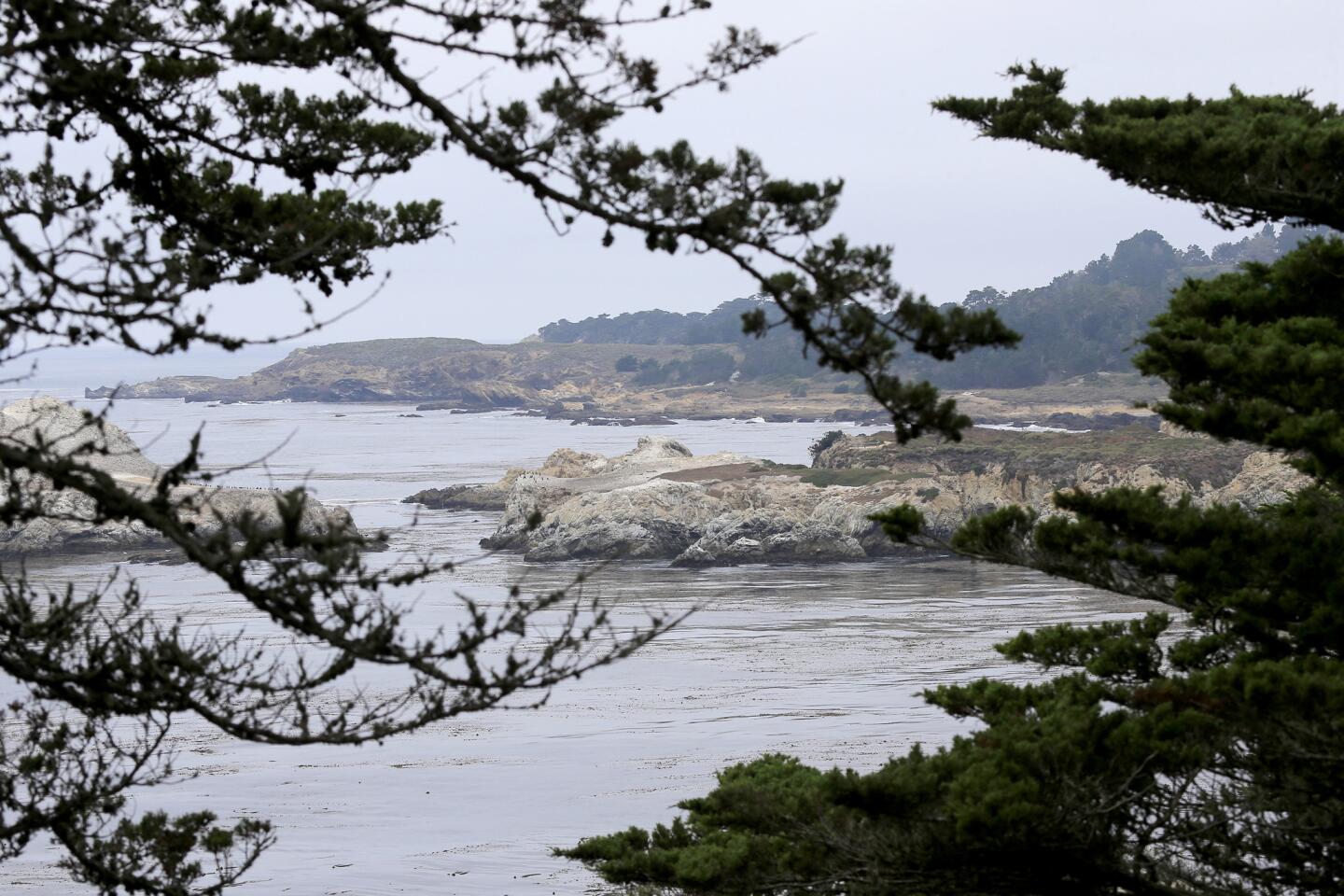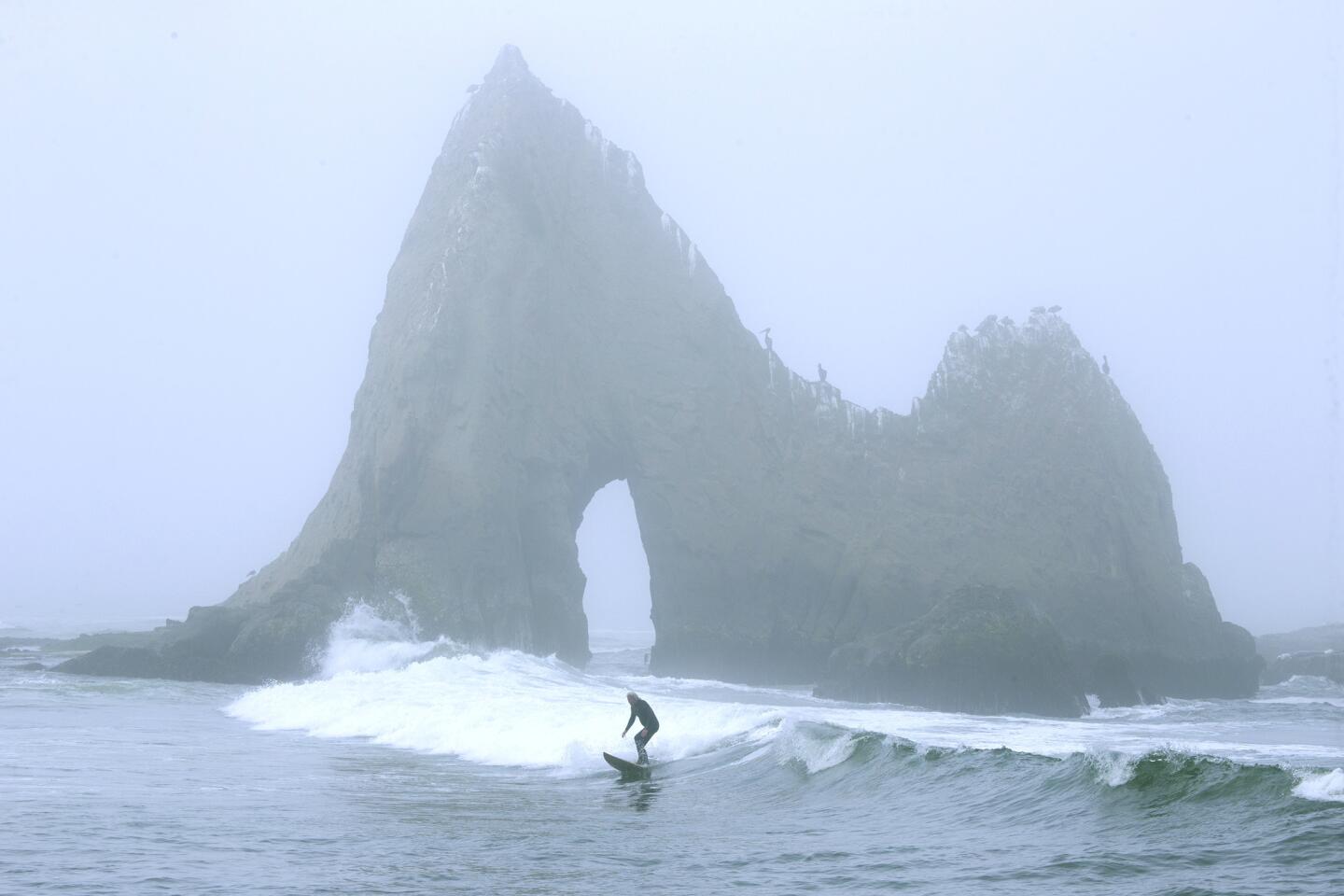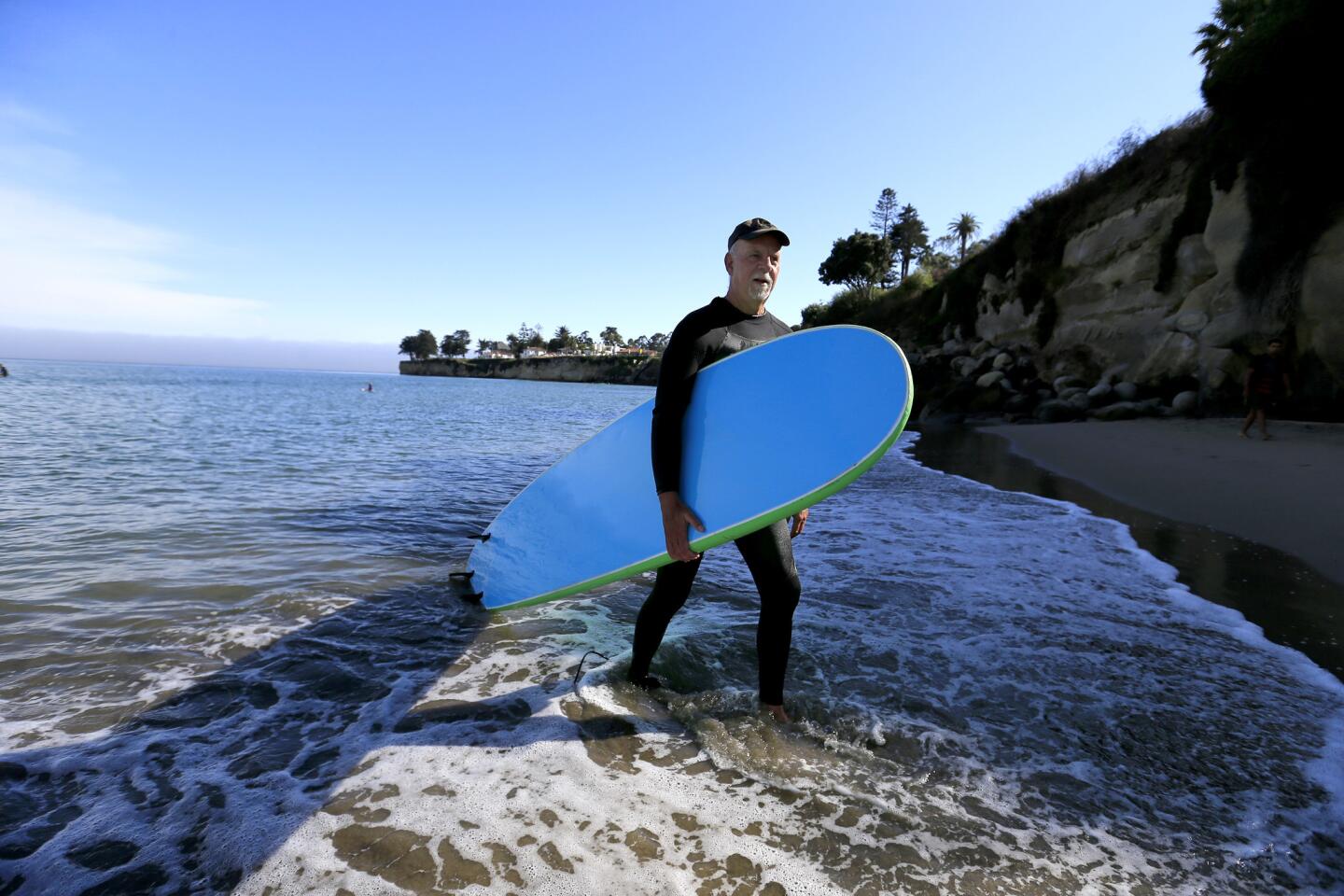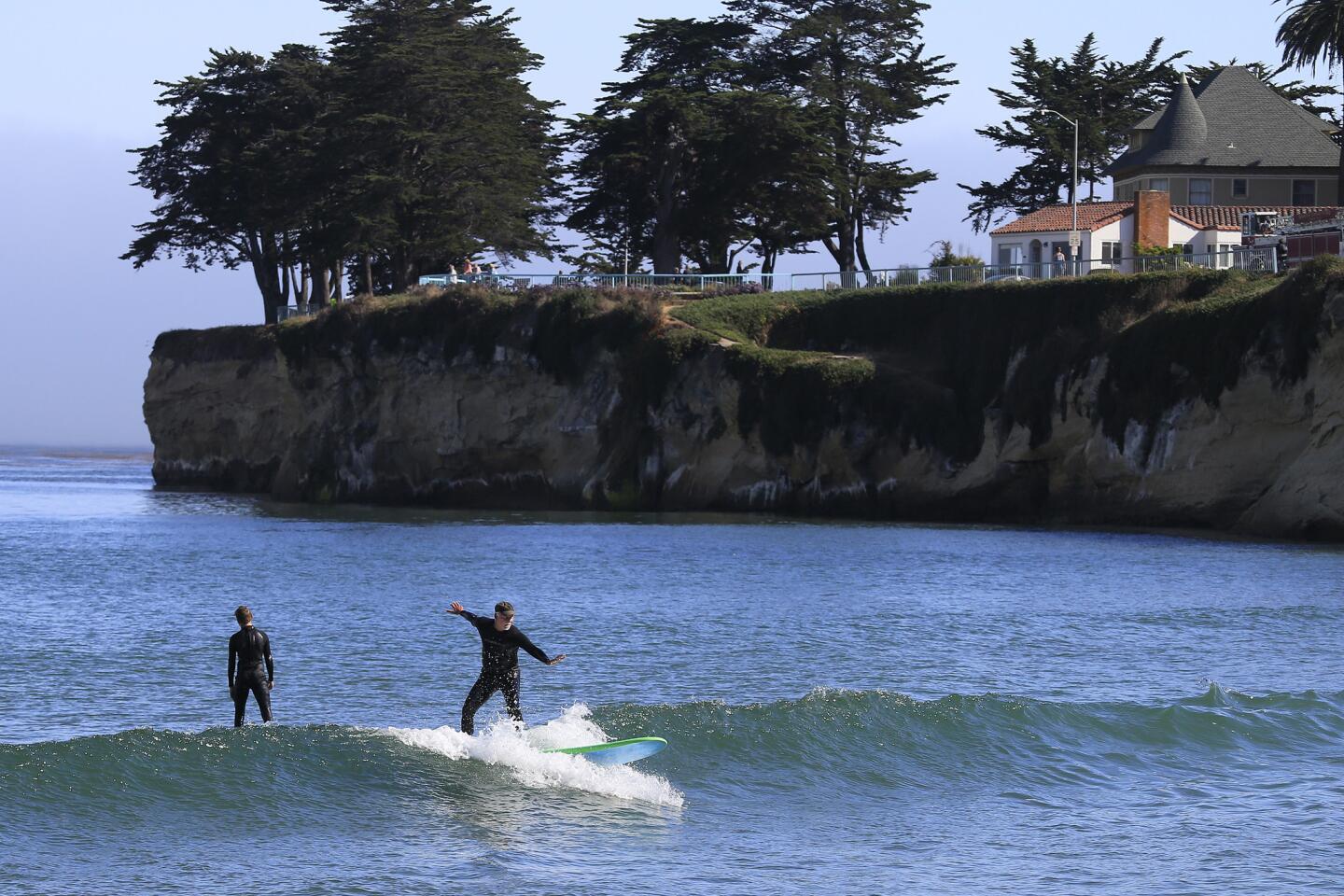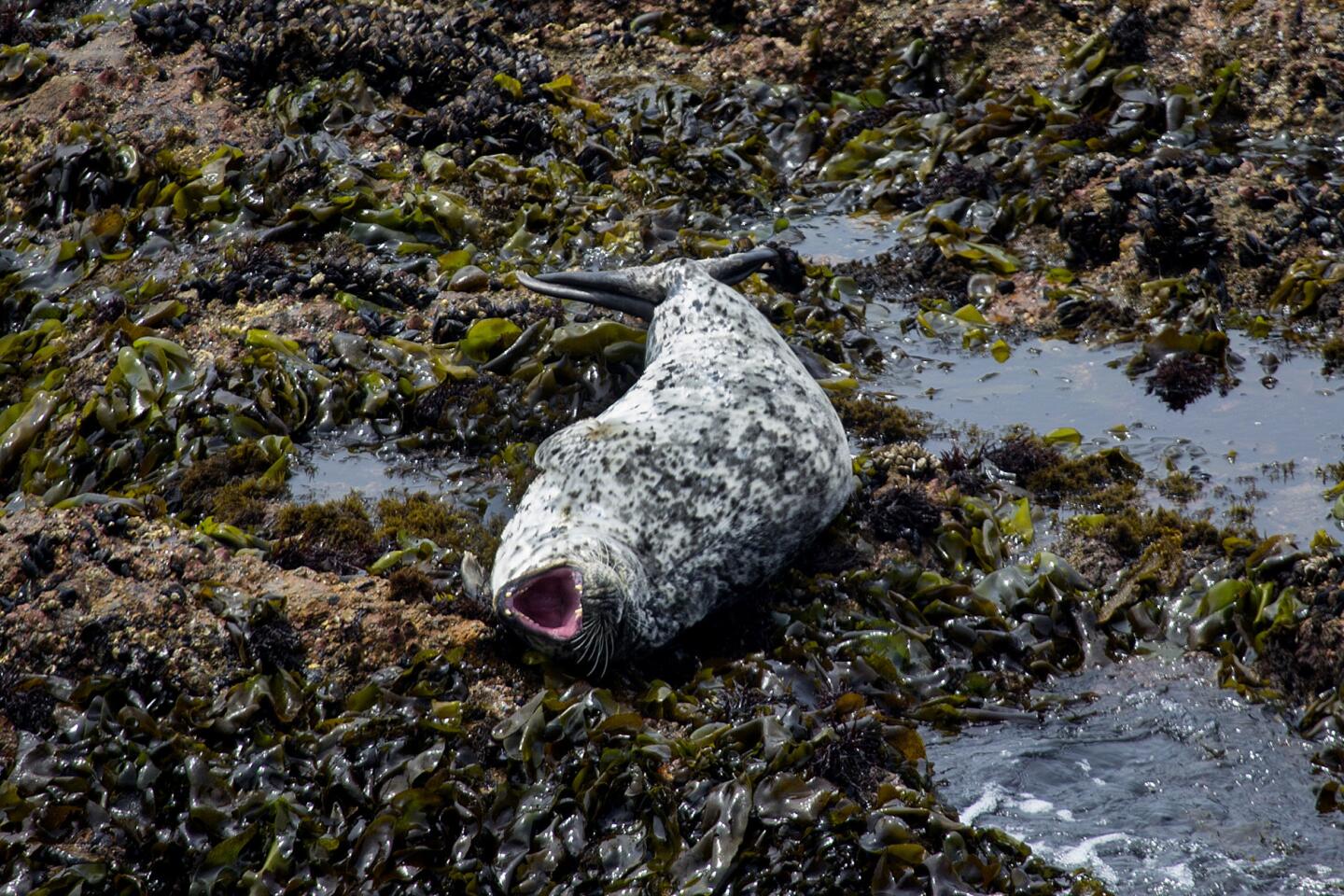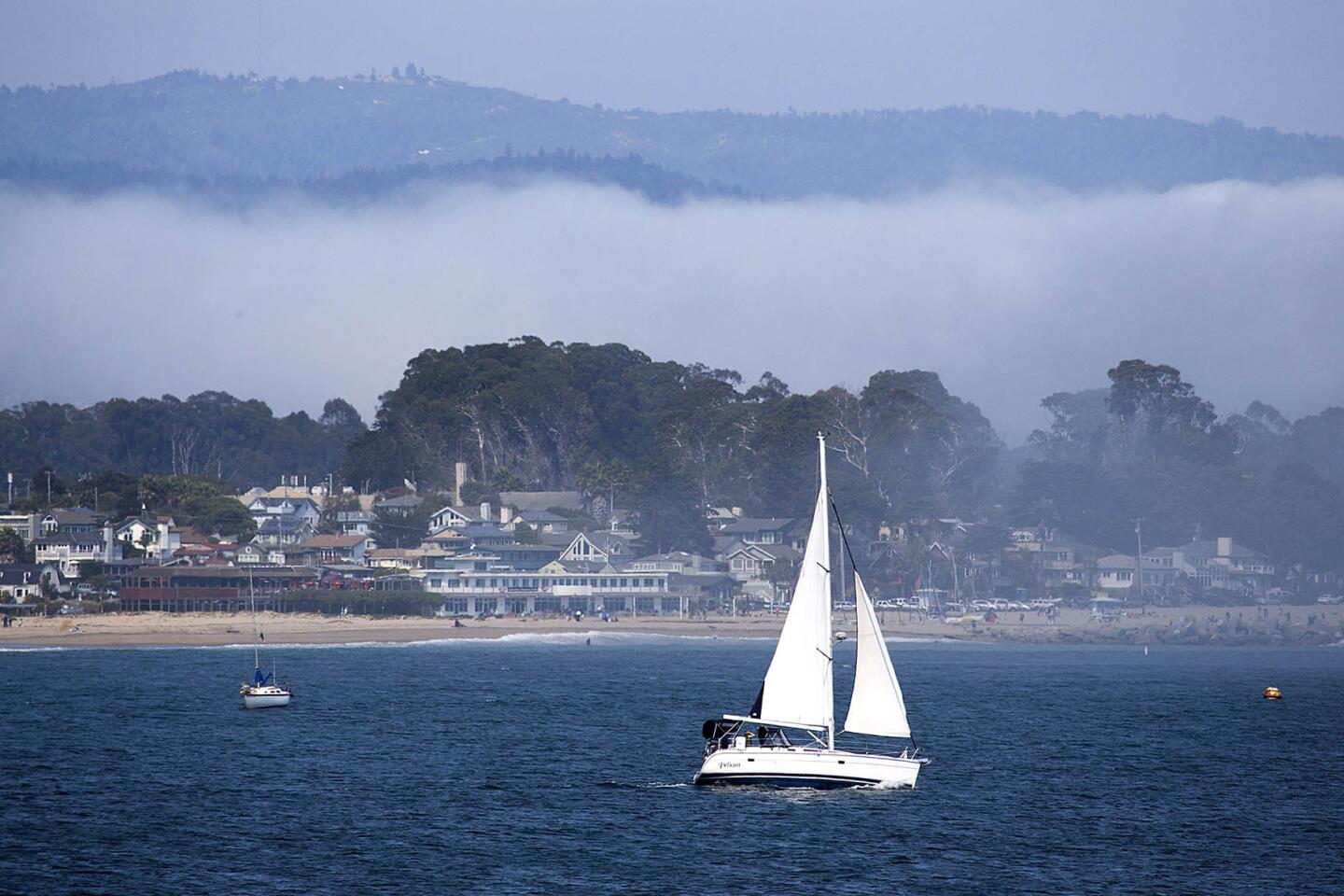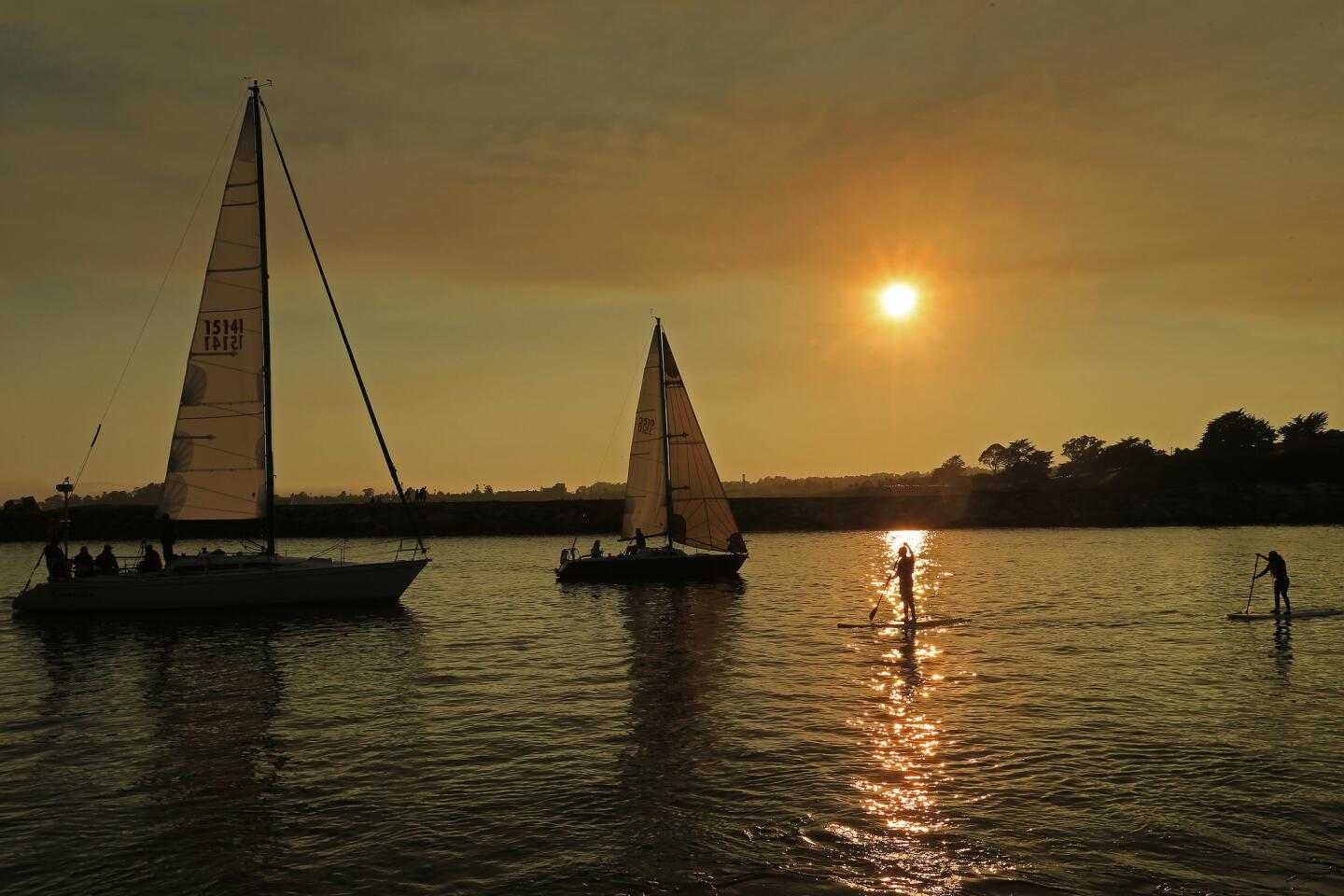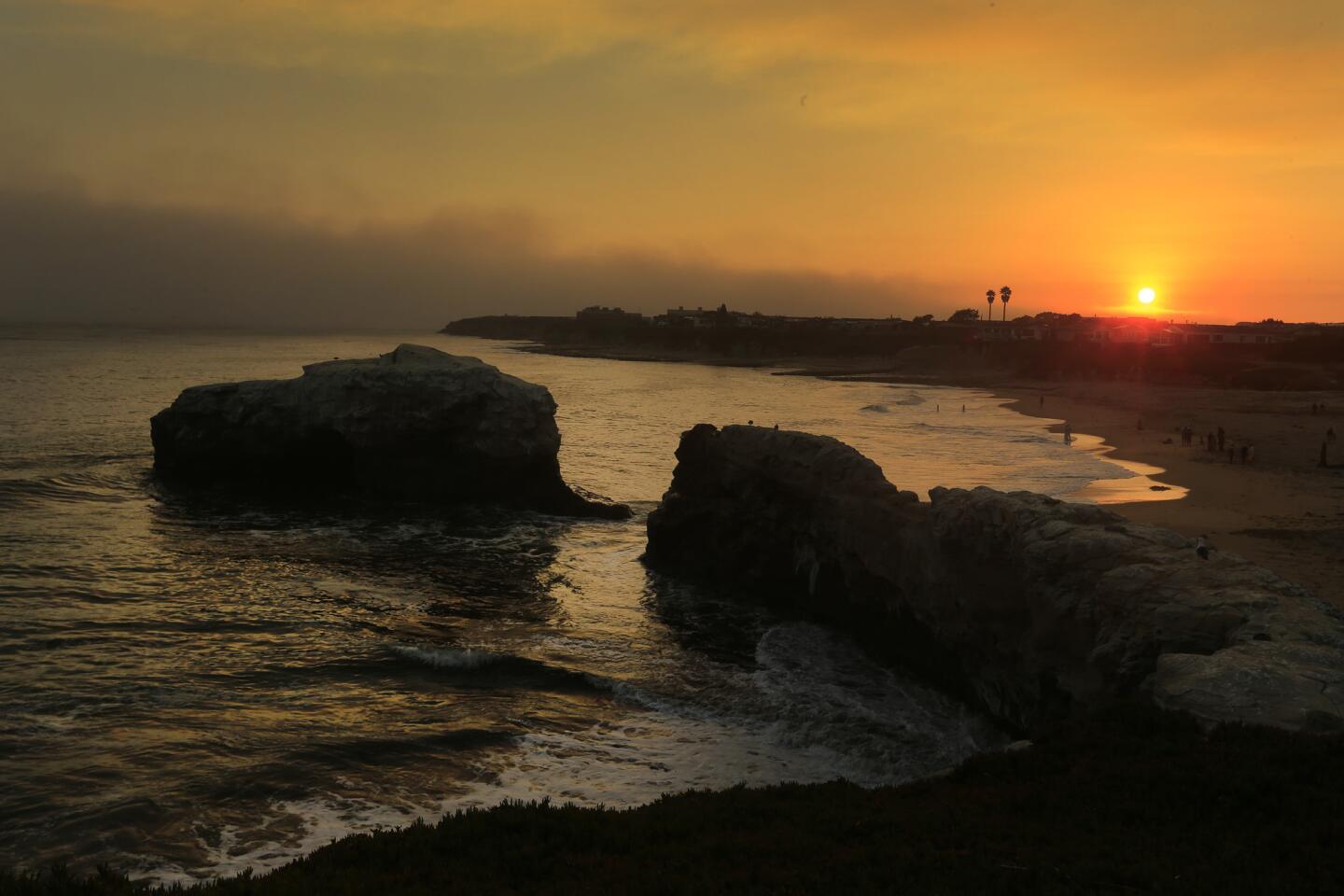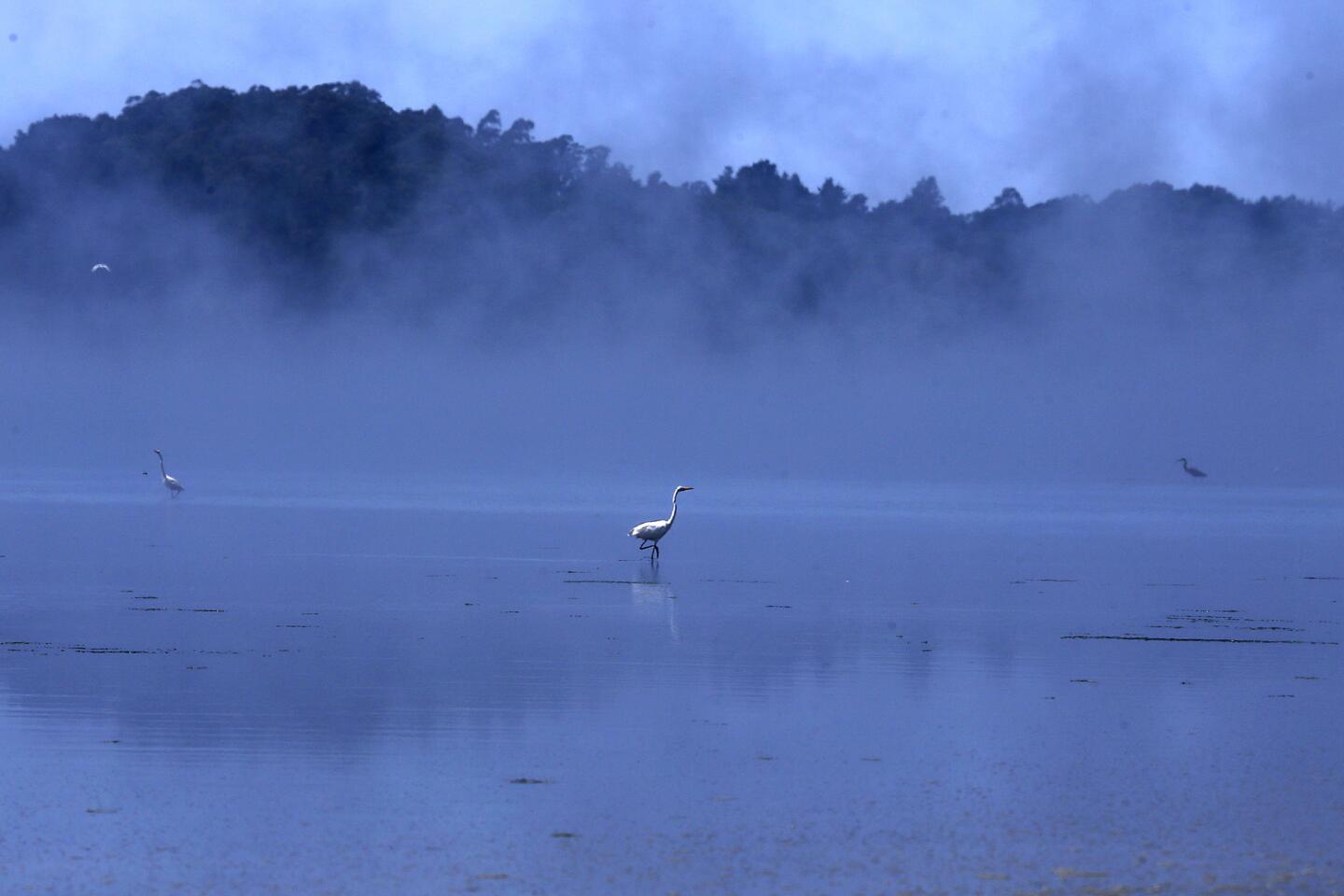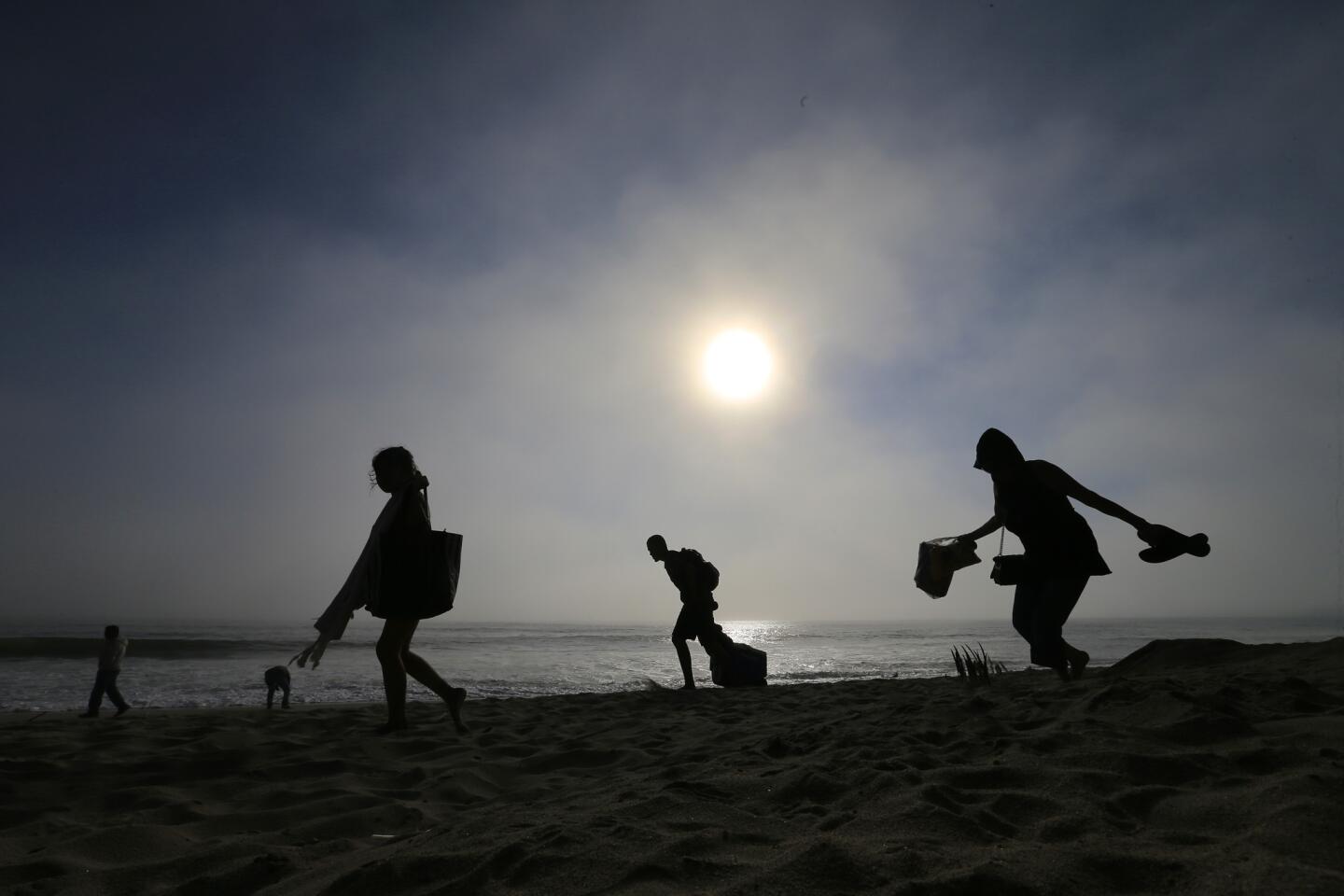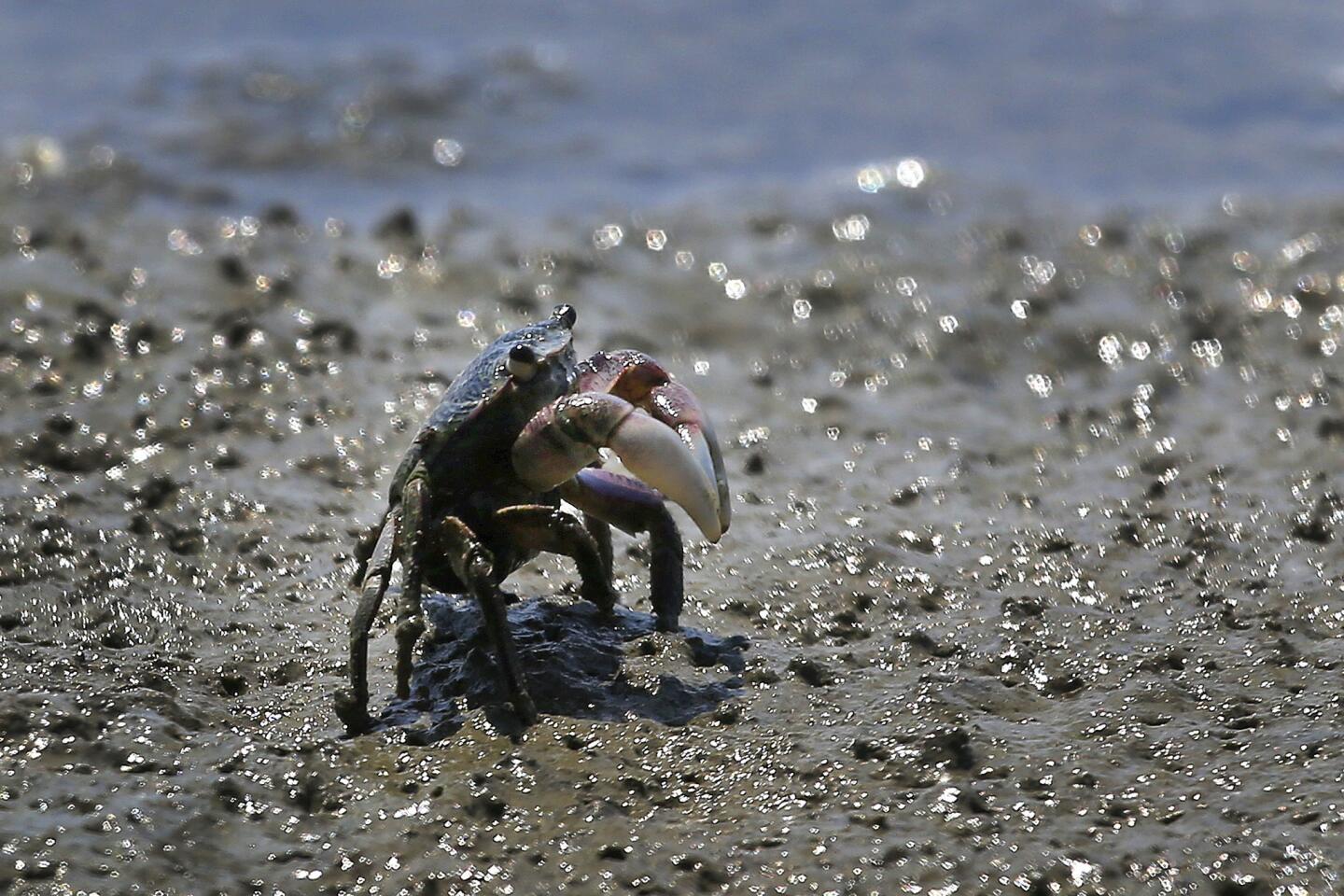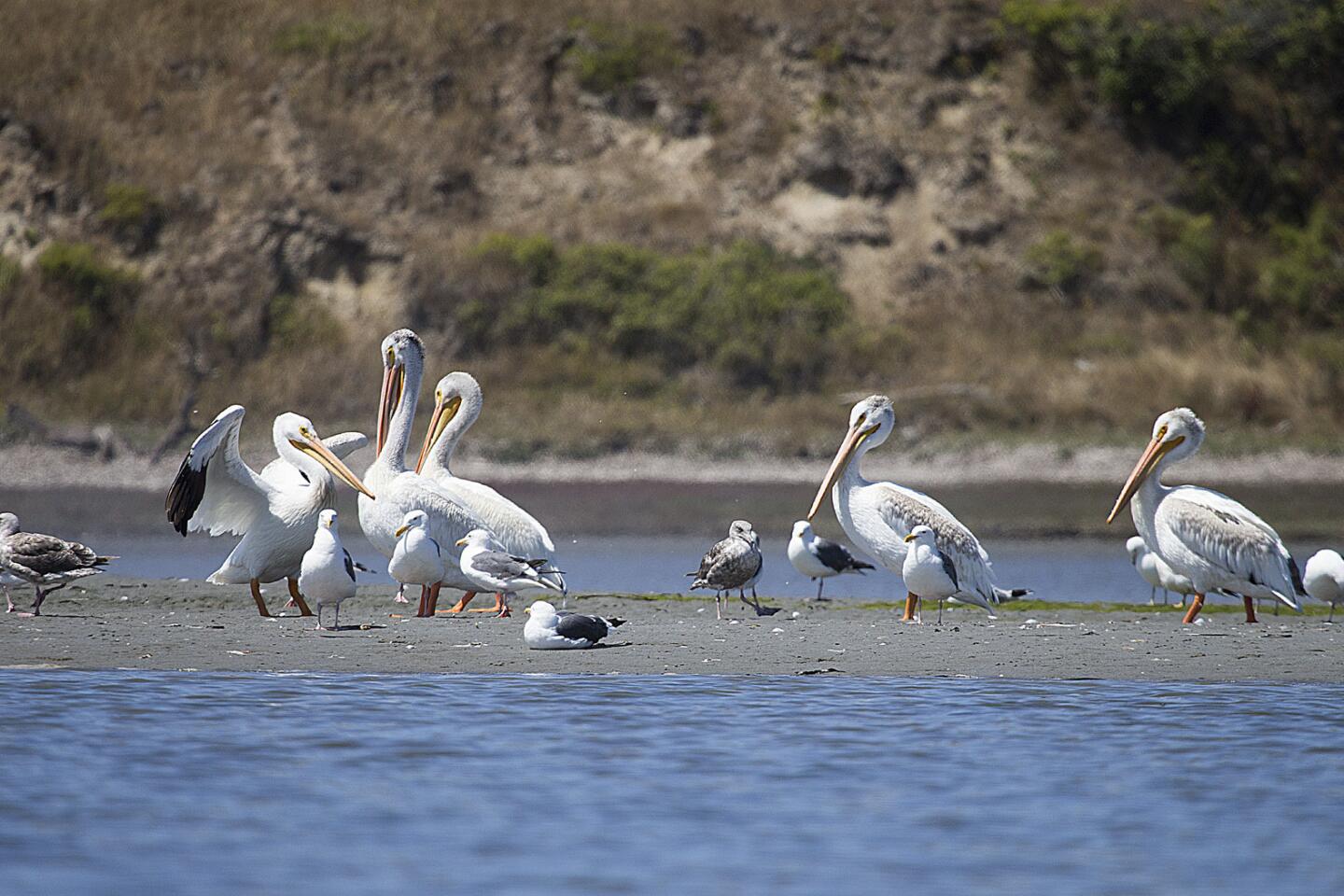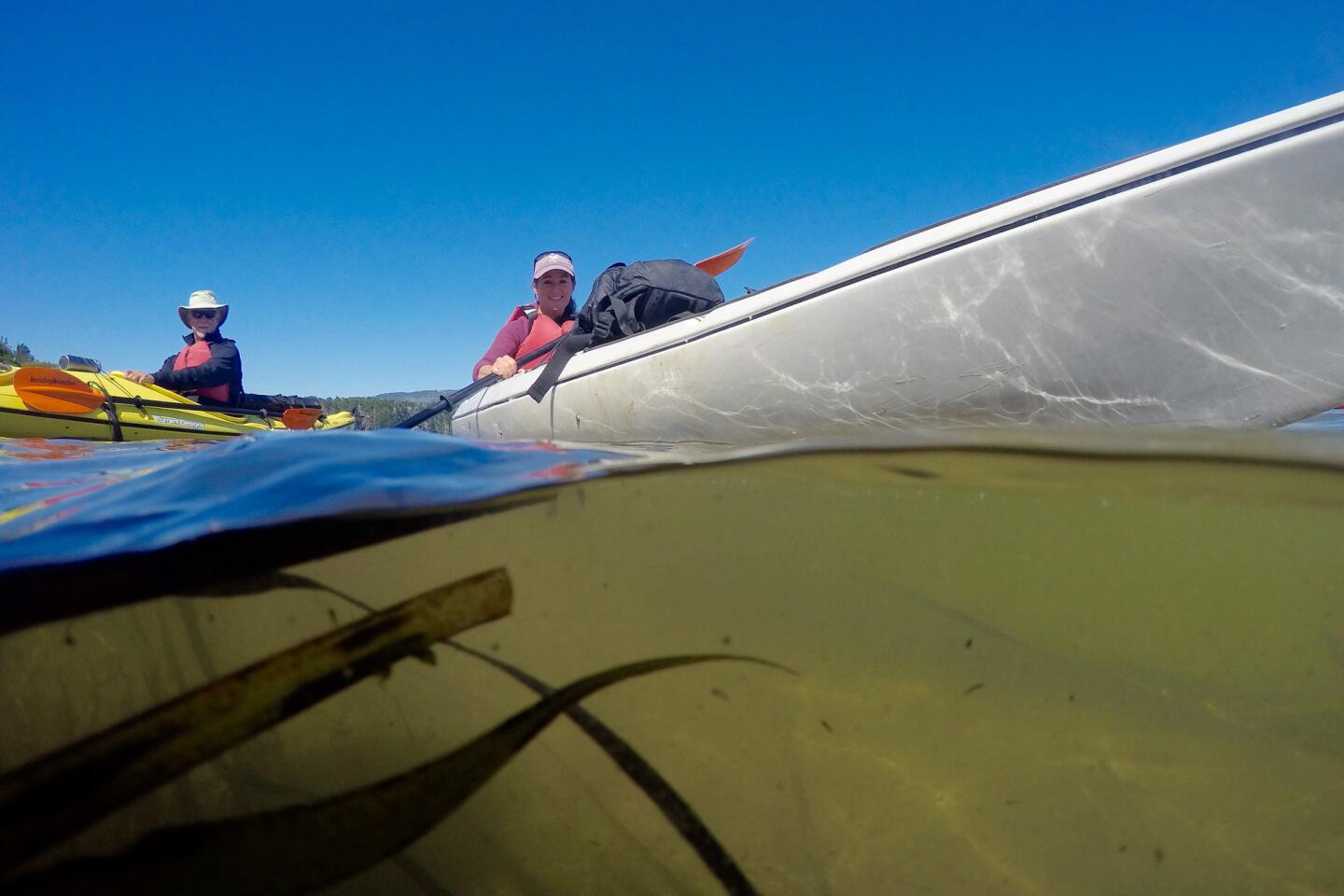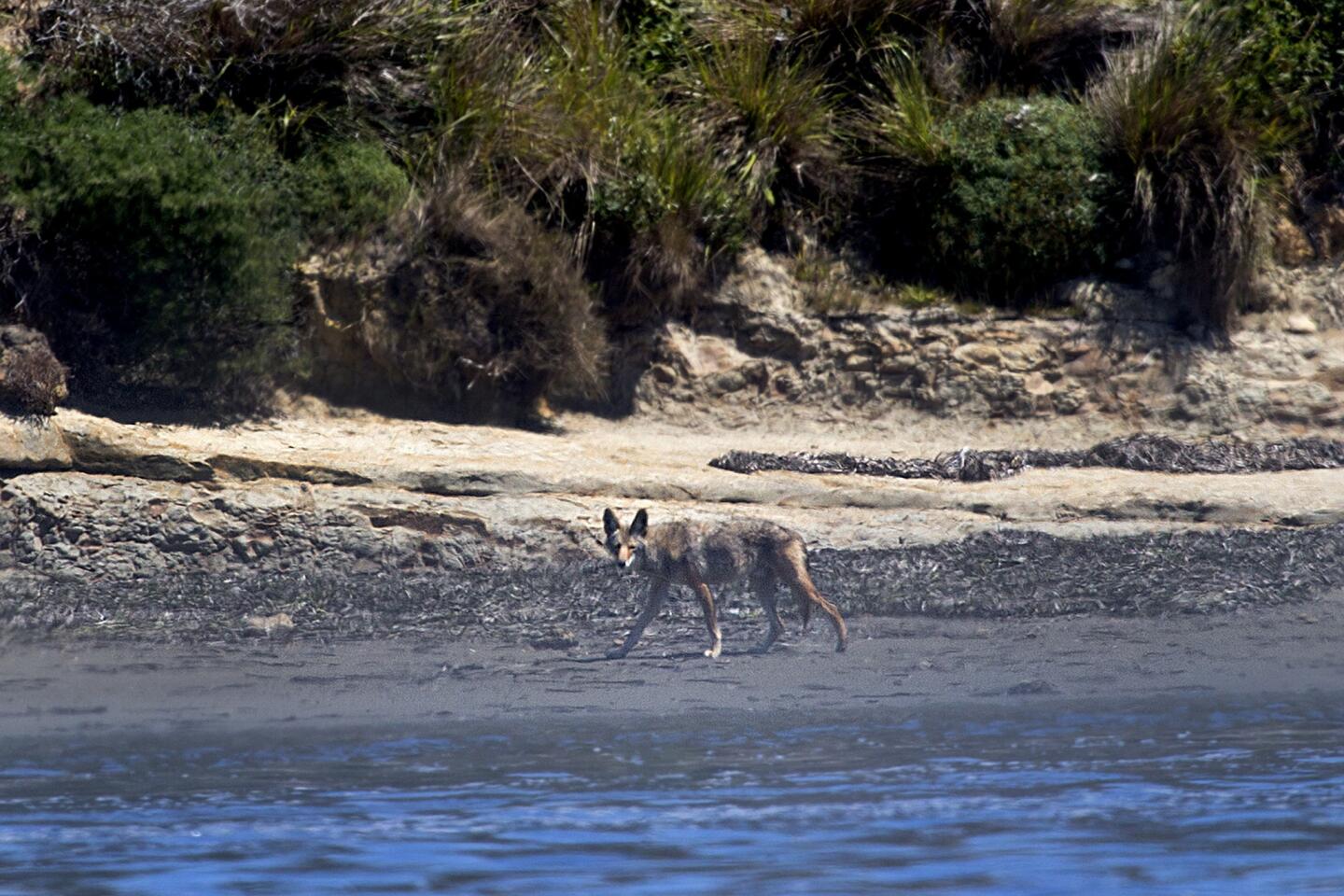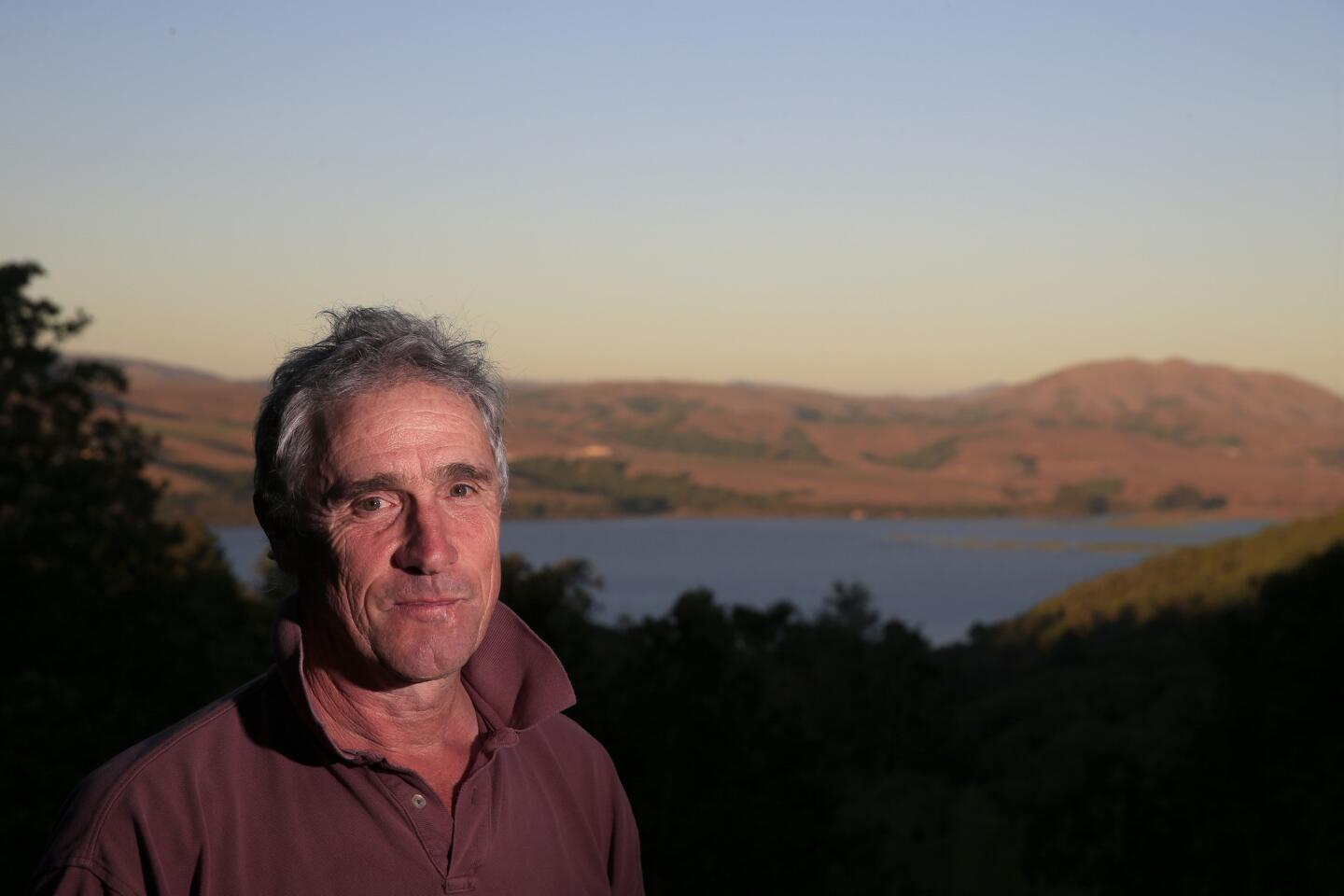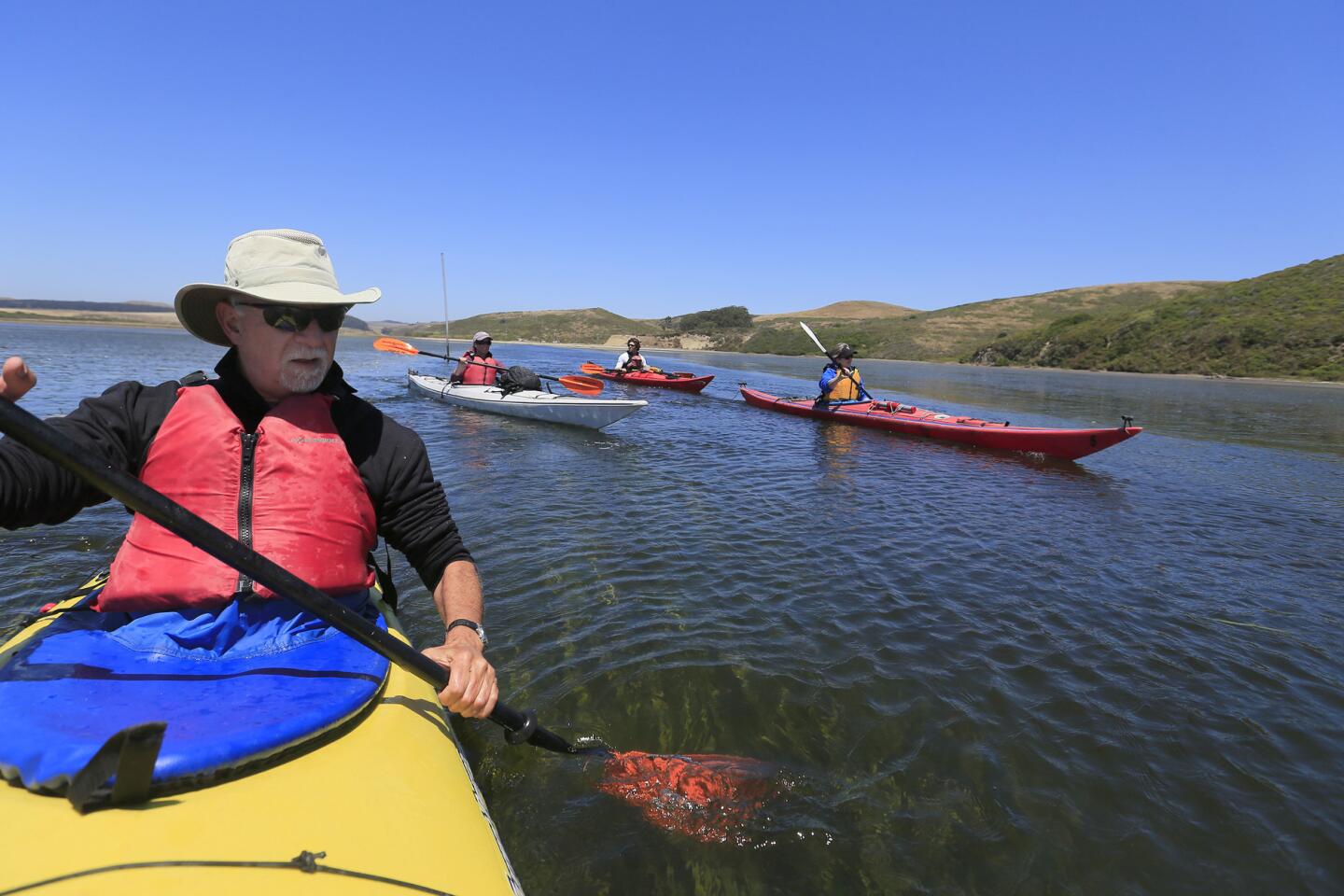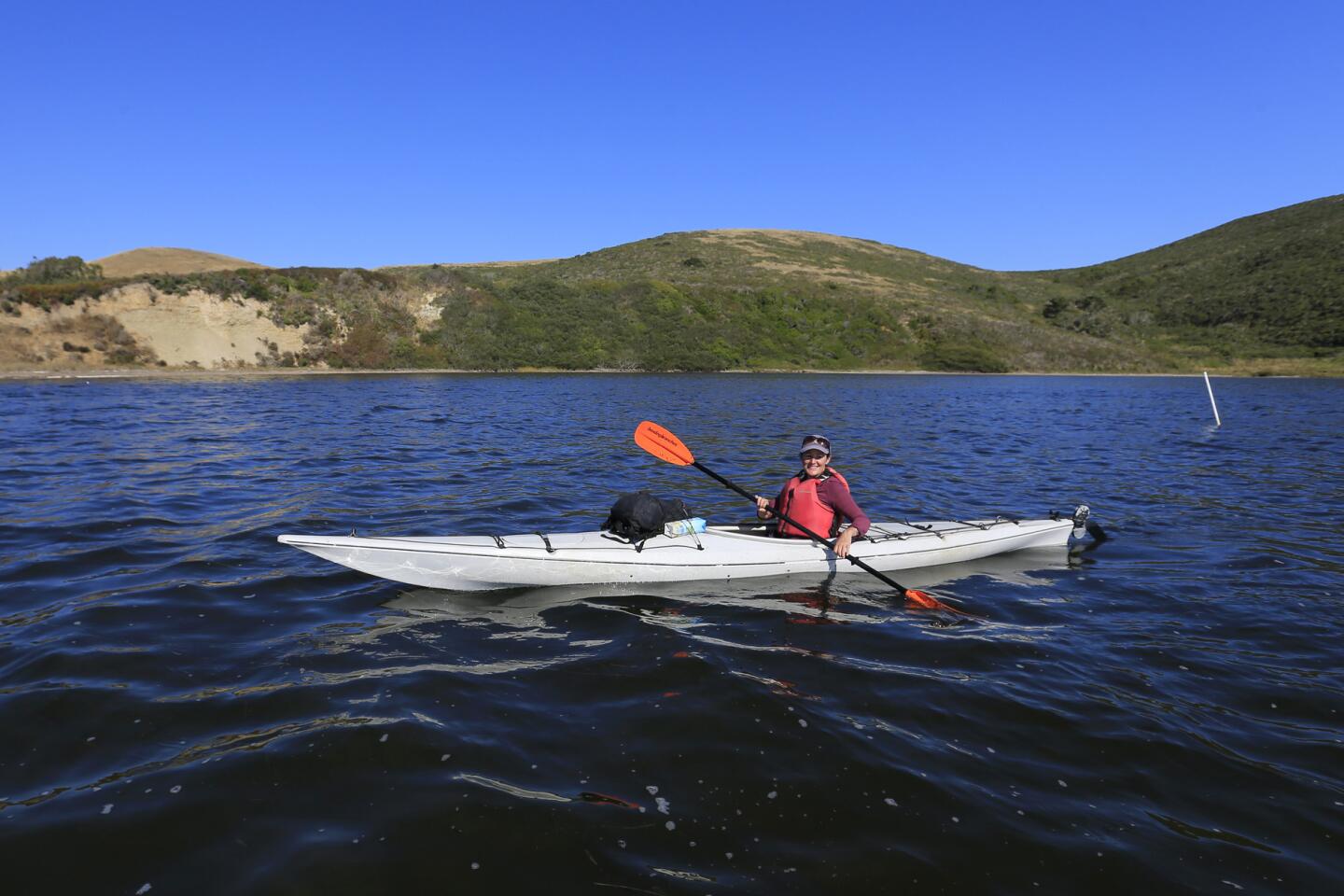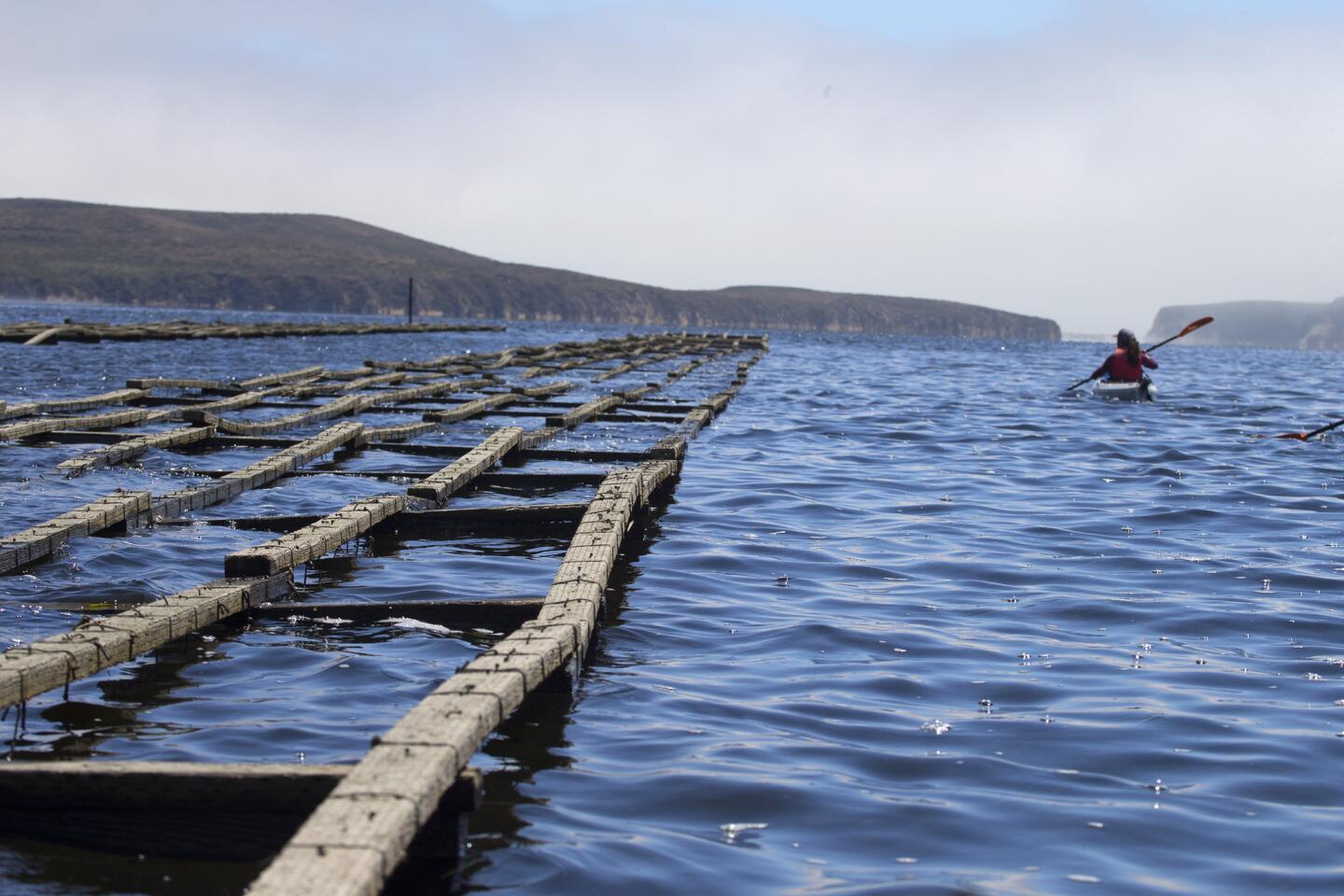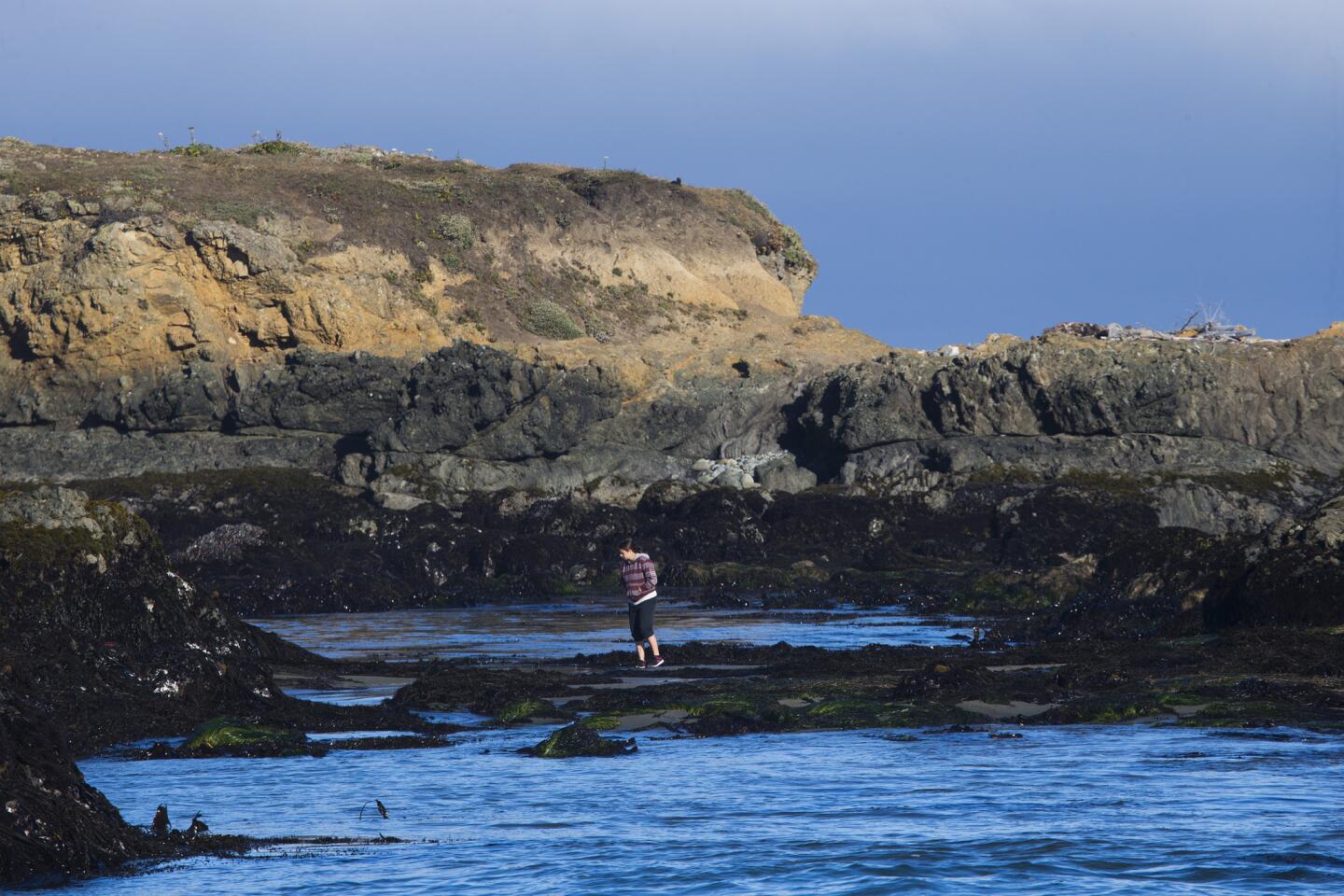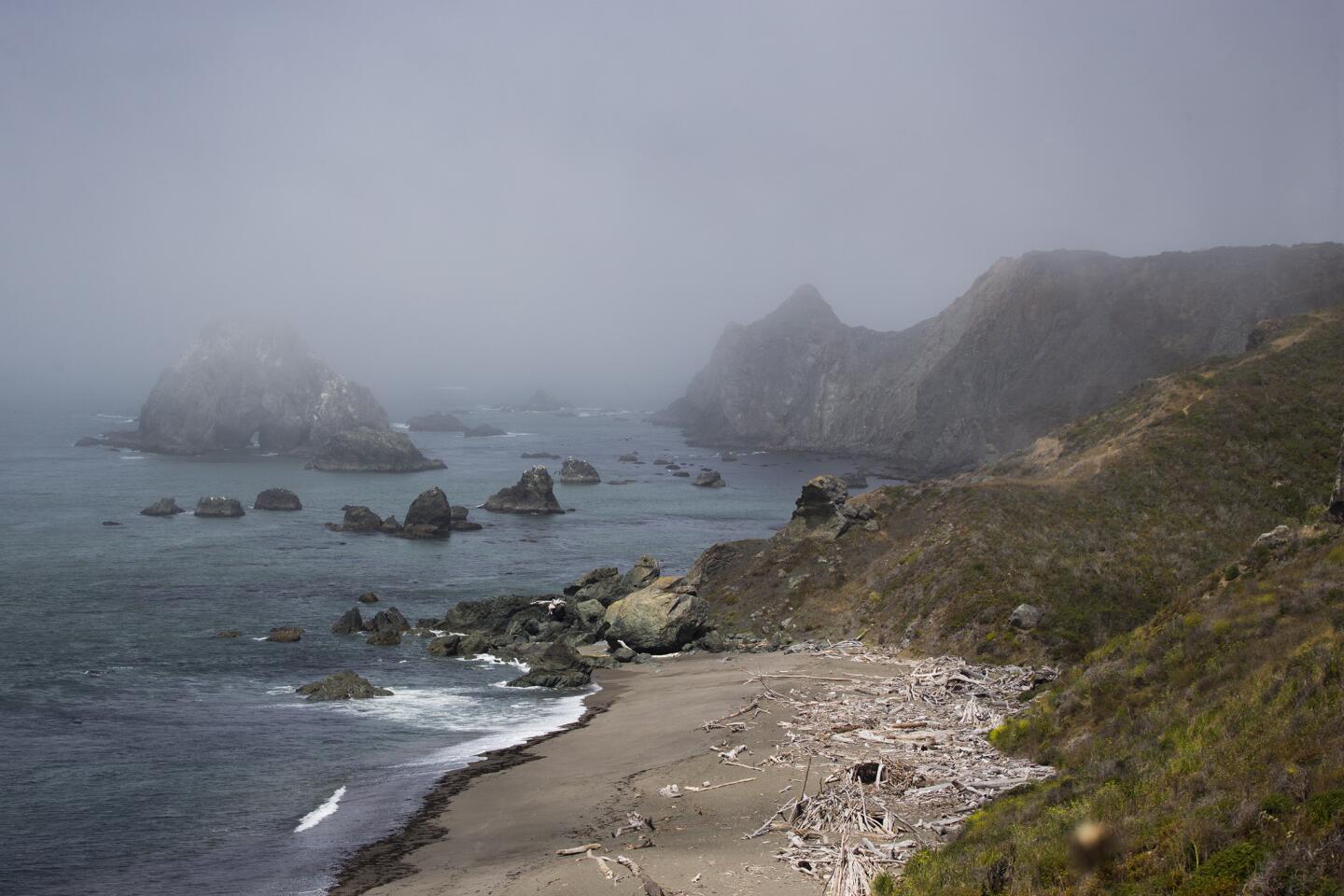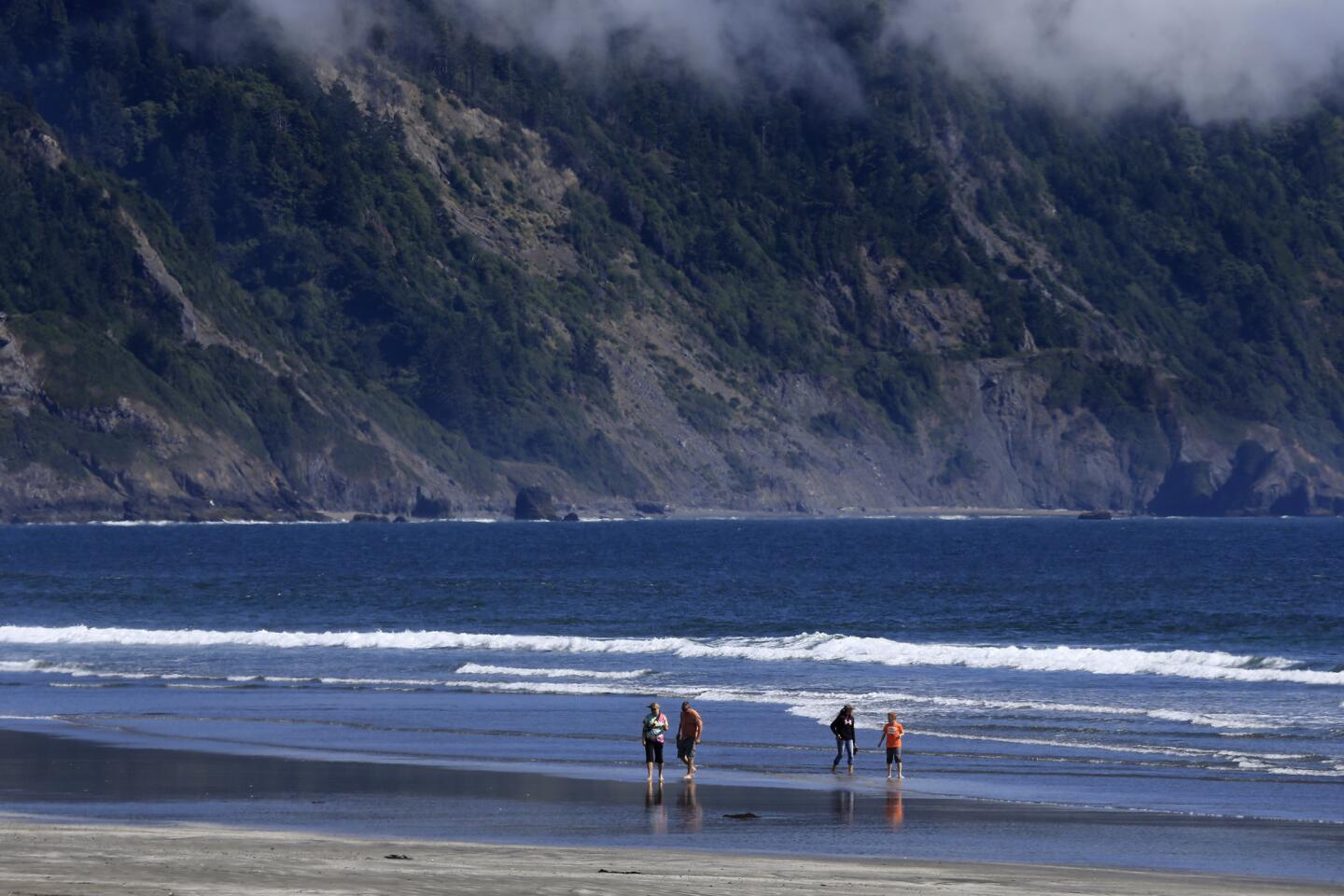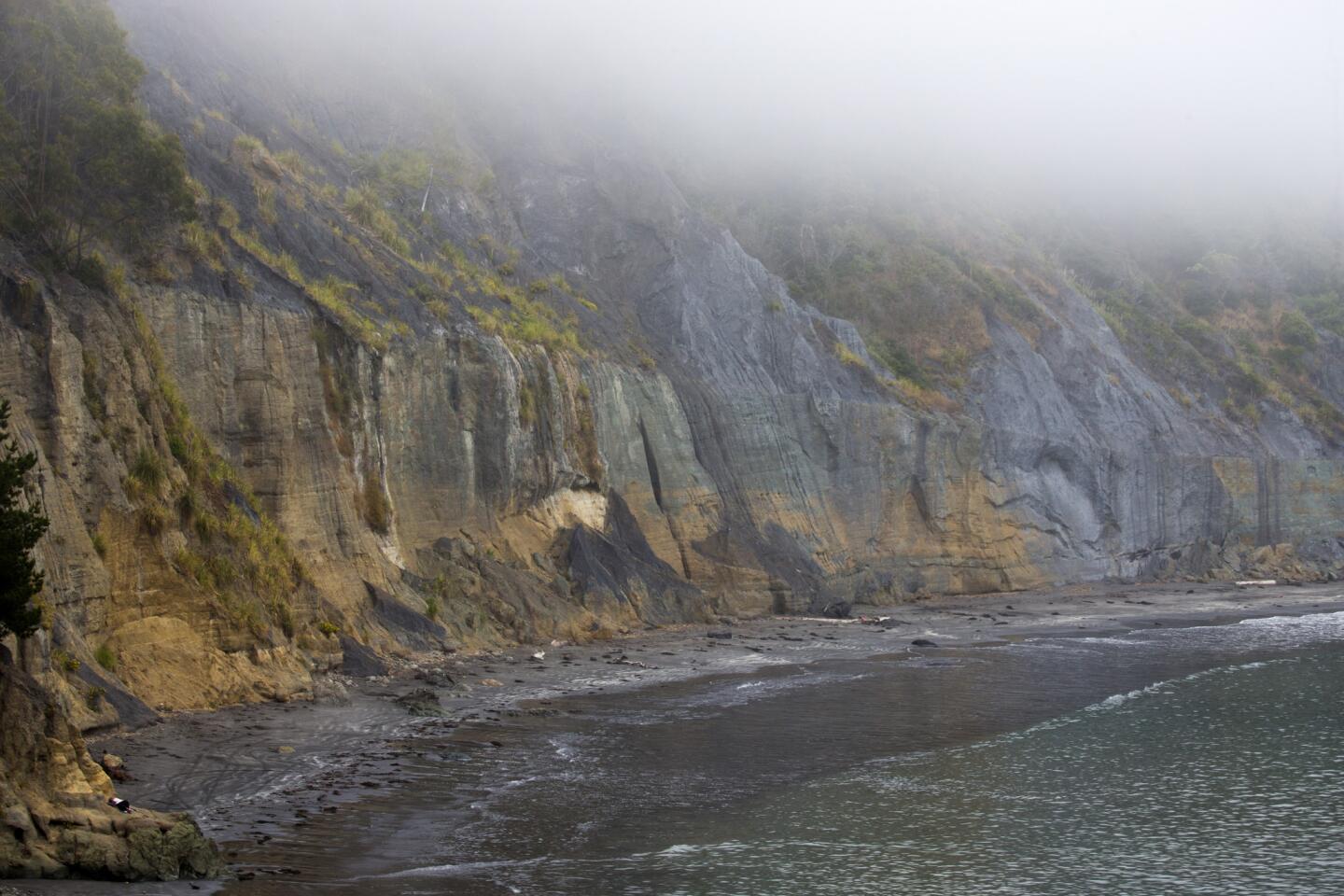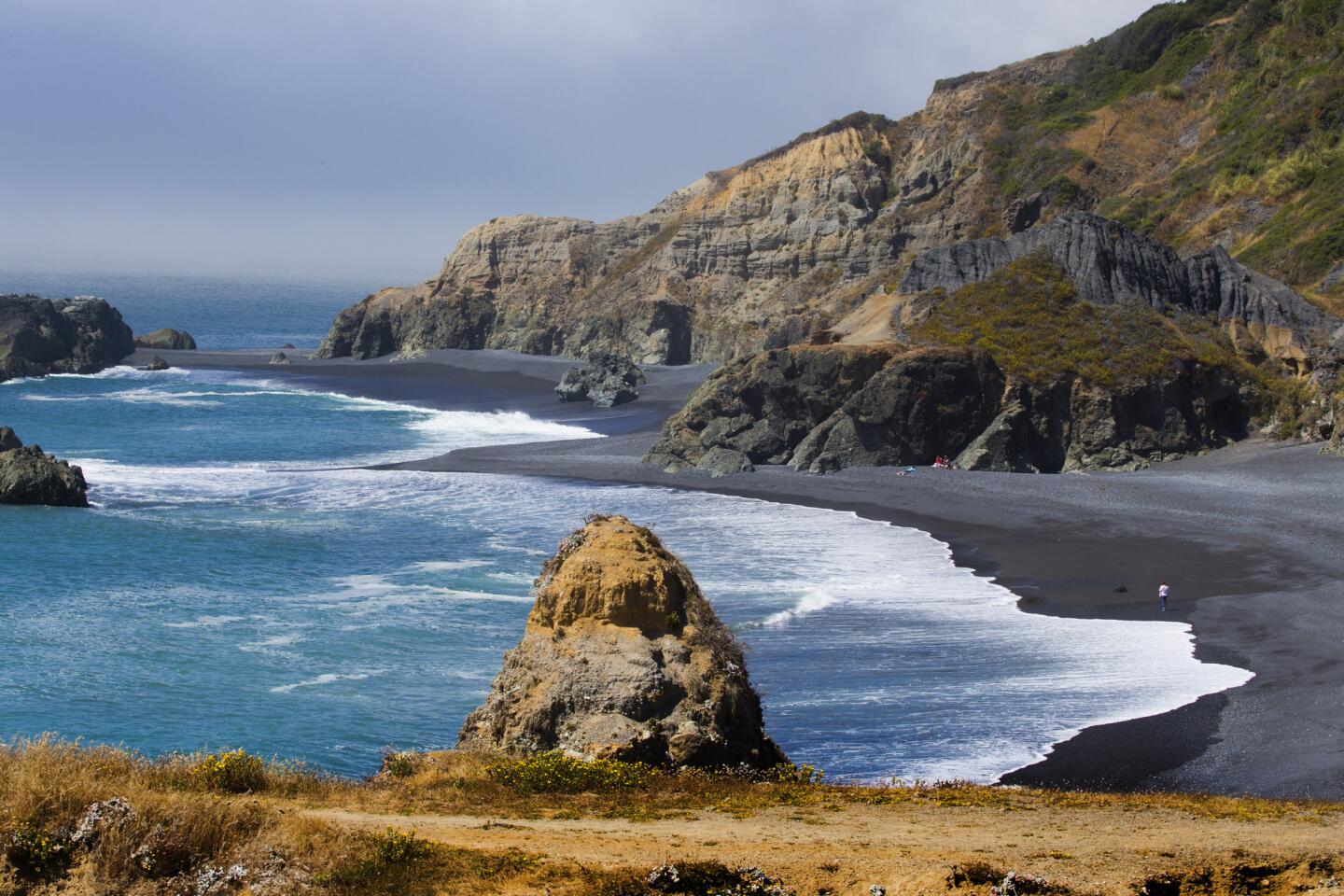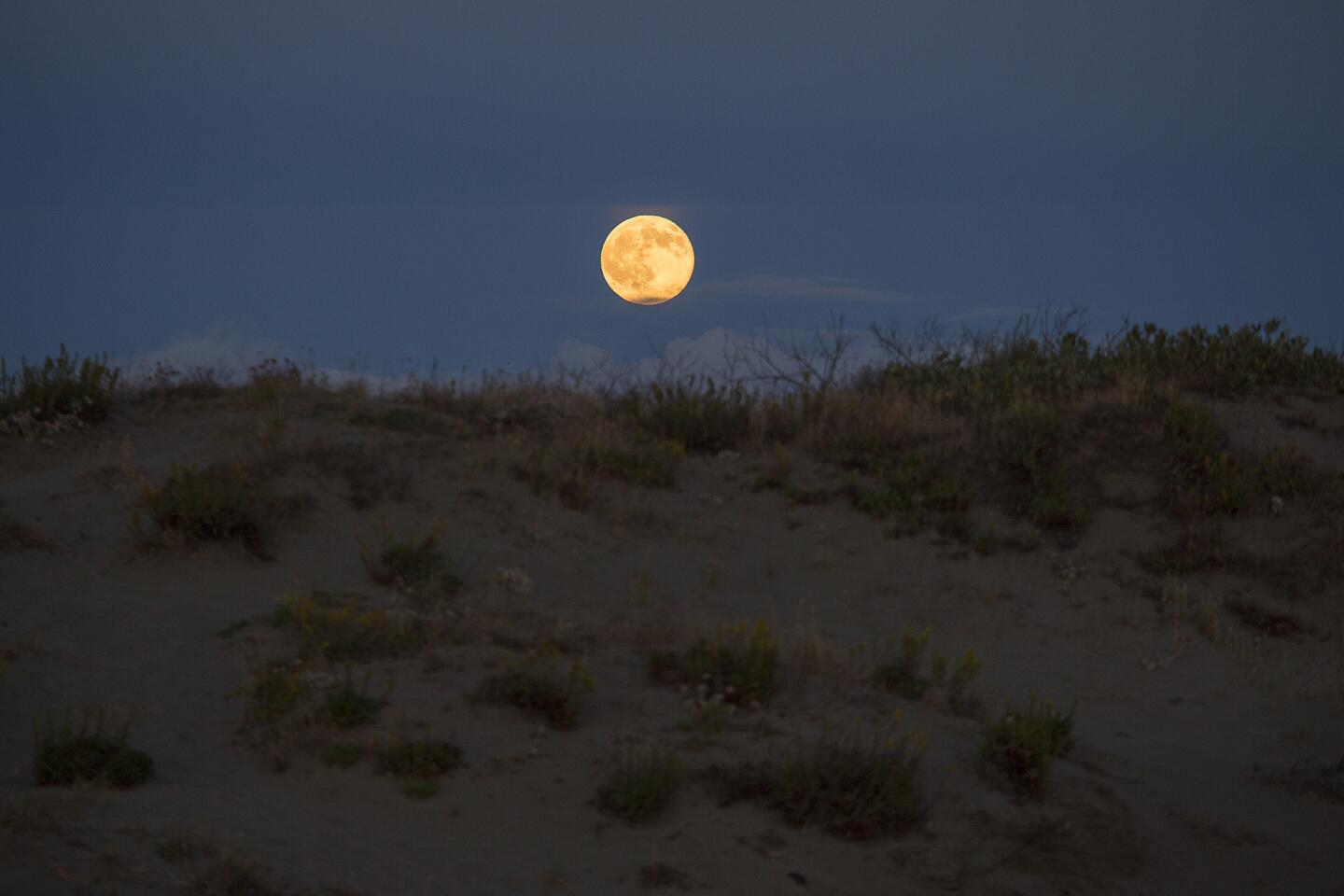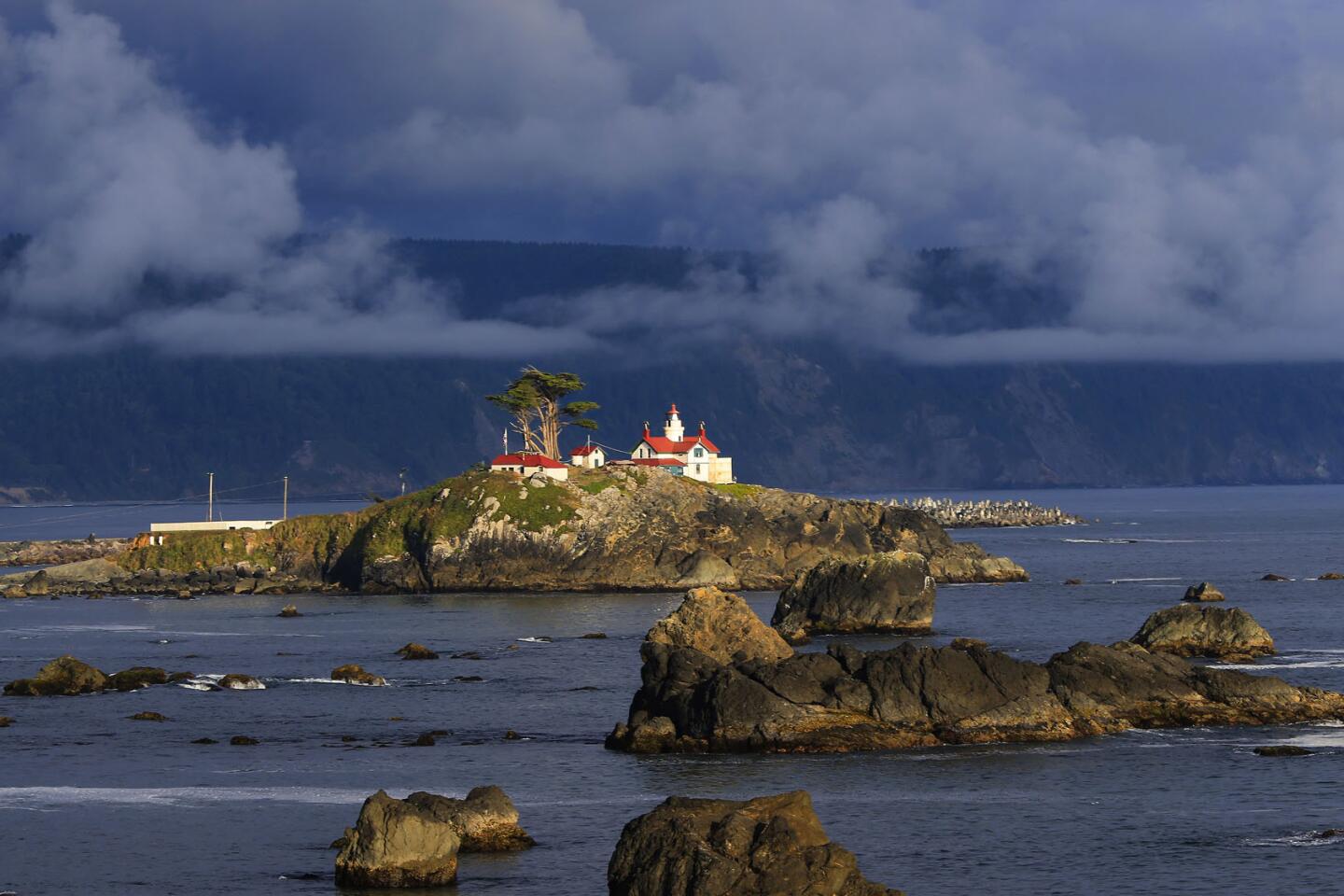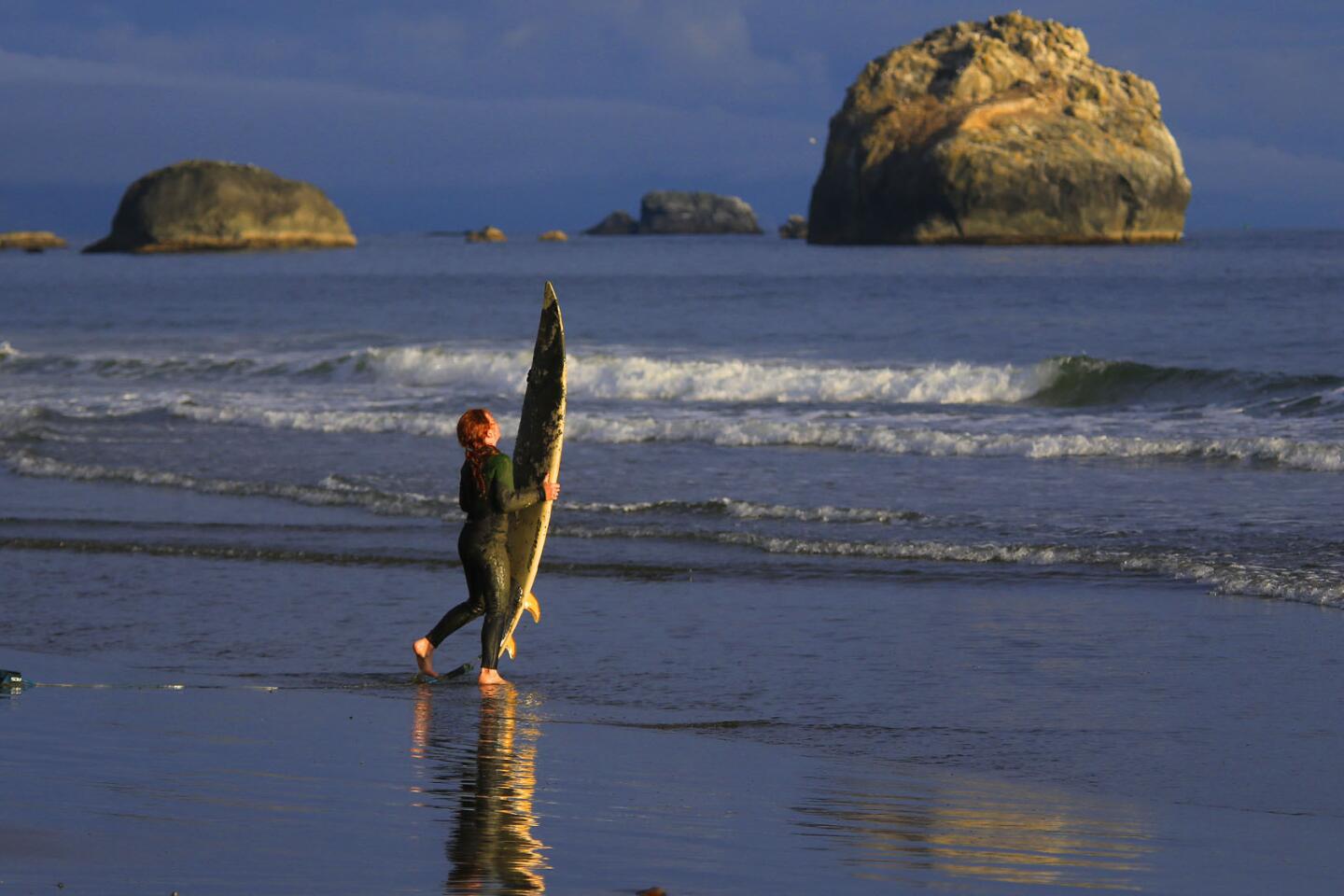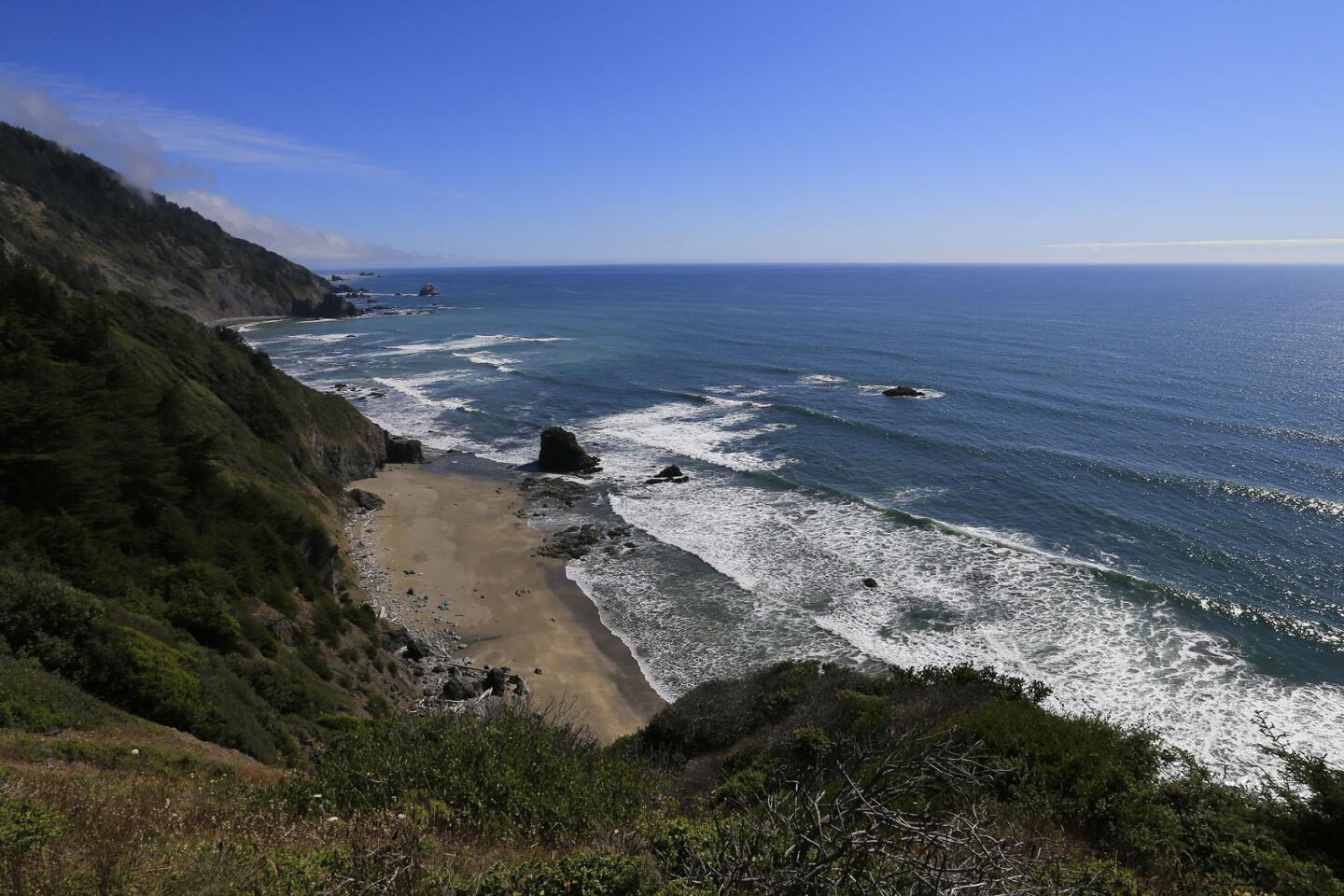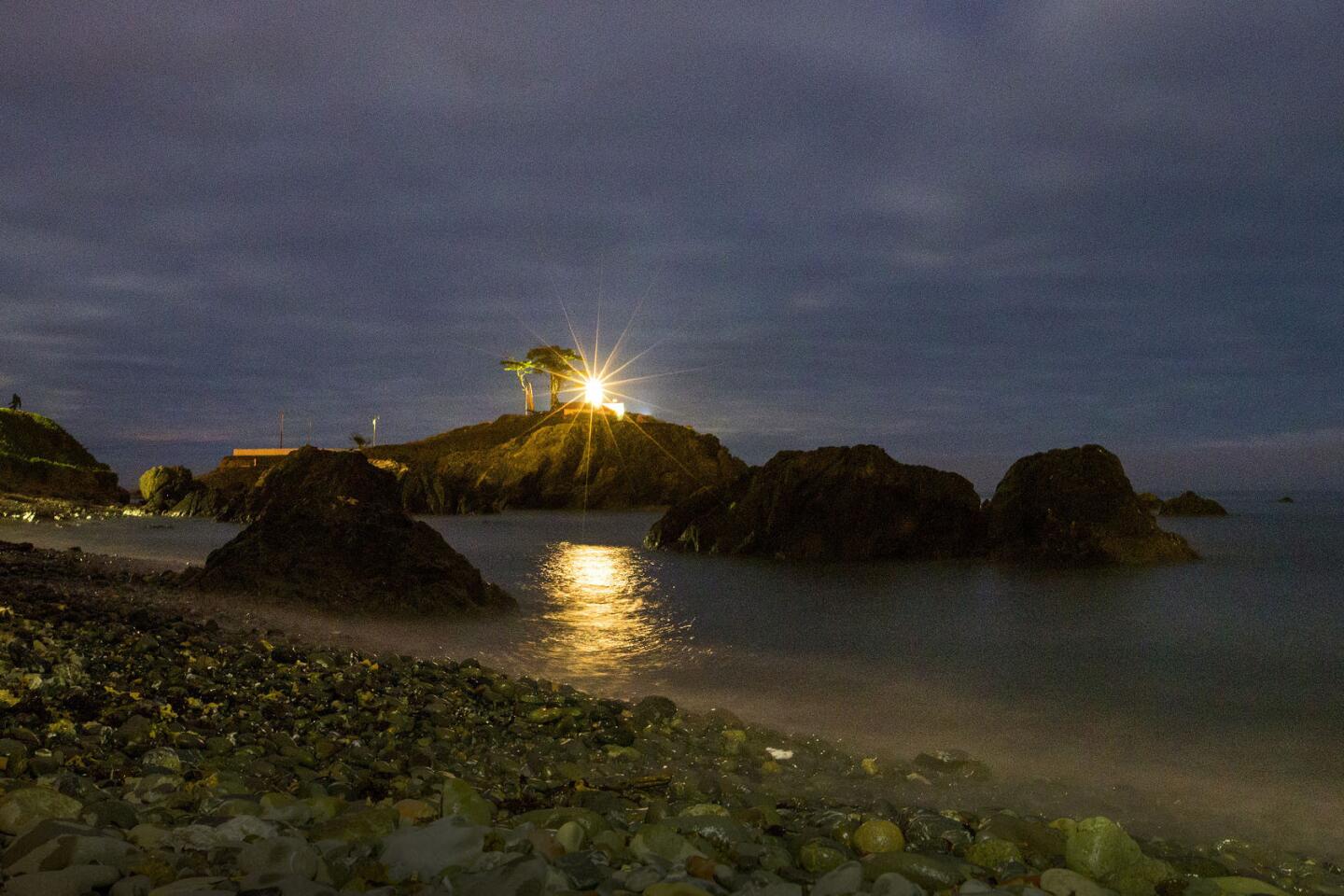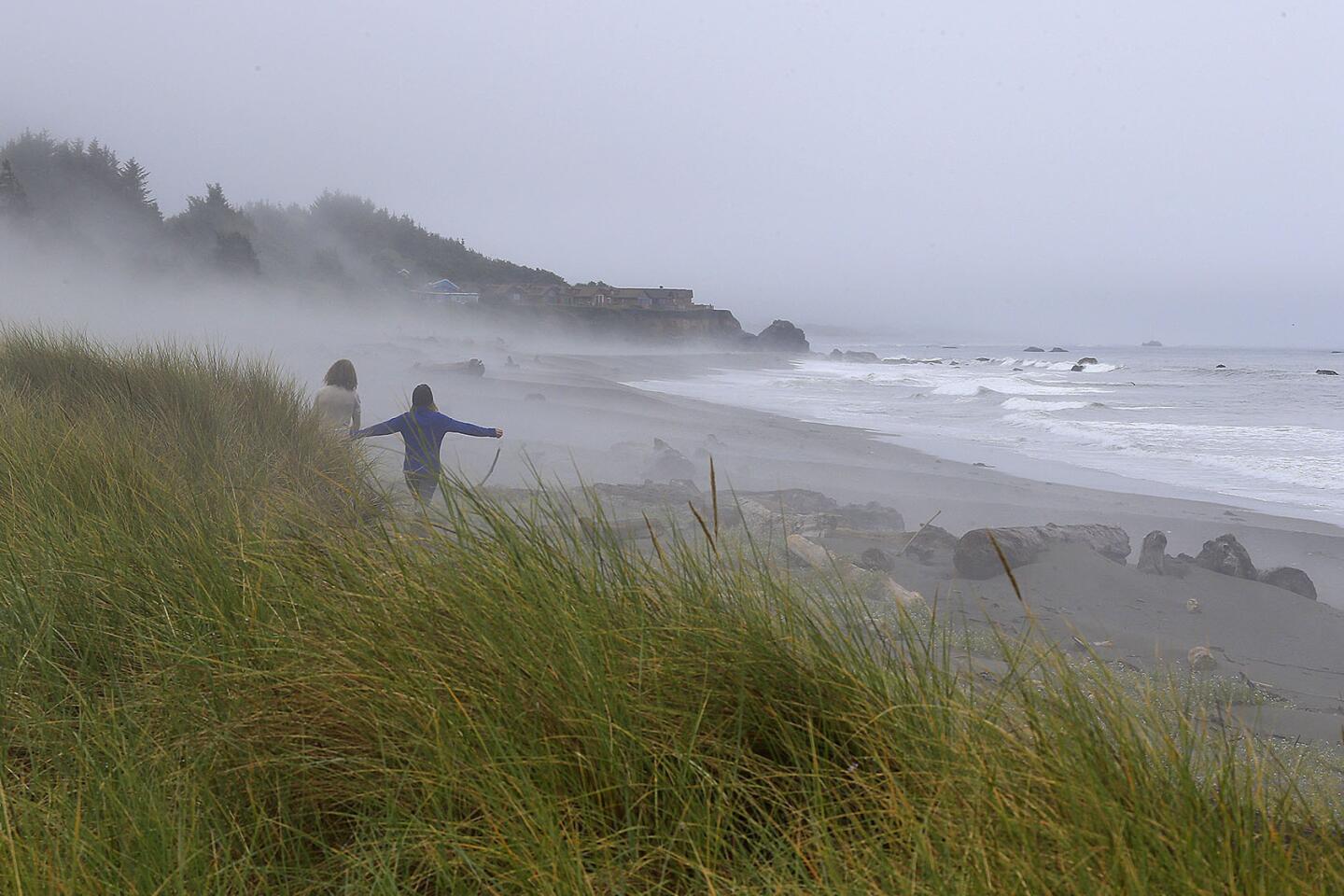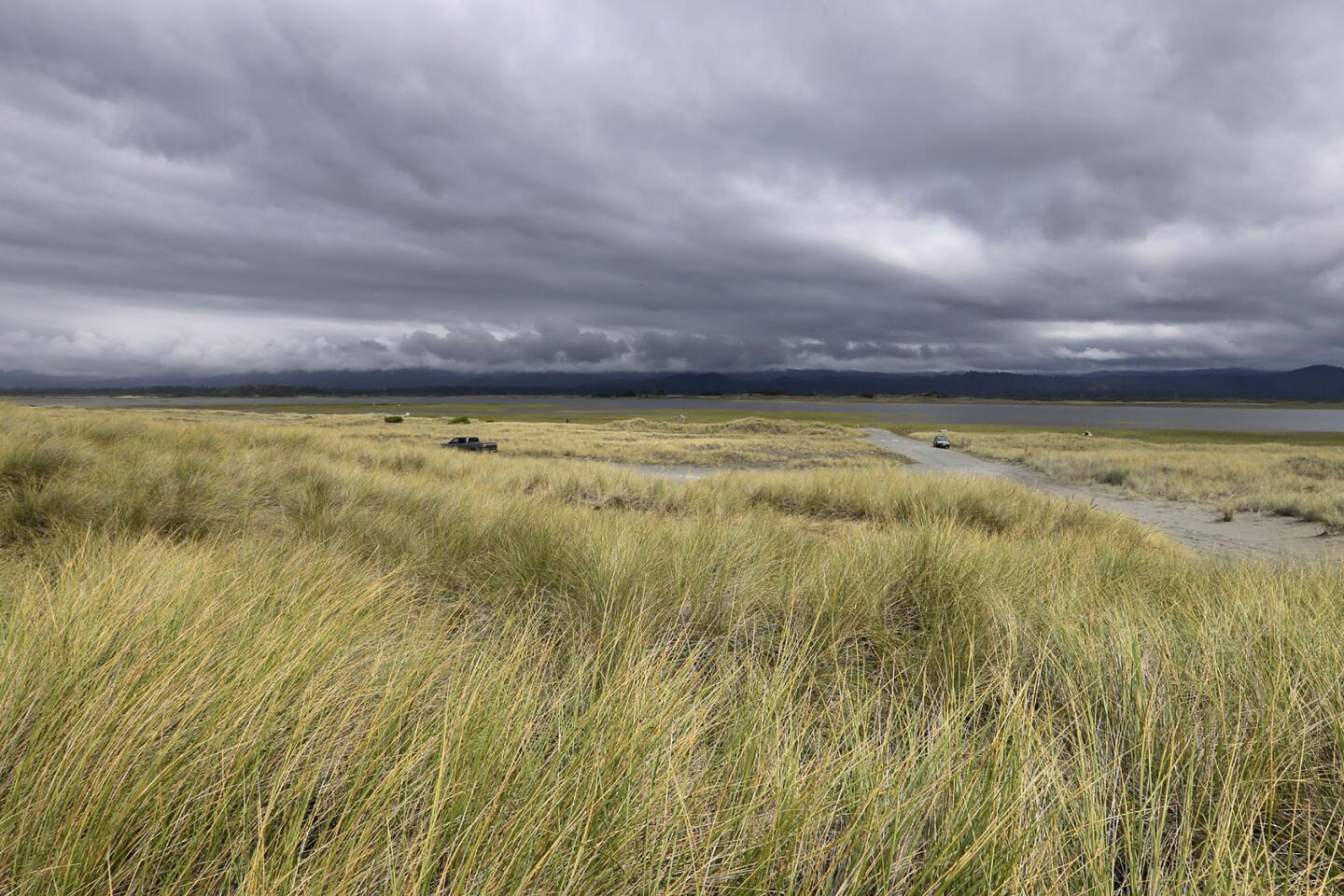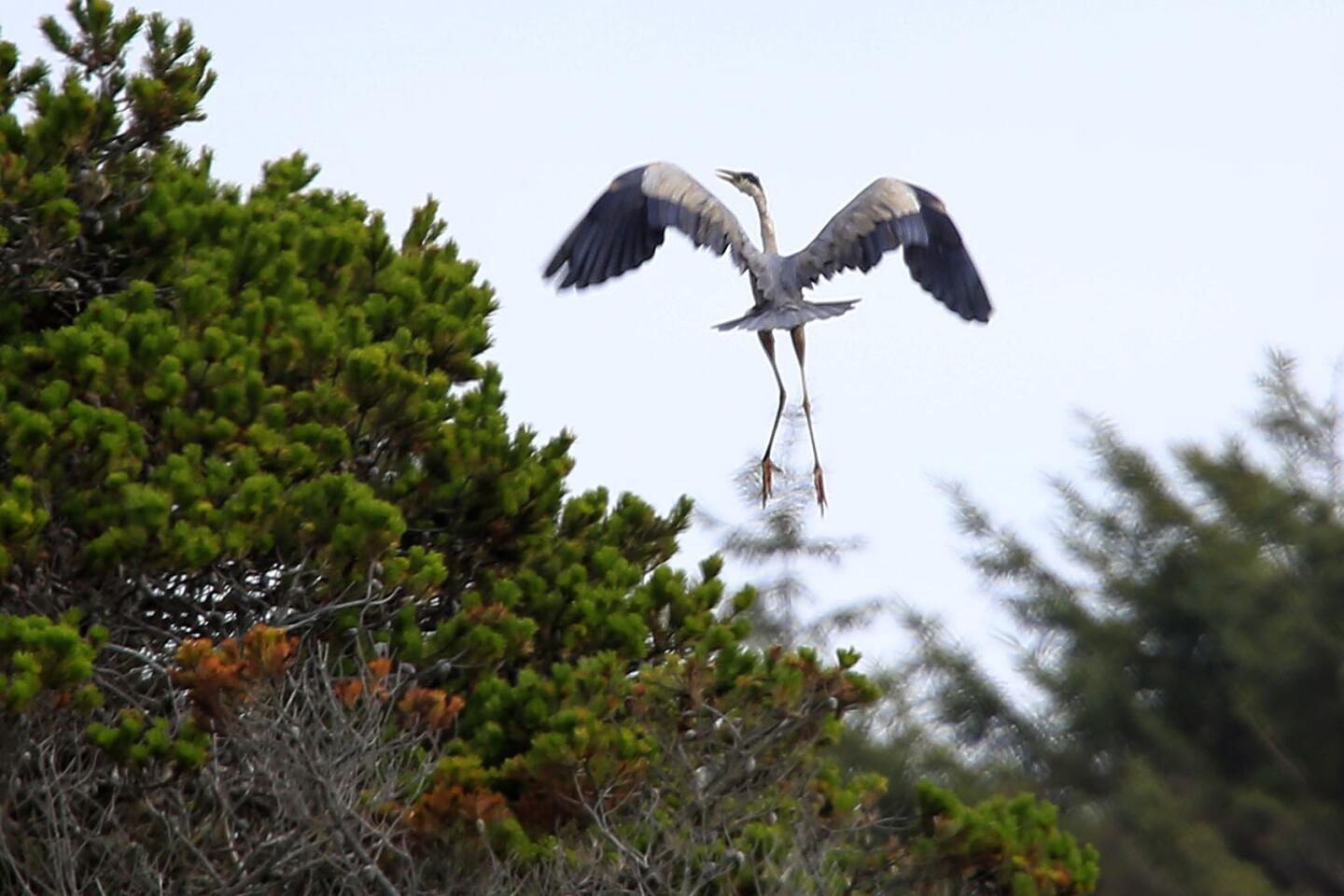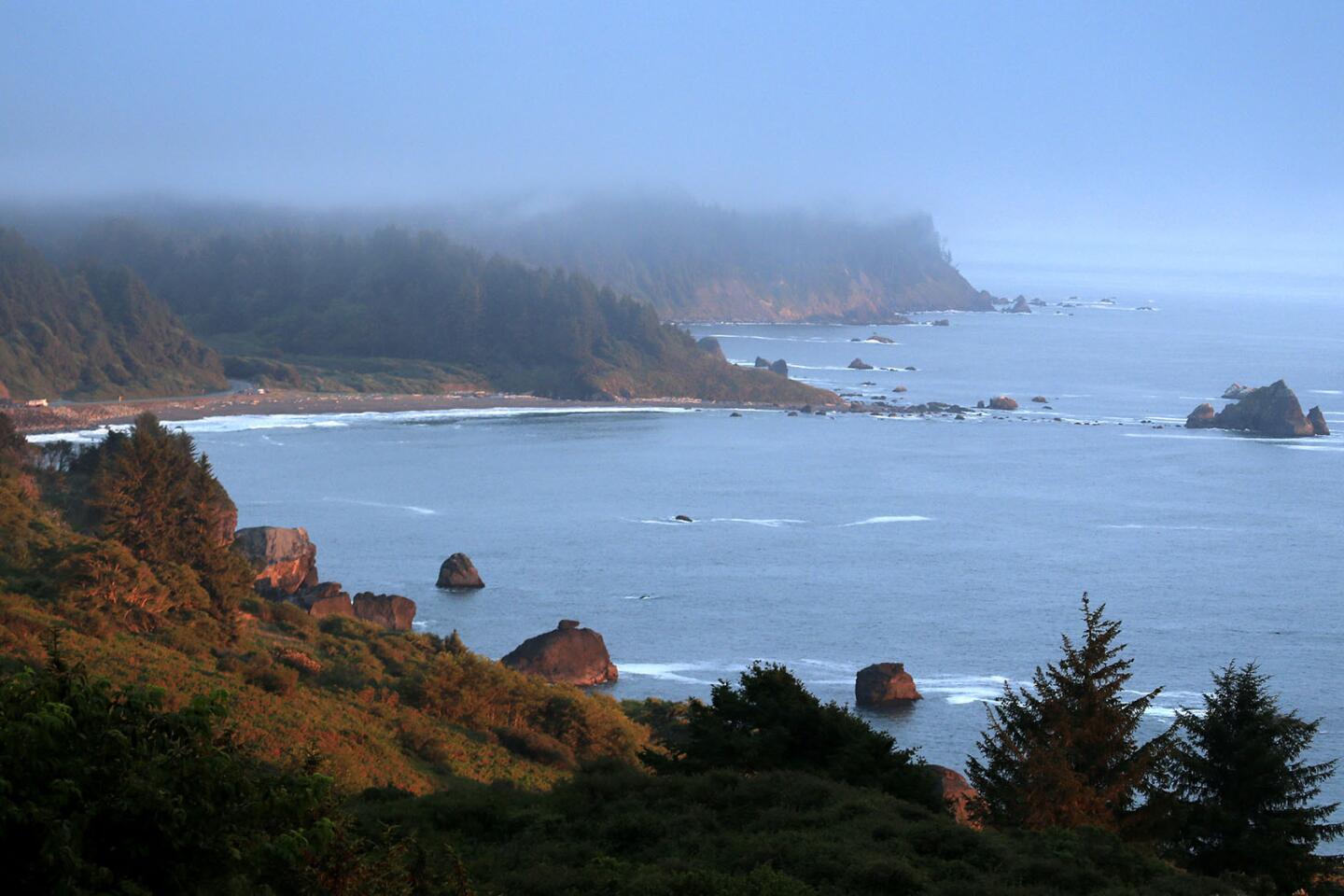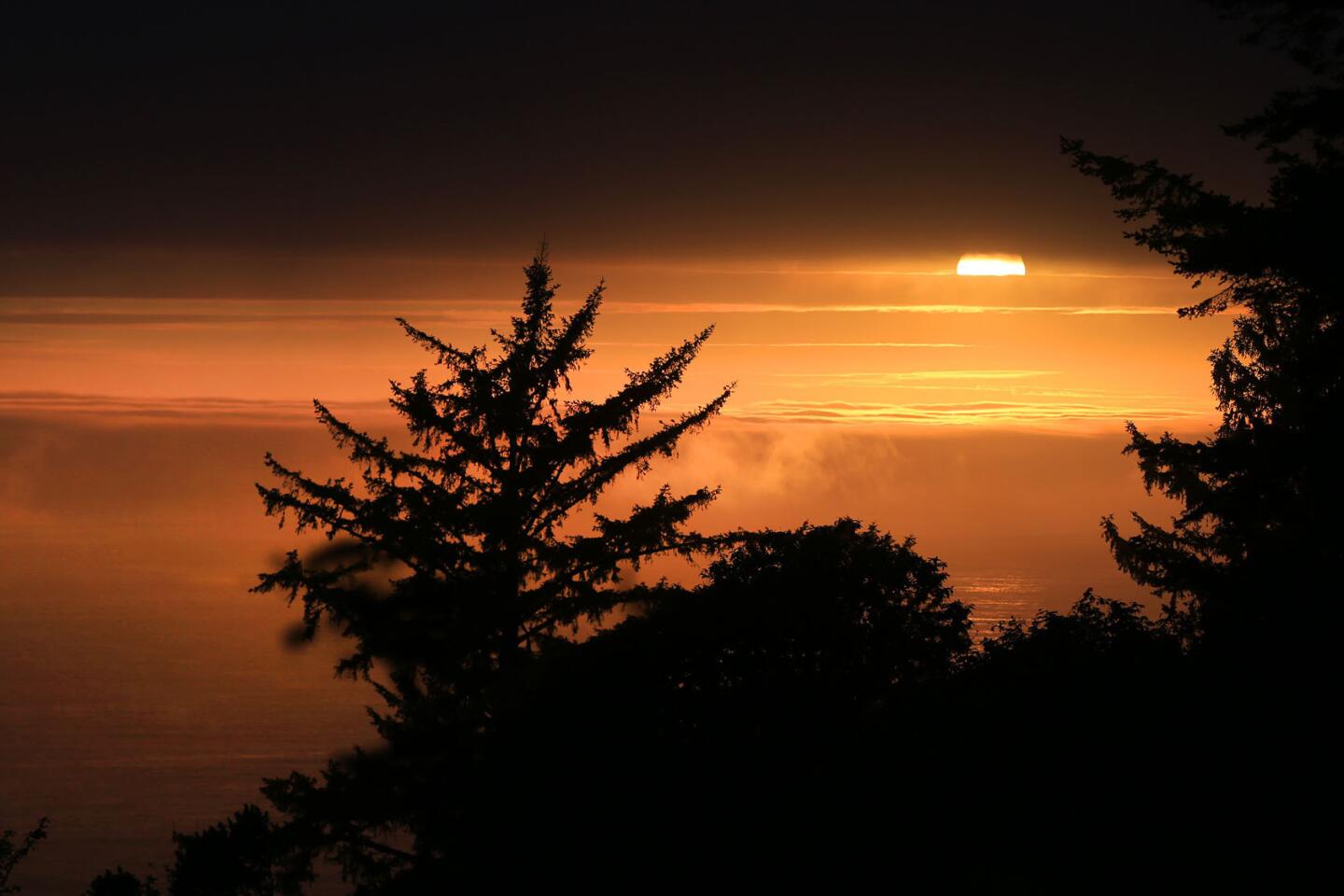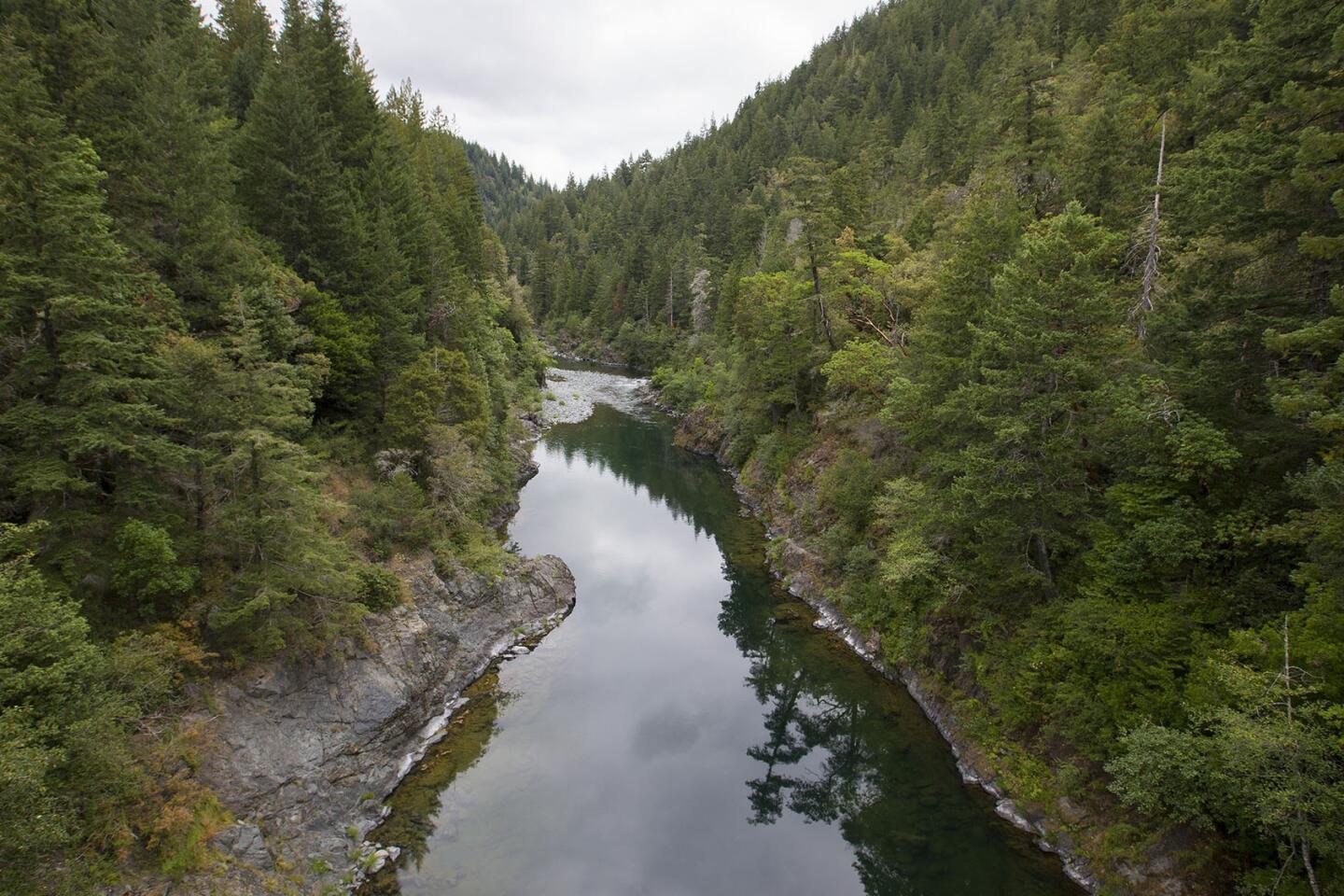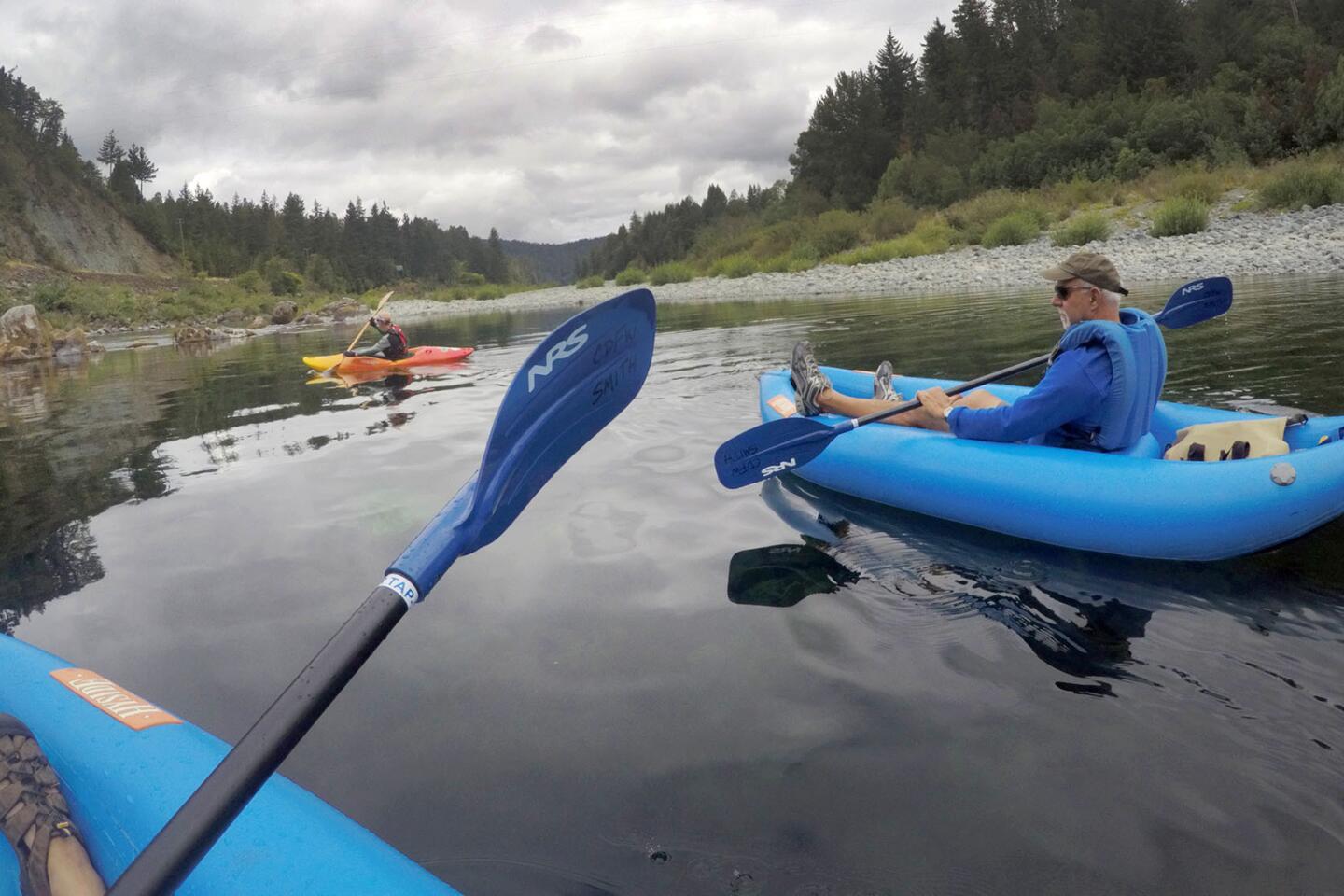If you were a coastal conservation activist in California, with 1,100 miles of shoreline to look after, how would you even decide where to begin?
There’s always a battle somewhere, and let me give you just a couple of examples from one tiny section of the coast.
Moss Landing is in the news again this week as the Surfrider Foundation and other activists try to stop Cemex, an international sand mining company, from trucking away the beach as it has done for decades, causing erosion that has begun to set off lots of alarms.
Live Updates -- Follow along with Steve »
Just south of there and also on Monterey Bay is a former sand mining operation that could soon become the site of a mega-development with nearly 400 hotel rooms and condo units.
Conservation groups are threatening a suit because of damage to the nesting area of a bird protected under the Endangered Species Act, but the developer tells me he’s prepared to begin construction this fall. Catch my column on that one in the next few days.
So much coast to save, so little time.
So on my summer drive from Oregon to Mexico for the 40th anniversary of the Coastal Act, I dropped in on Susan Jordan of the nonprofit California Coastal Protection Network to see how she picks her battles.
There will always be another billionaire who will block access to the beach.
— Susan Jordan, California Coastal Protection Network
Jordan has been a steady presence at the Coastal Commission’s monthly hearings for years. She’s usually situated somewhere in the middle of the audience, listening, taking notes and flipping through stacks of research materials. Other advocates are more inclined toward sandals and Hawaiian shirts. Jordan is dressed like a CEO who means business.
In February, moments before commissioners fired Executive Director Charles Lester, Jordan stepped to the podium in his defense, armed with a warning.
“There will always be another billionaire who will block access to the beach,” she said in her typical straightforward manner.
Lately, fearing a commission tilt that could make more development possible, she has spoken out in support of legislation to ban private meetings between commissioners, developers, lobbyists and even advocates like herself. As she sees it, the development lobby dominates the process, and she’d be happy to see that advantage legislated out of existence.
Given how pulled-together she is in public, you’d expect to find Jordan working from a second-floor office in a corporate building, with a nice view of the water or at least a few paintings of fabulous coastal vistas.
What I want to see is a commission that takes pride in upholding the Coastal Act.
— Susan Jordan
1/121
A woman takes a break from riding her horse on Imperial Beach, one of only a few places along the coast where horses are allowed.
(Allen J. Schaben / Los Angeles Times) 2/121
Palm fronds reveal a surfer, a couple and children taking in sunset at Windansea Beach in La Jolla.
(Allen J. Schaben / Los Angeles Times) 3/121
The tide splashes up on the beach at sunset on a warm summer evening at Windansea Beach in La Jolla.
(Allen J. Schaben / Los Angeles Times) 4/121
Backdropped by San Diego’s skyline, former Sen. James Mills, 89, stands at his Coronado apartment with the bike he rode from Sacramento to San Diego in 1972 to promote Proposition 20, which created the Coastal Commission and led to the Coastal Act.
(Allen J. Schaben / Los Angeles Times) 5/121
Children camping at Campland on the Bay paddle around on body boards in the warm waters of San Diego’s Mission Bay.
(Allen J. Schaben / Los Angeles Times) 6/121
A view from the Torrey Pines Gliderport cliffs, overlooking Black’s Beach and Torrey Pines State Beach in La Jolla.
(Allen J. Schaben / Los Angeles Times) 7/121
A California sea lions basks in the evening sunlight while resting on a rock in the La Jolla Marine Reserve, one of 11 California marine protected areas (MPAs).
(Allen J. Schaben / Los Angeles Times) 8/121
A bod surfer is upended amid the crashing shorebreak at Windansea Beach in La Jolla.
(Allen J. Schaben / Los Angeles Times) 9/121
A surfer heads in by a fire pit, hammock and palapa at dusk at San Onofre State Beach in San Clemente.
(Allen J. Schaben / Los Angeles Times) 10/121
Mila Renieri and Diego Merli of Milan, Italy, play on a homemade teeter-totter at San Onofre State Beach.
(Allen J. Schaben / Los Angeles Times) 11/121
A “no beach access” sign is posted at Dan Blocker Beach scenic viewpoint. The beach is one of several in Malibu that don’t allow public access.
(Allen J. Schaben / Los Angeles Times) 12/121
RV campers have an ocean view, just across from Pacific Coast Highway at the Malibu Beach RV Park in Malibu.
(Allen J. Schaben / Los Angeles Times) 13/121
A kayaker checks out the clear waters of Crescent Bay in Laguna Beach.
(Allen J. Schaben / Los Angeles Times) 14/121
A snorkeler swims around a reef/ rock formation at Crescent Bay, Laguna Beach.
(Allen J. Schaben / Los Angeles Times) 15/121
A snorkeler looks for fish at Crescent Bay in Laguna Beach.
(Allen J. Schaben / Los Angeles Times) 16/121
Garibaldi, the California state fish, swim and feed on rocks at Crescent Bay in Laguna Beach.
(Allen J. Schaben / Los Angeles Times) 17/121
Small fish swim at the reef at Crescent Bay in Laguna Beach.
(Allen J. Schaben / Los Angeles Times) 18/121
A surfer rides a wave at sunset at “Old Man’s” surf break at San Onofre State Beach.
(Allen J. Schaben / Los Angeles Times) 19/121
A bodyboarder rides a wave at Crescent Bay, Laguna Beach.
(Allen J. Schaben / Los Angeles Times) 20/121
Anders Hamborg rides a wave before his shift working as a Huntington Beach city lifeguard on a warm summer day in Huntington Beach. (Allen J. Schaben / Los Angeles Times)
21/121
A view of the beach through a telescope at Pacific City, a new 31-acre mixed use development in Huntington Beach, also known as Surf City U.S.A.
(Allen J. Schaben / Los Angeles Times) 22/121
The site of the proposed Banning Ranch development now before the Calif. Coastal Commission.
(Allen J. Schaben / Los Angeles Times) 23/121
The tide rolls in at twilight at the San Onofre Nuclear Generating Station (SONGS) nuclear power plant located on the border of San Diego County and San Clemente.
(Allen J. Schaben / Los Angeles Times) 24/121
A view of the AES Huntington Beach Generating Station, where an ocean water intake pipe is located that uses a technique of once-through cooling that is harmful to marine life scheduled to be phased out by 2020. The California Coastal Commission is holding a hearing on the proposed Poseidon Huntington beach Desalination project September 7/8. Poseidon would operate next to the AES power plant and use it’s ocean water intake pipe.
(Allen J. Schaben / Los Angeles Times) 25/121
A dolphin leaps out of the water with a view of south Laguna Beach in the background on Aug. 12, 2016.
(Allen J. Schaben / Los Angeles Times) 26/121
A pod of dolphins leaps out of the water with a view of south Laguna Beach in the background on Aug. 12, 2016.
(Allen J. Schaben / Los Angeles Times) 27/121
The Spirit of Dana Point, a traditionally built replica of a 1770s privateer schooner used during the American Revolution, takes a sunset cruise past The Headlands, center, and The Strand at Headlands development, left, in Dana Point. The Coastal Commission approved the 121-acre development known as The Strand at Headlands in 2004, but only after a decades-long fight between conservationists and the developer.
(Allen J. Schaben / Los Angeles Times) 28/121
The orange glow of the setting sun shines through palm trees on a warm summer evening in Heisler Park, Laguna Beach.
(Allen J. Schaben / Los Angeles Times) 29/121
Beach combers enjoy a warm summer evening exploring the ocean and coastline of Main Beach, Laguna Beach.
(Allen J. Schaben / Los Angeles Times) 30/121
Couples enjoy a sunset on a warm summer evening in Heisler Park, Laguna Beach.
(Allen J. Schaben / Los Angeles Times) 31/121
Beach combers are silhouetted by the sky’s glow while exploring the rocks at sunset on a warm summer evening in Heisler Park, Laguna Beach.
(Allen J. Schaben / Los Angeles Times) 32/121
Children run along the beach at twilight near the Crystal Cove Beach Cottages.
(Allen J. Schaben / Los Angeles Times) 33/121
The sun sets over the Crystal Cove Beach Cottages in Newport Beach. (Allen J. Schaben / Los Angeles Times)
34/121
Kayakers take a scenic cruise in Monterey Bay on a summer day in Monterey. In the background, sand dunes line the coast where the proposed hotel and condominium Monterey Bay Shores development in Sand City.
(Allen J. Schaben / Los Angeles Times) 35/121
Isabella, 9, and Holden, 7, roast marshmallows over a beach fire with their parents, Steve and Amy Knuff of Aliso Viejo at twilight at Crystal Cove Beach Cottages.
(Allen J. Schaben / Los Angeles Times) 36/121
Incoming tide rolls onto the beach at twilight at Crystal Cove Beach Cottages. (Allen J. Schaben / Los Angeles Times)
37/121
A photographer captures the sunset over the ocean in Rancho Palos Verdes. (Allen J. Schaben / Los Angeles Times)
38/121
The Point Vicente Lighthouse illuminates the landscape at twilight in Rancho Palos Verdes. (Allen J. Schaben / Los Angeles Times)
39/121
A person climbs up the giant Point Mugu Sand Dune, across from Thornhill Broome Beach State Park in Ventura County.
(Allen J. Schaben / Los Angeles Times) 40/121
Taylor Geer and Marissa Acosta of Thousand Oaks relax on top of the giant Point Mugu Sand Dune, across from Thornhill Broome Beach State Park in Ventura County. (Allen J. Schaben / Los Angeles Times)
41/121
Kids play on a stand-up-paddleboard at Leo Carrillo State Park in Malibu. (Allen J. Schaben / Los Angeles Times)
42/121
Vivienne Lee, 7, of Thousand Oaks, jumps across rocks under the arches of a rock formation while watching the tide roll in at twilight at El Matador State Beach in Malibu. (Allen J. Schaben / Los Angeles Times)
43/121
Keenan Yoo watches the waves crash at twilight at El Matador State Beach in Malibu. (Allen J. Schaben / Los Angeles Times)
44/121
A tidal inlet reflects the surrounding landscape as a couple walk with their dog at twilight along Arroyo Burro Beach County Park in Santa Barbara. (Allen J. Schaben / Los Angeles Times)
45/121
A Blue Heron flies over the Naples State Marine Conservation Area. Phil McKenna, president of the Gaviota Coast Conservancy, says the portion down-coast of Point Conception contains approximately 50% of its remaining rural coastline.
(Allen J. Schaben / Los Angeles Times) 46/121
A man fishes in the ocean at sunset at Arroyo Burro Beach County Park in Santa Barbara.
(Allen J. Schaben / Los Angeles Times) 47/121
A deer takes a break from grazing to look out over the meadow in Cambria.
(Allen J. Schaben / Los Angeles Times) 48/121
A man walking his dog is viewed underneath a Cypress tree canopy over the beach boardwalk along Moonstone Beach in Cambria.
(Allen J. Schaben / Los Angeles Times) 49/121
A surfer rides a wave near a rock formation in Morro Bay.
(Allen J. Schaben / Los Angeles Times) 50/121
The sun, filtered by forest fire ash and fog, goes down at the Morro Bay Marina, with a view of Morro Rock and sailboats.
(Allen J. Schaben / Los Angeles Times) 51/121
Surfers walk down the beach after surfing in front of Morro Rock.
(Allen J. Schaben / Los Angeles Times) 52/121
A windmill lines an undeveloped stretch of coast along Cayucos’ Estero Bay with Morro Rock visible in the background.
(Allen J. Schaben / Los Angeles Times) 53/121
A child bundled up in a thick wetsuit, cap and life jacket, skips to the water’s edge with an adult taking them body boarding in Morro Bay.
(Allen J. Schaben / Los Angeles Times) 54/121
A child toting sand toys heads across the sand dunes at Morro Bay State Park in Morro Bay.
(Allen J. Schaben / Los Angeles Times) 55/121
The tide fills in between jagged rock and cliff formations at Montaña de Oro State Beach in Los Osos.
(Allen J. Schaben / Los Angeles Times) 56/121
The tide fills in between jagged rock and cliff formations at Montaña de Oro State Beach in Los Osos.
(Allen J. Schaben / Los Angeles Times) 57/121
Elephant Seals battle one another on the beach rookery at Piedras Blancas State Marine Reserve, San Simeon.
(Allen J. Schaben / Los Angeles Times) 58/121
A scenic view of the setting sun shining through the fog along the Big Sur coastline. (Allen J. Schaben / Los Angeles Times)
59/121
A scenic view of a waterfall spilling onto the beach at Julia Pfeiffer Burns State Park, Big Sur coastline.
(Allen J. Schaben / Los Angeles Times) 60/121
A scenic view of an iconic California coastline gem, the Bixby Bridge, Big Sur.
(Allen J. Schaben / Los Angeles Times) 61/121
Tourists sit together at a lookout point while exploring the Big Sur coastline.
(Allen J. Schaben / Los Angeles Times) 62/121
A scenic view taken from Rocky Point, looking out over the Big Sur coastline.
(Allen J. Schaben / Los Angeles Times) 63/121
Elephant Seals gather on the beach rookery at Piedras Blancas State Marine Reserve, San Simeon.
(Allen J. Schaben / Los Angeles Times) 64/121
Kayakers take a scenic cruise on Monterey Bay.
(Allen J. Schaben / Los Angeles Times) 65/121
A scenic view of Garrapata State Park in Carmel-by-the-Sea.
(Allen J. Schaben / Los Angeles Times) 66/121
A view of Carmel Sunset Beach on a summer day.
(Allen J. Schaben / Los Angeles Times) 67/121
A child climbs a dune on the site of a proposed, nearly 400-unit hotel and condominium development in Sand City.
(Allen J. Schaben / Los Angeles Times) 68/121
A Western snowy plover, a threatened species protected under the Endangered Species Act, stands amid critical habitat at the site of the proposed Monterey Bay Shores condo and hotel development in Sand City.
(Allen J. Schaben / Los Angeles Times) 69/121
Amid fog, Mark Massara, a decades-long coastal steward, surfs in front of Shark Tooth Rock at Martins Beach, where an access gate remains locked despite a judge’s order to landowner Vinod Khosla to to open the private gate and allow public access to the beach.
(Allen J. Schaben / Los Angeles Times) 70/121
Los Angeles Times columnist Steve Lopez revisits Santa Cruz, where he surfed as a boy.
(Allen J. Schaben / Los Angeles Times) 71/121
Los Angeles Times columnist Steve Lopez surfs in Santa Cruz.
(Allen J. Schaben / Los Angeles Times) 72/121
The sun illuminates the incoming tide as a child plays in the water near Twin Lakes State Beach in Santa Cruz.
(Allen J. Schaben / Los Angeles Times) 73/121
A harbor seal lets out a yawn while relaxing on the rocks at Pigeon Point Light Station near Santa Cruz.
(Allen J. Schaben / Los Angeles Times) 74/121
A sailor heads out to sea from Santa Cruz.
(Allen J. Schaben / Los Angeles Times) 75/121
A mural on a beach cottage wall at Martins Beach, where an access gate remains locked despite a judge’s order to landowner Vinod Khosla to to open the private gate and allow public access to the beach. (Allen J. Schaben / Los Angeles Times)
76/121
The sun sets as a crew team glides through the water near Lighthouse Point in Santa Cruz.
(Allen J. Schaben / Los Angeles Times) 77/121
A tourist takes in the coastline scenery at Pigeon Point Light Station near Santa Cruz. (Allen J. Schaben / Los Angeles Times)
78/121
A view of the scenic Pigeon Point Light Station State Historic Park in Pescadero.
(Allen J. Schaben / Los Angeles Times) 79/121
Sailboats and stand-up-paddle boarders share the water off Lighthouse Point in Santa Cruz.
(Allen J. Schaben / Los Angeles Times) 80/121
Ash from a nearby forest fire creates a yellow-hued sky at sunset at Natural Bridges State Beach in Santa Cruz.
(Allen J. Schaben / Los Angeles Times) 81/121
A view of one of California’s most beloved coastal gems: the Golden Gate Bridge and San Francisco skyline from the Golden Gate National Recreation Area.
(Allen J. Schaben / Los Angeles Times) 82/121
An egret searches for breakfast on a foggy morning at Bolinas Lagoon Nature Preserve in Stinson Beach.
(Allen J. Schaben / Los Angeles Times) 83/121
A family walks across the beach amid the fog at Dunes Beach in Half Moon Bay.
(Allen J. Schaben / Los Angeles Times) 84/121
A man checking the surf is silhouetted by evening sunshine reflecting off the ocean amid fog at Dunes Beach in Half Moon Bay.
(Allen J. Schaben / Los Angeles Times) 85/121
Harbor Seals relax in the mud at low tide on a foggy morning at Bolinas Lagoon Nature Preserve in Stinson Beach.
(Allen J. Schaben / Los Angeles Times) 86/121
A crab crawls through the mud at low tide at Bolinas Lagoon Nature Preserve in Stinson Beach.
(Allen J. Schaben / Los Angeles Times) 87/121
White pelicans and sea gulls perch on a sand bar in Drakes Estero, Point Reyes National Seashore.
(Allen J. Schaben / Los Angeles Times) 88/121
Los Angeles Times columnist Steve Lopez, left, gets a kayak tour through the eel grass from Amy Trainer, right, deputy director California Coastal Protection Network.
(Allen J. Schaben / Los Angeles Times) 89/121
A coyote hunts for food along the shore in Drakes Estero, Point Reyes National Seashore.
(Allen J. Schaben / Los Angeles Times) 90/121
Tom Baty, a local environmentalist, has a collection of Japanese glass fishing floats he found on the beach over the years. They are used to hold up fishing nets.
(Allen J. Schaben / Los Angeles Times) 91/121
Tom Baty has been involved in the fight to close the oyster farm on Drakes Estero, Point Reyes National Seashore.
(Allen J. Schaben / Los Angeles Times) 92/121
A harbor seal checks out kayakers in Drakes Estero, Point Reyes National Seashore.
(Allen J. Schaben / Los Angeles Times) 93/121
Steve Lopez, left, gets a kayak tour from Amy Trainer, in white kayak, Brett Miller and Cicely Muldoon.
(Allen J. Schaben / Los Angeles Times) 94/121
Remnants of oyster racks are part of a restoration project to remove 470 tons of marine debris and 5 miles of oyster racks in Drakes Estero
(Allen J. Schaben / Los Angeles Times) 95/121
Amy Trainer, deputy director California Coastal Protection Network, kayaks past oyster racks in Drakes Estero.
(Allen J. Schaben / Los Angeles Times) 96/121
Amy Trainer, deputy director California Coastal Protection Network, kayaks past oyster racks in Drakes Estero.
(Allen J. Schaben / Los Angeles Times) 97/121
The tide pools at the scenic Shell Beach in Sea Ranch, Calif. Sea Ranch rallied a generation of coastal stewards demanding public access to the rugged and scenic beauty on the Sonoma County coast.
(Allen J. Schaben / Los Angeles Times) 98/121
A view of flowers overlooking the Pacific Ocean at Bodega Head, Bodega Bay.
(Allen J. Schaben / Los Angeles Times) 99/121
A blue heron perches on a branch at The Hole in Bodega Head that was meant to hold a nuclear power plant. Photo taken at Bodega Head, Bodega Bay, Calif.
(Allen J. Schaben / Los Angeles Times) 100/121
A view of the rugged beauty of the Sonoma County coast.
(Allen J. Schaben / Los Angeles Times) 101/121
Couples take a scenic walk on the beach in Crescent City.
(Allen J. Schaben / Los Angeles Times) 102/121
The rocky coastline of Shelter Cove.
(Allen J. Schaben / Los Angeles Times) 103/121
Fog partially obscures the high cliffs of the Lost Coast, where early conservation activists fought development in Shelter Cove.
(Allen J. Schaben / Los Angeles Times) 104/121
A woman watches the tide roll in on Black Sands Beach in Shelter Cove along the Lost Coast.
(Allen J. Schaben / Los Angeles Times) 105/121
A woman walks along Black Sands Beach in Shelter Cove.
(Allen J. Schaben / Los Angeles Times) 106/121
An evening view of the Mendocino County coastline in Northern California.
(Allen J. Schaben / Los Angeles Times) 107/121
A full moon rises at dusk over the protected Ma-le’l Dunes in Arcata, which contain eight distinct habitats.
(Allen J. Schaben / Los Angeles Times) 108/121
Sunset illuminates Battery Point Lighthouse and sea stacks in Crescent City on July 18, 2016. (Allen J. Schaben / Los Angeles Times)
109/121
A surfer heads out at sunset to catch a wave near a sea stack in Crescent City on July 18, 2016. (Allen J. Schaben / Los Angeles Times)
110/121
Flowers overlooking Enderts Beach near Crescent City on July 19, 2016. (Allen J. Schaben / Los Angeles Times)
111/121
The Battery Point Lighthouse illuminates the night sky near sea stacks in Crescent City on July 18, 2016. (Allen J. Schaben / Los Angeles Times)
112/121
A couple walks along the beach at Pelican Bay State Beach after crossing the California border from Oregon on July 18, 2016.
(Allen J. Schaben / Los Angeles Times) 113/121
Empty half-acre lots and paved roads are now part of the Lake Earl Wildlife Area on July 18, 2016.
(Allen J. Schaben / Los Angeles Times) 114/121
A blue heron lands on a tree branch amid the rich habitat of the south Lake Earl Wildlife Area, which was formerly private Bliss Ranch and is now public land near Crescent City on July 18, 2016.
(Allen J. Schaben / Los Angeles Times) 115/121
Water ripples among reeds in the near-empty half-acre lots and paved roads that are now part of the Lake Earl Wildlife Area.
(Allen J. Schaben / Los Angeles Times) 116/121
Sunset illuminates sea stacks and the coastline at False Klamath Cove in Redwood National Park near Crescent City on July 18, 2016.
(Allen J. Schaben / Los Angeles Times) 117/121
The sun sets behind trees at False Klamath Cove in Redwood National Park near Crescent City on July 18, 2016.
(Allen J. Schaben / Los Angeles Times) 118/121
A view of the Smith River National Recreation Area in Jedediah Smith Redwoods State Park on July 19, 2016. (Allen J. Schaben / Los Angeles Times)
119/121
Times columnist Steve Lopez, right, kayaks with Grant Werschkull, left, co-executive director of the Smith River Alliance, on the Smith River National Recreation Area in Jedediah Smith Redwoods State Park on July 19, 2016. (Allen J. Schaben / Los Angeles Times)
120/121
An elk grazes in the meadow at sunset in Prairie Creek Redwoods State Park on July 19, 2016.
(Allen J. Schaben / Los Angeles Times) 121/121
Patterns formed by the wind and bird footprints in the sand at the Ma-le’l Dunes North, which contains eight different habitats, in Arcata on July 19, 2016. The dunes are highlighted as a victory for the coast after a years-long fight by conservationists to keep off-highway vehicles off the unique sand dunes.
(Allen J. Schaben / Los Angeles Times) Instead, the headquarters of her nonprofit is a small nook in the kitchen of a modest home in the Santa Barbara foothills. And I mean nook. Her “office” is 3 feet from the oven, with files in boxes, and she splits the tiny space with two small rescue dogs who nap at her feet.
There is no staff, although she hired a Sacramento-based legislative director — Amy Trainer — this past spring. But there is what she refers to as “the team.”
Lately, she’s been doing research on how to best preserve what little is left of funky beach towns and increase access for those who have been priced out of summer vacations by the corporatization of lodging and rising room rates.
And she’s been strategizing with kindred spirits to prepare for a September hearing on two of the most controversial projects awaiting Coastal Commission votes.
One is the gargantuan Newport Banning Ranch development, and the other is the proposed Poseidon desalination plant in Huntington Beach. Jordan has issues with both, centered on all her usual concerns:
The impact on plant, animal and sea life, and the high cost of desalinated water to those who could least afford it.
The impact on ever-diminishing open space.
And the impact and influence of politics and money on the decision-making process when roughly $1 billion is at stake on each project.
So much coast to save, so little time.
“You need to have someone who is there on a regular basis,” said former Coastal Commissioner Sara Wan. “You have people who come occasionally but don’t really know what’s going on. They might understand their particular issue but not the commission and how it functions.”
Jordan has had an impact, said Wan, by speaking up for the Coastal Act and challenging those who don’t respect it, sometimes to establish a foundation for legal challenges of commission decisions. Even when Jordan doesn’t win, Wan said, she can sometimes influence compromises.
Some commissioners would no doubt love to see Jordan find another line of work. But to Wan’s mind, Jordan has enough credibility that critics can’t easily dismiss her.
“There is no way she has not had an impact,” said Wan.
Jordan had a successful career as a market researcher until the 1990s, when she was living in Manhattan Beach and opened the L.A. Times one day to see a story by Richard Paddock about underwater sound-blasting tests that could make whales deaf.
“I read it and said, ‘Oh my God, this is the worst idea I’ve ever heard,’” said Jordan, who reached out to a scientist for backup and began working to defeat the plan.
Another battle took place at San Simeon. Jordan, raised on the East Coast, was awestruck by the Central Coast’s beauty and dumbstruck by a Hearst Corp. plan to build several mega-resorts and a 27-hole golf course at the water’s edge and double Highway 1 from two lanes to four. She joined a successful fight to swamp that plan, and later started the nonprofit she has run ever since.
Two more big victories included the fight against a proposed floating liquefied natural gas facility off the Ventura County coast and construction of a toll road through the park at San Onofre State Beach.
Upcoming decisions on Newport Banning Ranch and the Huntington Beach desalination plant “will be bellwethers” on how this commission thinks and where it’s headed, Jordan said.
“What I want to see is a commission that takes pride in upholding the Coastal Act,” said Jordan. “I want them to put up a hand and say this project doesn’t meet the act and this is what you have to do to make it meet the requirements. I want to see a commission that works in collaboration with its staff. I want to see reform and I want to see [private meetings] banned because there’s not a level playing field here.”
In September, she will pack up her files in the kitchen nook, drive to the Coastal Commission hearing in Newport Beach, and make her presence known.
steve.lopez@latimes.com | Follow on Twitter: @LATstevelopez
Weigh in at @JerryBrownGov #SaveYourCoast and (916 445-2841) or email governor@governor.ca.gov.
MORE FROM THE ROAD TRIP
Why California’s northern coast doesn’t look like Atlantic City
California’s coast: How we come to care and why we sometimes go wrong
Our road tripping columnist confronts the dark side of oyster farming and the beauty of breaching whales



